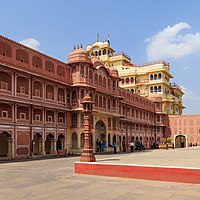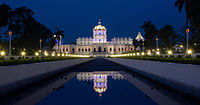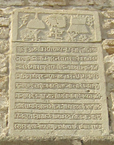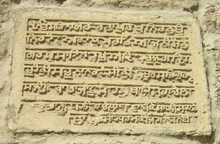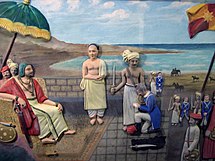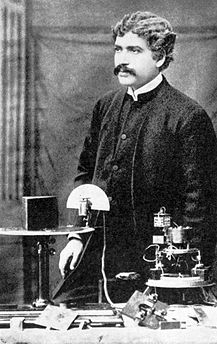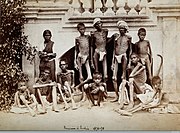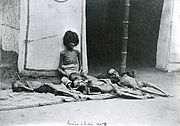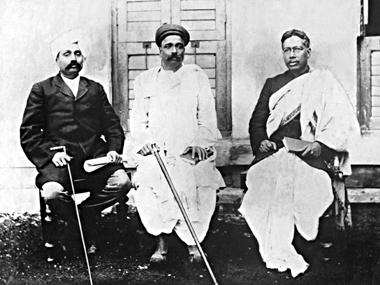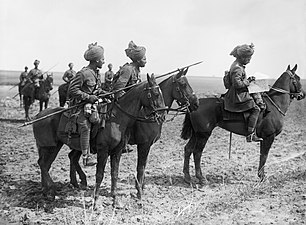History of India
Anatomically modern humans are thought to have arrived on the Indian subcontinent from Africa between 73,000 and 55,000 years ago.[1] Settled life, which involves the transition from foraging to farming and pastoralism, began in South Asia around 7,000 BCE. At the site of Mehrgarh, Balochistan, presence can be documented of the domestication of wheat and barley, rapidly followed by that of goats, sheep, and cattle.[2] By 4,500 BCE, settled life had become more widely prevalent,[2] and eventually evolved into the Indus Valley Civilization, an early civilization of the Old world, contemporaneous with Ancient Egypt and Mesopotamia. It flourished between 2,500 BCE and 1900 BCE in what today is Pakistan and north-western India, and was noted for its urban planning, baked brick houses, elaborate drainage, and water supply.[3]
In the beginning of the second millennium BCE climate change, with persistent drought, lead to the abandonment of the urban centers of the Indus Valley Civilisation. Its population resettled in smaller villages, and, in the north-west, mixed with Indo-Aryan tribes, who moved into the area in several waves of migration, also driven by the effects of this climate change. The Vedic period was marked by the composition of the Vedas, large collections of hymns of some of the Aryan tribes, whose postulated religious culture, through synthesis with the preexisting religious cultures of the subcontinent, gave rise to Hinduism. The caste system, which created a hierarchy of priests, warriors, and free peasants, but which excluded indigenous peoples by labeling their occupations impure, arose later during this period. Towards the end of the period, around the sixth century BCE, a second urbanisation took place with the consolidation of small kingdoms (janapadas) into larger states called mahajanapadas. This renewed urbanisation led to the rise of new ascetic or Śramaṇa movements, including Jainism and Buddhism, which challenged the orthodoxy of rituals,[4] and gave rise to new religious concepts.[5]
Most of the Indian subcontinent was conquered by the Maurya Empire during the 4th and 3rd centuries BCE. From the 3rd century BCE onwards Prakrit and Pali literature in the north and the Tamil Sangam literature in southern India started to flourish.[6][7] Wootz steel originated in south India in the 3rd century BCE and was exported to foreign countries.[8][9][10] During the Classical period, various parts of India were ruled by numerous dynasties for the next 1,500 years, among which the Gupta Empire stands out. This period, witnessing a Hindu religious and intellectual resurgence, is known as the classical or "Golden Age of India". During this period, aspects of Indian civilisation, administration, culture, and religion spread to much of Asia, while kingdoms in southern India had maritime trade with the Middle East and the Mediterranean. In many parts of Southeast Asia, Indian cultural influence led to the establishment of Indianised kingdoms (Greater India).[11][12]
The most significant event between the 7th and 11th century was the Tripartite struggle centred on Kannauj that lasted for more than two centuries between the Pala Empire, Rashtrakuta Empire, and Gurjara-Pratihara Empire. Southern India saw the rise of multiple imperial powers from the middle of the fifth century, most notably the Chalukya, Chola, Pallava, Chera, Pandyan, and Western Chalukya Empires. The Chola dynasty conquered southern India and successfully invaded parts of Southeast Asia, Sri Lanka, the Maldives, and Bengal[13] in the 11th century.[14][15] In the early medieval period Indian mathematics, including Hindu numerals, influenced the development of mathematics and astronomy in the Arab world.[16]
Islamic conquests made limited inroads into modern Afghanistan and Sindh as early as the 8th century,[17] and the Delhi Sultanate was founded in 1206 CE by Central Asian Turks who ruled a major part of the northern Indian subcontinent in the early 14th century, but declined in the late 14th century.[18] This period also saw the emergence of several powerful Hindu states, notably Vijayanagara, Gajapati, and Ahom, as well as Rajput states, such as Mewar. The 15th century saw the advent of Sikhism. The early modern period began in the 16th century, when the Mughal Empire conquered most of the Indian subcontinent.[19] The Mughals suffered a gradual decline in the early 18th century, which provided opportunities for the Marathas, Sikhs and Mysoreans to exercise control over large regions of the subcontinent.[20][21]
From the late 18th century to the mid-19th century, large areas of India were annexed by the British East India Company of the British Empire. Dissatisfaction with Company rule led to the Indian Rebellion of 1857, after which the British provinces of India were directly administered by the British Crown and witnessed a period of rapid development of infrastructure, economic decline and major famines.[22][23][24][25][26] During the first half of the 20th century, a nationwide struggle for independence was launched, led by the Indian National Congress, which was later joined by other organisations. The Indian subcontinent gained independence from the United Kingdom in 1947, after the British provinces were partitioned into the dominions of India and Pakistan and the princely states all acceded to one of the new states.
Contents
- 1 Prehistoric era (until c. 3300 BCE)
- 2 Bronze Age - "First urbanisation" (c. 3300 – c. 1800 BCE)
- 3 Climate change, de-urbanisation, and Indo-Aryan migrations (c.1800 - 1500 BCE)
- 4 Iron Age - Vedic period (c. 1500 – c. 600 BCE)
- 5 "Second urbanisation" (c. 600 – c. 200 BCE)
- 6 Classical to early medieval periods (c. 200 BCE – c. 1200 CE)
- 7 Late medieval period (c. 1200 – 1526 CE)
- 8 Early modern period (c. 1526–1858 CE)
- 9 Modern period and independence (after c. 1850 CE)
- 10 Historiography
- 11 See also
- 12 References
- 13 Further reading
- 14 External links
Prehistoric era (until c. 3300 BCE)[edit]
Paleolithicum[edit]
Hominins expansion from Africa is estimated to have reached the Indian subcontinent approximately two million years ago, and possibly as early as 2.2 millions years before the present.[27][28][29] This dating is based on the known presence of Homo erectus in Indonesia by 1.8 million years before the present, and in East Asia by 1.36 million years before present, as well as the discovery of stone tools made my proto-humans in the Soan River valley, at Riwat, and in the Pabbi Hills, all in present-day Pakistan.[28][30] Although some older discoveries have been claimed, the suggested dates, based on the dating of fluvial sediments, has not been independently verified.[31][29]
The oldest hominini fossil remains in the Indian subcontinent are those of Homo erectus or Homo heidelbergensis, from the Narmada Valley in central India, and are dated to approximately half a million years ago.[28][31] Older fossil finds have been claimed, but are considered unreliable.[31] Reviews of archaeological evidence have suggested that occupation of the Indian subcontinent by hominins was sporadic until approximately 700,000 years ago, and was geographically widespread by approximately 250,000 years before the present, from which point onward archaeological evidence of proto-human presence is widely point.[31][29]
Archaeological evidence has been interpreted to suggest the presence of anatomically modern humans in the Indian subcontinent 78,000–74,000 years ago,[32] although this interpretation is disputed.[33][34]
Neolithicum[edit]
More extensive settlement of the Indian subcontinent occurred the Neolithic period after the end of the last Ice Age approximately 12,000 years ago. The first confirmed semi-permanent settlements appeared 9,000 years ago in the Bhimbetka rock shelters in modern Madhya Pradesh, India. The Edakkal Caves are pictorial writings believed to date to at least 6,000 BCE,[35][36] from the Neolithic man, indicating the presence of a prehistoric civilisation or settlement in Kerala.[37]
Neolithic agricultural cultures sprang up in the Indus Valley region around 5000 BCE, in the lower Gangetic valley around 3000 BCE, represented by the Bhirrana findings (7570–6200 BCE) in Haryana, India, Lahuradewa findings (7000 BCE) in Uttar Pradesh, India,[38] and Mehrgarh findings (7000–5000 BCE) in Balochistan, Pakistan;[39][40] and later in Southern India, spreading southwards and also northwards into Malwa around 1800 BCE. The first urban civilisation of the region began with the Indus Valley Civilisation.[41]
Bronze Age - "First urbanisation" (c. 3300 – c. 1800 BCE)[edit]
Indus Valley Civilisation[edit]
| Indus Valley Civilisation |
|---|
|
The Bronze Age in the Indian subcontinent began around 3300 BCE. Along with Ancient Egypt and Mesopotamia, the Indus valley region was one of three early cradles of civilisation of the Old World.[43] Of the three, the Indus Valley Civilisation was the most expansive,[43] and at its peak, may have had a population of over five million.[44]
The civilisation was primarily located in modern-day India (Gujarat, Haryana, Punjab, Rajasthan, Uttar Pradesh, Jammu and Kashmir states)[45] and Pakistan (Sindh, Punjab, and Balochistan provinces),[45] while some sites in Afghanistan are believed to be trading colonies.[46] A total of 1,022 cities and settlements had been found by 2008,[45] mainly in the general region of the Indus and Ghaggar-Hakra Rivers, and their tributaries; of which 616 sites are in India and 416 sites are in Pakistan;[45] of these 96 have been excavated.[45]
The Mature Indus civilisation flourished from about 2600 to 1900 BCE, marking the beginning of urban civilisation on the Indian subcontinent. The civilisation included urban centres such as Dholavira, Kalibangan, Ropar, Rakhigarhi, and Lothal in modern-day India, as well as Harappa, Ganeriwala, and Mohenjo-daro in modern-day Pakistan.
Inhabitants of the ancient Indus river valley, the Harappans, developed new techniques in metallurgy and handicraft (carneol products, seal carving), and produced copper, bronze, lead, and tin. The civilisation is noted for its cities built of brick, roadside drainage system, and multi-storeyed houses and is thought to have had some kind of municipal organisation.[47]

Dravidian origins[edit]
Linguists hypothesized that Dravidian-speaking people were spread throughout the Indian subcontinent before a series of Indo-Aryan migrations. In this view, the early Indus Valley civilisation is often identified as having been Dravidian.[48] Cultural and linguistic similarities have been cited by researchers Henry Heras, Kamil Zvelebil, Asko Parpola, and Iravatham Mahadevan as being strong evidence for a proto-Dravidian origin of the ancient Indus Valley civilisation.[49][50] Linguist Asko Parpola writes that the Indus script and Harappan language "most likely to have belonged to the Dravidian family".[51] The Brahui population of Balochistan has been taken by some as the linguistic equivalent of a relict population, perhaps indicating that Dravidian languages were formerly much more widespread and were supplanted by the incoming Indo-Aryan languages.[52]
Climate change, de-urbanisation, and Indo-Aryan migrations (c.1800 - 1500 BCE)[edit]
| Spread of IE-languages |
|---|
| Indo-Aryan migration |
|---|
 The Yamnaya culture 3500–2000 BC.  Scheme of Indo-European migrations from c. 4000 to 1000 BCE according to the Kurgan hypothesis. The magenta area corresponds to the assumed Urheimat (Samara culture, Sredny Stog culture). The red area corresponds to the area which may have been settled by Indo-European-speaking peoples up to c. 2500 BCE; the orange area to 1000 BCE. (Christopher I. Beckwith (2009), Empires of the Silk Road, Oxford University Press, p. 30)  Map of the approximate maximal extent of the Andronovo culture. The formative Sintashta-Petrovka culture is shown in darker red. The location of the earliest spoke-wheeled chariot finds is indicated in purple. Adjacent and overlapping cultures (Afanasevo culture, Srubna culture, BMAC) are shown in green. 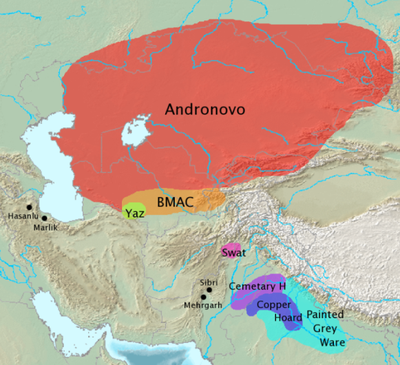 Archaeological cultures associated with Indo-Iranian migrations (after EIEC). The Andronovo, BMAC and Yaz cultures have often been associated with Indo-Iranian migrations. The GGC, Cemetery H, Copper Hoard and PGW cultures are candidates for cultures associated with Indo-Aryan movements. |
In the 2nd millennium BCE widespread aridification occurred in the Eurasian steppes and south Asia.[53][54] Water shortage strongly affected south Asia:
This time was one of great upheaval for ecological reasons. Prolonged failure of rains caused acute water shortage in large areas, causing the collapse of sedentary urban cultures in south central Asia, Afghanistan, Iran, and India, and triggering large-scale migrations. Inevitably, the new arrivals came to merge with and dominate the post-urban cultures.[53]
During the late period of the Indus Valley Civilisation, signs of a gradual decline began to emerge, and by around 1700 BCE, most of the cities were abandoned. As of 2016[update] many scholars believe that drought and a decline in trade with Egypt and Mesopotamia caused the collapse of the Indus Civilisation.[55] The Ghaggar-Hakra system was rain-fed,[56][57][58] and water supply depended on the monsoons. The Indus valley climate grew significantly cooler and drier from about 1800 BCE, linked to a general weakening of the monsoon at that time.[56] The Indian monsoon declined and aridity increased, with the Ghaggar-Hakra retracting its reach towards the foothills of the Himalaya,[56][59][60] leading to erratic and less extensive floods that made inundation agriculture less sustainable. Aridification reduced the water supply enough to cause the civilisation's demise, and to scatter its population eastward.[61][62][63][64]
On the steppes, the vegetation changed, driving "higher mobility and transition to the nomadic cattle breeding."[54][note 1][note 2] Indo-Aryan tribes started to enter the Indian subcontinent, leading to new cultures in north-west India.[65][66]
The Indus Valley Civilisation did not disappear suddenly, and some elements of the Indus Civilisation may have survived, especially in the smaller villages and isolated farms. According to historian Upinder Singh "the general picture presented by the late Harappan phase is one of a breakdown of urban networks and an expansion of rural ones".[67] The Indian Copper Hoard Culture is attributed to this time, associated in the Doab region with the Ochre Coloured Pottery.
Iron Age - Vedic period (c. 1500 – c. 600 BCE)[edit]
The Vedic period is named after the Indo-Aryan culture of north-west India, although other parts of India had a distinct cultural identity during this period. The Vedic culture is described in the texts of Vedas, still sacred to Hindus, which were orally composed in Vedic Sanskrit. The Vedas are some of the oldest extant texts in India.[68] The Vedic period, lasting from about 1500 to 500 BCE,[69][70] contributed the foundations of several cultural aspects of the Indian subcontinent. In terms of culture, many regions of the Indian subcontinent transitioned from the Chalcolithic to the Iron Age in this period.[71]
Vedic society[edit]
| Vedic period |
|---|
|
Historians have analysed the Vedas to posit a Vedic culture in the Punjab region and the upper Gangetic Plain.[71] Most historians also consider this period to have encompassed several waves of Indo-Aryan migration into the Indian subcontinent from the north-west.[74][75] The peepal tree and cow were sanctified by the time of the Atharva Veda.[76] Many of the concepts of Indian philosophy espoused later, like dharma, trace their roots to Vedic antecedents.[77]
Early Vedic society is described in the Rigveda, the oldest Vedic text, believed to have been compiled during 2nd millennium BCE,[78][79] in the northwestern region of the Indian subcontinent.[80] At this time, Aryan society consisted of largely tribal and pastoral groups, distinct from the Harappan urbanisation which had been abandoned.[81] The early Indo-Aryan presence probably corresponds, in part, to the Ochre Coloured Pottery culture in archaeological contexts.[82][83]
At the end of the Rigvedic period, the Aryan society began to expand from the northwestern region of the Indian subcontinent, into the western Ganges plain. It became increasingly agricultural and was socially organised around the hierarchy of the four varnas, or social classes. This social structure was characterised both by syncretising with the native cultures of northern India,[84] but also eventually by the excluding of some indigenous peoples by labeling their occupations impure.[85] During this period, many of the previous small tribal units and chiefdoms began to coalesce into Janapadas (monarchical, state-level polities).[86]
In the 14th century BCE,[87] the Battle of the Ten Kings, between the Puru Vedic Aryan tribal kingdoms of the Bharatas, allied with other tribes of the Northwest India, guided by the royal sage Vishvamitra, and the Trtsu-Bharata (Puru) king Sudas, who defeats other Vedic tribes—leading to the emergence of the Kuru Kingdom, first state level society during the Vedic period.[88]
Janapadas[edit]
The Iron Age in the Indian subcontinent from about 1200 BCE to the 6th century BCE is defined by the rise of Janapadas, which are realms, republics and kingdoms—notably the Iron Age Kingdoms of Kuru, Panchala, Kosala, Videha.[90][91]
The Kuru kingdom was the first state-level society of the Vedic period, corresponding to the beginning of the Iron Age in northwestern India, around 1200–800 BCE,[92] as well as with the composition of the Atharvaveda (the first Indian text to mention iron, as śyāma ayas, literally "black metal").[93] The Kuru state organised the Vedic hymns into collections, and developed the orthodox srauta ritual to uphold the social order.[93] Two key figures of the Kuru state were king Parikshit and his successor Janamejaya, transforming this realm into the dominant political and cultural power of northern Iron Age India.[93] When the Kuru kingdom declined, the centre of Vedic culture shifted to their eastern neighbours, the Panchala kingdom.[93] The archaeological Painted Grey Ware culture, which flourished in the Haryana and western Uttar Pradesh regions of northern India from about 1100 to 600 BCE,[82] is believed to correspond to the Kuru and Panchala kingdoms.[93][94]
During the Late Vedic Period, the kingdom of Videha emerged as a new centre of Vedic culture, situated even farther to the East (in what is today Nepal and Bihar state in India);[83] reaching its prominence under the king Janaka, whose court provided patronage for Brahmin sages and philosophers such as Yajnavalkya, Aruni, and Gargi Vachaknavi.[95] The later part of this period corresponds with a consolidation of increasingly large states and kingdoms, called mahajanapadas, all across Northern India.
Sanskrit Epics[edit]
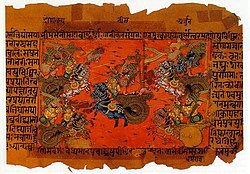
In addition to the Vedas, the principal texts of Hinduism, the core themes of the Sanskrit epics Ramayana and Mahabharata are said to have their ultimate origins during this period.[96] The Mahabharata remains, today, the longest single poem in the world.[97] Historians formerly postulated an "epic age" as the milieu of these two epic poems, but now recognise that the texts (which are both familiar with each other) went through multiple stages of development over centuries. For instance, the Mahabharata may have been based on a small-scale conflict (possibly about 1000 BCE) which was eventually "transformed into a gigantic epic war by bards and poets". There is no conclusive proof from archaeology as to whether the specific events of the Mahabharata have any historical basis.[98] The existing texts of these epics are believed to belong to the post-Vedic age, between c. 400 BCE and 400 CE.[98][99]
"Second urbanisation" (c. 600 – c. 200 BCE)[edit]
During the time between 800 and 200 BCE the Śramaṇa movement formed, from which originated Jainism and Buddhism. In the same period, the first Upanishads were written. After 500 BCE, the so-called "Second urbanisation" started, with new urban settlements arising at the Ganges plain, especially the Central Ganges plain.[100] The foundations for the Second Urbanisation were laid prior to 600 BCE, in the Painted Grey Ware culture of the Ghaggar-Hakra and Upper Ganges Plain; although most PGW sites were small farming villages, "several dozen" PGW sites eventually emerged as relatively large settlements that can be characterized as towns, the largest of which were fortified by ditches or moats and embankments made of piled earth with wooden palisades, albeit smaller and simpler than the elaborately fortified large cities which grew after 600 BCE in the Northern Black Polished Ware culture.[101]
The Central Ganges Plain, where Magadha gained prominence, forming the base of the Mauryan Empire, was a distinct cultural area,[102] with new states arising after 500 BCE[web 1] during the so-called "Second urbanisation".[103][note 3] It was influenced by the Vedic culture,[104] but differed markedly from the Kuru-Panchala region.[102] It "was the area of the earliest known cultivation of rice in South Asia and by 1800 BCE was the location of an advanced Neolithic population associated with the sites of Chirand and Chechar".[105] In this region, the Śramaṇic movements flourished, and Jainism and Buddhism originated.[100]
Upanishads and Śramaṇa movements[edit]
Around 800 BCE to 400 BCE witnessed the composition of the earliest Upanishads.[106][4][107] Upanishads form the theoretical basis of classical Hinduism and are known as Vedanta (conclusion of the Vedas).[108]
Increasing urbanisation of India in 7th and 6th centuries BCE led to the rise of new ascetic or Śramaṇa movements which challenged the orthodoxy of rituals.[4] Mahavira (c. 549–477 BCE), proponent of Jainism, and Gautama Buddha (c. 563–483 BCE), founder of Buddhism were the most prominent icons of this movement. Śramaṇa gave rise to the concept of the cycle of birth and death, the concept of samsara, and the concept of liberation.[109] Buddha found a Middle Way that ameliorated the extreme asceticism found in the Śramaṇa religions.[110]
Around the same time, Mahavira (the 24th Tirthankara in Jainism) propagated a theology that was to later become Jainism.[111] However, Jain orthodoxy believes the teachings of the Tirthankaras predates all known time and scholars believe Parshvanatha (c. 872 – c. 772 BCE), accorded status as the 23rd Tirthankara, was a historical figure. The Vedas are believed to have documented a few Tirthankaras and an ascetic order similar to the Śramaṇa movement.[112]
Mahajanapadas[edit]
The period from c. 600 BCE to c. 300 BCE witnessed the rise of the Mahajanapadas, sixteen powerful and vast kingdoms and oligarchic republics. These Mahajanapadas evolved and flourished in a belt stretching from Gandhara in the northwest to Bengal in the eastern part of the Indian subcontinent and included parts of the trans-Vindhyan region.[113] Ancient Buddhist texts, like the Anguttara Nikaya,[114] make frequent reference to these sixteen great kingdoms and republics—Anga, Assaka, Avanti, Chedi, Gandhara, Kashi, Kamboja, Kosala, Kuru, Magadha, Malla, Matsya (or Machcha), Panchala, Surasena, Vriji, and Vatsa. This period saw the second major rise of urbanism in India after the Indus Valley Civilisation.[115]

Early "republics" or Gaṇa sangha,[116] such as Shakyas, Koliyas, Mallas, and Licchavis had republican governments. Gaṇa sanghas,[116] such as Mallas, centered in the city of Kusinagara, and the Vajjian Confederacy (Vajji), centered in the city of Vaishali, existed as early as the 6th century BCE and persisted in some areas until the 4th century CE.[117] The most famous clan amongst the ruling confederate clans of the Vajji Mahajanapada were the Licchavis.[118]
This period corresponds in an archaeological context to the Northern Black Polished Ware culture. Especially focused in the Central Ganges plain but also spreading across vast areas of the northern and central Indian subcontinent, this culture is characterized by the emergence of large cities with massive fortifications, significant population growth, increased social stratification, wide-ranging trade networks, construction of public architecture and water channels, specialized craft industries (e.g., ivory and carnelian carving), a system of weights, punch-marked coins, and the introduction of writing in the form of Brahmi and Kharosthi scripts.[119][120] The language of the gentry at that time was Sanskrit, while the languages of the general population of northern India are referred to as Prakrits.
Many of the sixteen kingdoms had coalesced into four major ones by 500/400 BCE, by the time of Gautama Buddha. These four were Vatsa, Avanti, Kosala, and Magadha. The life of Gautama Buddha was mainly associated with these four kingdoms.[115]

Early Magadha dynasties[edit]
Magadha formed one of the sixteen Mahā-Janapadas (Sanskrit: "Great Realms") or kingdoms in ancient India. The core of the kingdom was the area of Bihar south of the Ganges; its first capital was Rajagriha (modern Rajgir) then Pataliputra (modern Patna). Magadha expanded to include most of Bihar and Bengal with the conquest of Licchavi and Anga respectively,[122] followed by much of eastern Uttar Pradesh and Orissa. The ancient kingdom of Magadha is heavily mentioned in Jain and Buddhist texts. It is also mentioned in the Ramayana, Mahabharata and Puranas.[123] The earliest reference to the Magadha people occurs in the Atharva-Veda where they are found listed along with the Angas, Gandharis, and Mujavats. Magadha played an important role in the development of Jainism and Buddhism. The Magadha kingdom included republican communities such as the community of Rajakumara. Villages had their own assemblies under their local chiefs called Gramakas. Their administrations were divided into executive, judicial, and military functions.
Early sources, from the Buddhist Pāli Canon, the Jain Agamas and the Hindu Puranas, mentions Magadha being ruled by the Haryanka dynasty for some 200 years, c. 600–413 BCE. King Bimbisara of the Haryanka dynasty led an active and expansive policy, conquering Anga in what is now eastern Bihar and West Bengal. King Bimbisara was overthrown and killed by his son, Prince Ajatashatru, who continued the expansionist policy of Magadha. During this period, Gautama Buddha, the founder of Buddhism, lived much of his life in Magadha kingdom. He attained enlightenment in Bodh Gaya, gave his first sermon in Sarnath and the first Buddhist council was held in Rajgriha.[124] The Haryanka dynasty was overthrown by the Shishunaga dynasty. The last Shishunaga ruler, Kalasoka, was assassinated by Mahapadma Nanda in 345 BCE, the first of the so-called Nine Nandas, which were Mahapadma and his eight sons.
The Nanda Empire, at its greatest extent, extended from Bengal in the east, to the Punjab region in the west and as far south as the Vindhya Range.[125] The Nanda dynasty was famed for their great wealth. The Nanda dynasty built on the foundations laid by their Haryanka and Shishunaga predecessors to create the first great empire of north India.[126] To achieve this objective they built a vast army, consisting of 200,000 infantry, 20,000 cavalry, 2,000 war chariots and 3,000 war elephants (at the lowest estimates).[127][128][129] According to the Greek historian Plutarch, the size of the Nanda army was even larger, numbering 200,000 infantry, 80,000 cavalry, 8,000 war chariots, and 6,000 war elephants.[128][130] However, the Nanda Empire did not have the opportunity to see their army face Alexander, who invaded north-western India at the time of Dhana Nanda, since Alexander was forced to confine his campaign to the plains of Punjab and Sindh, for his forces mutinied at the river Beas and refused to go any further upon encountering Nanda and Gangaridai forces.[128]
Persians and Greeks in northwest South Asia[edit]
In 530 BCE Cyrus the Great, King of the Persian Achaemenid Empire crossed the Hindu-Kush mountains to seek tribute from the tribes of Kamboja, Gandhara and the trans-India region (modern Afghanistan and Pakistan).[131] By 520 BCE, during the reign of Darius I of Persia, much of the north-western Indian subcontinent (present-day eastern Afghanistan and Pakistan) came under the rule of the Persian Achaemenid Empire, as part of the far easternmost territories. The area remained under Persian control for two centuries.[132] During this time India supplied soldiers to the Achaemenid army for the Second Persian invasion of Greece (480-479 BCE).[131] Under Persian rule the famous University of Ancient Taxila became a centre where both Vedic and Achaemenid learning were mingled.[133] Persian ascendency in North-western South Asia ended with Alexander the Great's conquest of Persia in 327 BCE.[134]
By 326 BCE, Alexander the Great had conquered Asia Minor and the Achaemenid Empire and had reached the northwest frontiers of the Indian subcontinent. There he defeated King Porus in the Battle of the Hydaspes (near modern-day Jhelum, Pakistan) and conquered much of the Punjab.[135] After gaining control of the former Achaemenid satrapy of Gandhara, including the city of Taxila, Alexander advanced into Punjab, where he engaged in battle against the regional king Porus, whom Alexander defeated in the Battle of the Hydaspes in 326 BC,[136][137] but was so impressed by the demeanor with which the king carried himself that he allowed Porus to continue governing his own kingdom as a satrap.[138] Although victorious, Battle of the Hydaspes was also the most costly battle fought by the Macedonians.[139] Alexander's march east put him in confrontation with the Nanda Empire of Magadha and the Gangaridai of Bengal. According to the Greek sources, the Nanda army was five times larger than the Macedonian army.[140] His army, exhausted and frightened by the prospect of facing larger Indian armies at the Ganges River, mutinied at the Hyphasis (modern Beas River) and refused to march further East. Alexander, after the meeting with his officer, Coenus, and after learning about the might of the Nanda Empire, was convinced that it was better to return.
The Persian and Greek invasions had repercussions in the north-western regions of the Indian subcontinent. The region of Gandhara, or present-day eastern Afghanistan and north-west Pakistan, became a melting pot of Indian, Persian, Central Asian, and Greek cultures and gave rise to a hybrid culture, Greco-Buddhism, which lasted until the 5th century CE and influenced the artistic development of Mahayana Buddhism.
Ancient Indian warriors (from left to right: Sattagydian, Gandharan, Hindush) circa 480 BCE. Naqsh-e Rostam reliefs of Xerxes I.
𓉔𓈖𓂧𓍯𓇌
H-n-d-wꜢ-y
"India" written in Egyptian hieroglyphs on the Statue of Darius I, circa 500 BCE.[141]Chandraketugarh in West Bengal, India is believed to be the capital of Gangaridai. The Gangaridai army, with its 4,000 elephant force, may have led to Alexander's retreat from India.[142]
Asia in 323 BCE, the Nanda Empire and the Gangaridai in relation to Alexander's Empire and neighbours.
Maurya Empire[edit]
The Maurya Empire (322–185 BCE) unified most of the Indian subcontinent into one state, and was the largest empire ever to exist on the Indian subcontinent.[143] At its greatest extent, the Mauryan Empire stretched to the north up to the natural boundaries of the Himalayas and to the east into what is now Assam. To the west, it reached beyond modern Pakistan, to the Hindu Kush mountains in what is now Afghanistan. The empire was established by Chandragupta Maurya assisted by Chanakya (Kautilya) in Magadha (in modern Bihar) when he overthrew the Nanda dynasty.[144]
Chandragupta rapidly expanded his power westwards across central and western India, and by 317 BCE the empire had fully occupied Northwestern India. The Mauryan Empire then defeated Seleucus I, a diadochus and founder of the Seleucid Empire, during the Seleucid–Mauryan war, thus gained additional territory west of the Indus River. Chandragupta's son Bindusara succeeded to the throne around 297 BCE. By the time he died in c. 272 BCE, a large part of the Indian subcontinent was under Mauryan suzerainty. However, the region of Kalinga (around modern day Odisha) remained outside Mauryan control, perhaps interfering with their trade with the south.[145]
Bindusara was succeeded by Ashoka, whose reign lasted for around 37 years until his death in about 232 BCE.[146] His campaign against the Kalingans in about 260 BCE, though successful, lead to immense loss of life and misery. This filled Ashoka with remorse and led him to shun violence, and subsequently to embrace Buddhism.[145] The empire began to decline after his death and the last Mauryan ruler, Brihadratha, was assassinated by Pushyamitra Shunga to establish the Shunga Empire.[146]
Under Chandragupta Maurya and his successors, internal and external trade, agriculture, and economic activities all thrived and expanded across India thanks to the creation of a single efficient system of finance, administration, and security. The Mauryans built the Grand Trunk Road, one of Asia's oldest and longest major roads connecting the Indian subcontinent with Central Asia.[147] After the Kalinga War, the Empire experienced nearly half a century of peace and security under Ashoka. Mauryan India also enjoyed an era of social harmony, religious transformation, and expansion of the sciences and of knowledge. Chandragupta Maurya's embrace of Jainism increased social and religious renewal and reform across his society, while Ashoka's embrace of Buddhism has been said to have been the foundation of the reign of social and political peace and non-violence across all of India. Ashoka sponsored the spreading of Buddhist missionaries into Sri Lanka, Southeast Asia, West Asia, North Africa, and Mediterranean Europe.[148]
The Arthashastra and the Edicts of Ashoka are the primary written records of the Mauryan times. Archaeologically, this period falls into the era of Northern Black Polished Ware. The Mauryan Empire was based on a modern and efficient economy and society. However, the sale of merchandise was closely regulated by the government.[149] Although there was no banking in the Mauryan society, usury was customary. A significant amount of written records on slavery are found, suggesting a prevalence thereof.[150] During this period, a high quality steel called Wootz steel was developed in south India and was later exported to China and Arabia.[8]
Sangam period[edit]
During the Sangam period Tamil literature flourished from the 3rd century BCE to the 4th century CE. During this period, three Tamil dynasties, collectively known as the Three Crowned Kings of Tamilakam: Chera dynasty, Chola dynasty and the Pandyan dynasty ruled parts of southern India.[152]
The Sangam literature deals with the history, politics, wars, and culture of the Tamil people of this period.[153] The scholars of the Sangam period rose from among the common people who sought the patronage of the Tamil Kings, but who mainly wrote about the common people and their concerns.[154] Unlike Sanskrit writers who were mostly Brahmins, Sangam writers came from diverse classes and social backgrounds and were mostly non-Brahmins. They belonged to different faiths and professions like farmers, artisans, merchants, monks, priests and even princes and quite a few of them were even women.[154]
Around c. 300 BCE – c. 200 CE., Pathupattu, an anthology of ten mid-length books collection, which is considered part of Sangam Literature, were composed; the composition of eight anthologies of poetic works Ettuthogai as well as the composition of eighteen minor poetic works Patiṉeṇkīḻkaṇakku; while Tolkāppiyam, the earliest grammarian work in the Tamil language was developed.[155] Also, during Sangam period, two of the Five Great Epics of Tamil Literature were composed. Ilango Adigal composed Silappatikaram, which is a non-religious work, that revolves around Kannagi, who having lost her husband to a miscarriage of justice at the court of the Pandyan dynasty, wreaks her revenge on his kingdom,[156] and Manimekalai, composed by Sīthalai Sāttanār, is a sequel to Silappatikaram, and tells the story of the daughter of Kovalan and Madhavi, who became a Buddhist Bikkuni.[157][158]
Classical to early medieval periods (c. 200 BCE – c. 1200 CE)[edit]
Ancient India during the rise of the Shungas from the North, Satavahanas from the Deccan, and Pandyas and Cholas from the southern tip of India.
The Great Chaitya in the Karla Caves. The shrines were developed over the period from 2nd century BCE to the 5th century CE.
Udayagiri and Khandagiri Caves is home to the Hathigumpha inscription, which was inscribed under Kharavela, the then Emperor of Kalinga of the Mahameghavahana dynasty.
Relief of a multi-storied temple, 2nd century CE, Ghantasala Stupa.[159][160]
The time between the Maurya Empire in the 3rd century BCE and the end of the Gupta Empire in the 6th century CE is referred to as the "Classical" period of India.[161] It can be divided in various sub-periods, depending on the chosen periodisation. Classical period begins after the decline of the Maurya Empire, and the corresponding rise of the Shunga dynasty and Satavahana dynasty. The Gupta Empire (4th–6th century) is regarded as the "Golden Age" of Hinduism, although a host of kingdoms ruled over India in these centuries. Also, the Sangam literature flourished from the 3rd century BCE to the 3rd century CE in southern India.[7] During this period, India's economy is estimated to have been the largest in the world, having between one-third and one-quarter of the world's wealth, from 1 CE to 1000 CE.[162][163]
Early classical period (c. 200 BCE – c. 320 CE)[edit]
Shunga Empire[edit]
| Shunga Empire |
|---|
|
|
The Shungas originated from Magadha, and controlled areas of the central and eastern Indian subcontinent from around 187 to 78 BCE. The dynasty was established by Pushyamitra Shunga, who overthrew the last Maurya emperor. Its capital was Pataliputra, but later emperors, such as Bhagabhadra, also held court at Vidisha, modern Besnagar in Eastern Malwa.[164]
Pushyamitra Shunga ruled for 36 years and was succeeded by his son Agnimitra. There were ten Shunga rulers. However, after the death of Agnimitra, the empire rapidly disintegrated;[165] inscriptions and coins indicate that much of northern and central India consisted of small kingdoms and city-states that were independent of any Shunga hegemony.[166] The empire is noted for its numerous wars with both foreign and indigenous powers. They fought battles with the Mahameghavahana dynasty of Kalinga, Satavahana dynasty of Deccan, the Indo-Greeks, and possibly the Panchalas and Mitras of Mathura.
Art, education, philosophy, and other forms of learning flowered during this period including small terracotta images, larger stone sculptures, and architectural monuments such as the Stupa at Bharhut, and the renowned Great Stupa at Sanchi. The Shunga rulers helped to establish the tradition of royal sponsorship of learning and art. The script used by the empire was a variant of Brahmi and was used to write the Sanskrit language. The Shunga Empire played an imperative role in patronising Indian culture at a time when some of the most important developments in Hindu thought were taking place. This helped the empire flourish and gain power.
Satavahana Empire[edit]
| Satavahana Empire |
|---|
|
The Śātavāhanas were based from Amaravati in Andhra Pradesh as well as Junnar (Pune) and Prathisthan (Paithan) in Maharashtra. The territory of the empire covered large parts of India from the 1st century BCE onward. The Sātavāhanas started out as feudatories to the Mauryan dynasty, but declared independence with its decline.
The Sātavāhanas are known for their patronage of Hinduism and Buddhism, which resulted in Buddhist monuments from Ellora (a UNESCO World Heritage Site) to Amaravati. They were one of the first Indian states to issue coins struck with their rulers embossed. They formed a cultural bridge and played a vital role in trade as well as the transfer of ideas and culture to and from the Indo-Gangetic Plain to the southern tip of India.
They had to compete with the Shunga Empire and then the Kanva dynasty of Magadha to establish their rule. Later, they played a crucial role to protect large part of India against foreign invaders like the Sakas, Yavanas and Pahlavas. In particular, their struggles with the Western Kshatrapas went on for a long time. The notable rulers of the Satavahana Dynasty Gautamiputra Satakarni and Sri Yajna Sātakarni were able to defeat the foreign invaders like the Western Kshatrapas and to stop their expansion. In the 3rd century CE the empire was split into smaller states.
Northwestern kingdoms and hybrid cultures[edit]
Right: The Mathura lion capital, 1st century CE. The capital describes, among other donations, the gift of a stupa with a relic of the Buddha, by Queen Ayasia, the "chief queen of the Indo-Scythian ruler of Mathura, satrap Rajuvula".
The Northwestern kingdoms and hybrid cultures of the Indian subcontinent included the Indo-Greeks, the Indo-Scythians, and the Indo-Parthians.
- The Indo-Greeks were a hybrid culture straddled across multiple Indo-Greek kingdoms. Lasting for almost two centuries, the kingdoms were ruled by a succession of more than 30 Indo-Greek kings, who were often in conflict with each other. The Indo-Greeks reached their height under Menander I (reigned 155–130 BCE), who drove the Greco-Bactrians out of Gandhara and beyond the Hindu Kush, becoming a king shortly after his victory. His territories covered Panjshir and Kapisa in modern Afghanistan and extended to the Punjab region in the Indian subcontinent, with many tributaries to the south and east. Menander I embraced the Buddhist faith, as described in the classical Buddhist text Milinda Panha. After his conversion, he became noted for being a leading patron of Buddhism.[168]
- The Indo-Scythians were descended from the Sakas (Scythians) who migrated from southern Siberia to Pakistan and Arachosia to India from the middle of the 2nd century BCE to the 1st century BCE. They displaced the Indo-Greeks and ruled a kingdom that stretched from Gandhara to Mathura. The power of the Saka rulers started to decline in the 2nd century CE after the Scythian Western Satraps were defeated by the south Indian Emperor Gautamiputra Satakarni of the Satavahana dynasty.[169][170] Later the Saka kingdom was completely destroyed by Chandragupta II of the Gupta Empire from eastern India in the 4th century.[171]
- The Indo-Parthians were ruled by the Gondopharid dynasty, named after its eponymous first ruler Gondophares. They ruled parts of present-day Afghanistan, Pakistan, and northwestern India,[172] during or slightly before the 1st century CE. For most of their history, the leading Gondopharid kings held Taxila (in the present Punjab province of Pakistan) as their residence and ruled from there, but during their last few years of existence the capital shifted between Kabul and Peshawar. These kings have traditionally been referred to as Indo-Parthians, as their coinage was often inspired by the Arsacid dynasty, but they probably belonged to a wider groups of Iranic tribes who lived east of Parthia proper, and there is no evidence that all the kings who assumed the title Gondophares, which means "Holder of Glory", were even related. The Indo-Parthians are noted for the construction of the Buddhist monastery Takht-i-Bahi.
Trade and travels to India[edit]
- The spice trade in Kerala attracted traders from all over the Old World to India. Early writings and Stone Age carvings of Neolithic age obtained indicates that India's Southwest coastal port Muziris, in Kerala, had established itself as a major spice trade centre from as early as 3,000 BCE, according to Sumerian records. Jewish traders from Judea arrived in Kochi, Kerala, India as early as 562 BCE.[173]
- Thomas the Apostle sailed to India around the 1st century CE. He landed in Muziris in Kerala, India and established Yezh (Seven) ara (half) palligal (churches) or Seven and a Half Churches.
- Buddhism entered China through the Silk Road transmission of Buddhism in the 1st or 2nd century CE. The interaction of cultures resulted in several Chinese travellers and monks to enter India. Most notable were Faxian, Yijing, Song Yun and Xuanzang. These travellers wrote detailed accounts of the Indian subcontinent, which includes the political and social aspects of the region.[174]
- Hindu and Buddhist religious establishments of Southeast Asia came to be associated with the economic activity and commerce as patrons entrust large funds which would later be used to benefit the local economy by estate management, craftsmanship, promotion of trading activities. Buddhism in particular, travelled alongside the maritime trade, promoting coinage, art, and literacy.[175] Indian merchants involved in spice trade took Indian cuisine to Southeast Asia, where spice mixtures and curries became popular with the native inhabitants.[176]
- The Greco-Roman world followed by trading along the incense route and the Roman-India routes.[177] During the 2nd century BCE Greek and Indian ships met to trade at Arabian ports such as Aden.[178] During the first millennium, the sea routes to India were controlled by the Indians and Ethiopians that became the maritime trading power of the Red Sea.
Silk Road and Spice trade, ancient trade routes that linked India with the Old World; carried goods and ideas between the ancient civilisations of the Old World and India. The land routes are red, and the water routes are blue.
The Pompeii Lakshmi ivory statuette was found in the ruin of Pompeii. It is thought to have come from Bhokardan in the Satavahana realm in the first half of the 1st century CE. It testifies to Indo-Roman trade relations beginning around the 1st century BCE.
The tomb of Thomas the Apostle in Mylapore, India, who came to ancient India around 50 CE to spread Christianity, and baptized several people; founding the Saint Thomas Christians.
Chinese Buddhist monk Faxian at the ruins of Ashoka the Great's palace.
Tharisapalli plates granted to Saint Thomas Christians by South Indian Chera ruler Sthanu Ravi Varma testify that merchant guilds and trade corporations played a very significant role in the economy and social life during the Kulasekhara period of Kerala, India.
Kushan Empire[edit]
| Kushan Empire |
|---|
|
The Kushan Empire expanded out of what is now Afghanistan into the northwest of the Indian subcontinent under the leadership of their first emperor, Kujula Kadphises, about the middle of the 1st century CE. The Kushans were possibly of Tocharian speaking tribe;[179] one of five branches of the Yuezhi confederation.[180][181] By the time of his grandson, Kanishka the Great, the empire spread to encompass much of Afghanistan,[182] and then the northern parts of the Indian subcontinent at least as far as Saketa and Sarnath near Varanasi (Banaras).[183]
Emperor Kanishka was a great patron of Buddhism; however, as Kushans expanded southward, the deities of their later coinage came to reflect its new Hindu majority.[184][185] They played an important role in the establishment of Buddhism in India and its spread to Central Asia and China.
Historian Vincent Smith said about Kanishka:
He played the part of a second Ashoka in the history of Buddhism.[186]
The empire linked the Indian Ocean maritime trade with the commerce of the Silk Road through the Indus valley, encouraging long-distance trade, particularly between China and Rome. The Kushans brought new trends to the budding and blossoming Gandhara art and Mathura art, which reached its peak during Kushan rule.[187]
H.G. Rowlinson commented:
The Kushan period is a fitting prelude to the Age of the Guptas.[188]
By the 3rd century, their empire in India was disintegrating and their last known great emperor was Vasudeva I.[189][190]
Classical period (c. 320 – c. 650 CE)[edit]
Gupta Empire – Golden Age[edit]
| Gupta Empire – Golden Age |
|---|
|
Classical India refers to the period when much of the Indian subcontinent was united under the Gupta Empire (c. 320–550 CE).[191][192] This period has been called the Golden Age of India;[193] and was marked by extensive achievements in science, technology, engineering, art, dialectic, literature, logic, mathematics, astronomy, religion, and philosophy that crystallised the elements of what is generally known as Hindu culture.[194] The Hindu-Arabic numeral system, a positional numeral system, originated in India and was later transmitted to the West through the Arabs. Early Hindu numerals had only nine symbols, until 600 to 800 CE, when a symbol for zero was developed for the numeral system.[195] The peace and prosperity created under leadership of Guptas enabled the pursuit of scientific and artistic endeavours in India.[196]
The high points of this cultural creativity are magnificent architecture, sculpture, and painting.[197] The Gupta period produced scholars such as Kalidasa, Aryabhata, Varahamihira, Vishnu Sharma, and Vatsyayana who made great advancements in many academic fields. The Gupta period marked a watershed of Indian culture: the Guptas performed Vedic sacrifices to legitimise their rule, but they also patronised Buddhism, which continued to provide an alternative to Brahmanical orthodoxy. The military exploits of the first three rulers – Chandragupta I, Samudragupta, and Chandragupta II – brought much of India under their leadership.[198] Science and political administration reached new heights during the Gupta era. Strong trade ties also made the region an important cultural centre and established it as a base that would influence nearby kingdoms and regions in Burma, Sri Lanka, Maritime Southeast Asia, and Indochina.
The latter Guptas successfully resisted the northwestern kingdoms until the arrival of the Alchon Huns, who established themselves in Afghanistan by the first half of the 5th century, with their capital at Bamiyan.[199] However, much of the Deccan and southern India were largely unaffected by these events in the north.[200][201]
Vakataka Empire[edit]
The Vākāṭaka Empire originated from the Deccan in the mid-third century CE. Their state is believed to have extended from the southern edges of Malwa and Gujarat in the north to the Tungabhadra River in the south as well as from the Arabian Sea in the western to the edges of Chhattisgarh in the east. They were the most important successors of the Satavahanas in the Deccan, contemporaneous with the Guptas in northern India and succeeded by the Vishnukundina dynasty.
The Vakatakas are noted for having been patrons of the arts, architecture and literature. They led public works and their monuments are a visible legacy. The rock-cut Buddhist viharas and chaityas of Ajanta Caves (a UNESCO World Heritage Site) were built under the patronage of Vakataka emperor, Harishena.[202][203]
- Ajanta Caves
The Ajanta Caves are 30 rock-cut Buddhist cave monument built under the Vakatakas.
Kamarupa Kingdom[edit]

Samudragupta's 4th-century Allahabad pillar inscription mentions Kamarupa (Western Assam)[204] and Davaka (Central Assam)[205] as frontier kingdoms of the Gupta Empire. Davaka was later absorbed by Kamarupa, which grew into a large kingdom that spanned from Karatoya river to near present Sadiya and covered the entire Brahmaputra valley, North Bengal, parts of Bangladesh and, at times Purnea and parts of West Bengal.[206]
Ruled by three dynasties Varmanas (c. 350–650 CE), Mlechchha dynasty (c. 655–900 CE) and Kamarupa-Palas (c. 900–1100 CE), from their capitals in present-day Guwahati (Pragjyotishpura), Tezpur (Haruppeswara) and North Gauhati (Durjaya) respectively. All three dynasties claimed their descent from Narakasura, an immigrant from Aryavarta.[207] In the reign of the Varman king, Bhaskar Varman (c. 600–650 CE), the Chinese traveller Xuanzang visited the region and recorded his travels. Later, after weakening and disintegration (after the Kamarupa-Palas), the Kamarupa tradition was somewhat extended until c. 1255 CE by the Lunar I (c. 1120–1185 CE) and Lunar II (c. 1155–1255 CE) dynasties.[208] The Kamarupa kingdom came to an end in the middle of the 13th century when the Khen dynasty under Sandhya of Kamarupanagara (North Guwahati), moved his capital to Kamatapur (North Bengal) after the invasion of Muslim Turks, and established the Kamata kingdom.[209]
Pallava Empire[edit]
The Pallavas, during the 4th to 9th centuries were, alongside the Guptas of the North, great patronisers of Sanskrit development in the South of the Indian subcontinent. The Pallava reign saw the first Sanskrit inscriptions in a script called Grantha.[210] Early Pallavas had different connexions to Southeast Asian countries. The Pallavas used Dravidian architecture to build some very important Hindu temples and academies in Mamallapuram, Kanchipuram and other places; their rule saw the rise of great poets. The practice of dedicating temples to different deities came into vogue followed by fine artistic temple architecture and sculpture style of Vastu Shastra.[211]
Pallavas reached the height of power during the reign of Mahendravarman I (571–630 CE) and Narasimhavarman I (630–668 CE) and dominated the Telugu and northern parts of the Tamil region for about six hundred years until the end of the 9th century.[212]
Kadamba Empire[edit]

Kadambas originated from Karnataka, was founded by Mayurasharma in 345 CE which at later times showed the potential of developing into imperial proportions, an indication to which is provided by the titles and epithets assumed by its rulers. King Mayurasharma defeated the armies of Pallavas of Kanchi possibly with help of some native tribes. The Kadamba fame reached its peak during the rule of Kakusthavarma, a notable ruler with whom even the kings of Gupta Dynasty of northern India cultivated marital alliances. The Kadambas were contemporaries of the Western Ganga Dynasty and together they formed the earliest native kingdoms to rule the land with absolute autonomy. The dynasty later continued to rule as a feudatory of larger Kannada empires, the Chalukya and the Rashtrakuta empires, for over five hundred years during which time they branched into minor dynasties known as the Kadambas of Goa, Kadambas of Halasi and Kadambas of Hangal.
Alchon Huns[edit]
The Indo-Hephthalites (or Alchon Huns) were a nomadic confederation in Central Asia during the late antiquity period. The Alchon Huns established themselves in modern-day Afghanistan by the first half of the 5th century. Led by the Hun military leader Toramana, they overran Northern regions of the Indian subcontinent.
Toramana's son Mihirakula, a Saivite Hindu, moved up to near Pataliputra to the east and Gwalior to central India. Hiuen Tsiang narrates Mihirakula's merciless persecution of Buddhists and destruction of monasteries, though the description is disputed as far as the authenticity is concerned.[213] The Huns were defeated by alliance of Indian rulers, Maharaja (Great King) Yasodharman of Malwa and Gupta Emperor Narasimhagupta in the 6th century. Some of them were driven out of India and others were assimilated in the Indian society.[214] The victory against the Alchons Huns is also described in the Mandsaur pillar inscription of Yashodharman and Mandsaur stone inscription of Yashodharman-Vishnuvardhana.[215]
"(L. 5.)— And, again, victorious over the earth is this same king of men, the glorious Vishnuvardhana, the conqueror in war; by whom his own famous lineage, which has the Aulikara-crest, has been brought to a state of dignity that is ever higher and higher. By him, having brought into subjection, with peaceful overtures and by war, the mighty kings of the east and many (kings) of the north, this second name of "Supreme King of Kings and Supreme Lord", pleasing in the world (but) difficult of attainment, is carried on high."
The Buddhist monastery of Ghoshitarama in Kausambi was probably destroyed by the Alchon Huns under Toramana.
Vishnu Nicolo Seal representing Vishnu with a worshipper (probably Mihirakula), 4th–6th century CE. The inscription in cursive Bactrian reads: "Mihira, Vishnu and Shiva".
The defeat of the Alchon Huns under Mihirakula by Ancient Indian ruler Yashodharman at Sondani in 528 CE.
Mandsaur pillar inscription claims after Yashodharman triumph over the Alchon Huns, he conquered much of the Indian subcontinent between c. 530–540 CE.[217]
Empire of Harsha[edit]
Harsha ruled northern India from 606 to 647 CE. He was the son of Prabhakarvardhana and the younger brother of Rajyavardhana, who were members of the Vardhana dynasty and ruled Thanesar, in present-day Haryana.
After the downfall of the prior Gupta Empire in the middle of the 6th century, North India reverted to smaller republics and monarchical states. The power vacuum resulted in the rise of the Vardhanas of Thanesar, who began uniting the republics and monarchies from the Punjab to central India. After the death of Harsha's father and brother, representatives of the empire crowned Harsha emperor at an assembly in April 606 CE, giving him the title of Maharaja when he was merely 16 years old.[219] At the height of his power, his Empire covered much of North and Northwestern India, extended East until Kamarupa, and South until Narmada River; and eventually made Kannauj (in present Uttar Pradesh state) his capital, and ruled until 647 CE.[220]
The peace and prosperity that prevailed made his court a centre of cosmopolitanism, attracting scholars, artists and religious visitors from far and wide.[220] During this time, Harsha converted to Buddhism from Surya worship.[221] The Chinese traveller Xuanzang visited the court of Harsha and wrote a very favourable account of him, praising his justice and generosity.[220] His biography Harshacharita ("Deeds of Harsha") written by Sanskrit poet Banabhatta, describes his association with Thanesar, besides mentioning the defence wall, a moat and the palace with a two-storied Dhavalagriha (White Mansion).[222][223]
Early medieval period (c. 650–1200 CE)[edit]
Early medieval India began after the end of the Gupta Empire in the 6th century CE.[161] This period also covers the "Late Classical Age" of Hinduism,[224] which began after the end of the Gupta Empire,[224] and the collapse of the Empire of Harsha in the 7th century CE;[224] the beginning of Imperial Kannauj, leading to the Tripartite struggle; and ended in the 13th century with the rise of the Delhi Sultanate in Northern India[225] and the end of the Later Cholas with the death of Rajendra Chola III in 1279 in Southern India; however some aspects of the Classical period continued until the fall of the Vijayanagara Empire in the south around the 17th century.
From the fifth century to the thirteenth, Śrauta sacrifices declined, and initiatory traditions of Buddhism, Jainism or more commonly Shaivism, Vaishnavism and Shaktism expanded in royal courts.[226] This period produced some of India's finest art, considered the epitome of classical development, and the development of the main spiritual and philosophical systems which continued to be in Hinduism, Buddhism and Jainism.
In the 7th century CE, Kumārila Bhaṭṭa formulated his school of Mimamsa philosophy and defended the position on Vedic rituals against Buddhist attacks. Scholars note Bhaṭṭa's contribution to the decline of Buddhism in India.[227] In the 8th century, Adi Shankara travelled across the Indian subcontinent to propagate and spread the doctrine of Advaita Vedanta, which he consolidated; and is credited with unifying the main characteristics of the current thoughts in Hinduism.[228][229][230] He was a critic of both Buddhism and Minamsa school of Hinduism;[231][232][233][234] and founded mathas (monasteries), in the four corners of the Indian subcontinent for the spread and development of Advaita Vedanta.[235] While, Muhammad bin Qasim's invasion of Sindh (modern Pakistan) in 711 CE witnessed further decline of Buddhism. The Chach Nama records many instances of conversion of stupas to mosques such as at Nerun.[236]
From the 8th to the 10th century, three dynasties contested for control of northern India: the Gurjara Pratiharas of Malwa, the Palas of Bengal, and the Rashtrakutas of the Deccan. The Sena dynasty would later assume control of the Pala Empire; the Gurjara Pratiharas fragmented into various states, notably the Paramaras of Malwa, the Chandelas of Bundelkhand, the Kalachuris of Mahakoshal, the Tomaras of Haryana, and the Chauhans of Rajputana, these states were some of the earliest Rajput kingdoms;[237] while the Rashtrakutas were annexed by the Western Chalukyas.[238] During this period, the Chaulukya dynasty emerged; the Chaulukyas constructed the Dilwara Temples, Modhera Sun Temple, Rani ki vav[239] and their capital Anhilwara (modern Patan, Gujarat) was one of the largest cities in the Indian subcontinent, with the population estimated at 100,000 in 1000 CE.
The Chola Empire emerged as a major power during the reign of Raja Raja Chola I and Rajendra Chola I who successfully invaded parts of Southeast Asia and Sri Lanka in the 11th century.[240] Lalitaditya Muktapida (r. 724 CE–760 CE) was an emperor of the Kashmiri Karkoṭa dynasty, which exercised influence in northwestern India from 625 CE until 1003, and was followed by Lohara dynasty. Kalhana in his Rajatarangini credits king Lalitaditya with leading an aggressive military campaign in Northern India and Central Asia.[241][242][243]
The Hindu Shahi dynasty ruled portions of eastern Afghanistan, northern Pakistan, and Kashmir from the mid-7th century to the early 11th century. While in Odisha, the Eastern Ganga Empire rose to power; noted for the advancement of Hindu architecture, most notable being Jagannath Temple and Konark Sun Temple, as well as being patrons of art and literature.
Kannauj was the focal point of empires—the Rashtrakutas of Deccan, the Gurjara Pratiharas of Malwa, and the Palas of Bengal—resulting in the Tripartite struggle.
Adi Shankara is credited with unifying and establishing the main currents of thought in Hinduism.[244]
Kandariya Mahadeva Temple in the Khajuraho complex was built by the Chandelas, who were feudatories of the Gurjara-Pratiharas. The complex is the greatest development of Gurjara-Pratihara style of temple building and famous for nagara-style architectural symbolism and erotic sculptures.[245]
Jagannath Temple at Puri, built by Maharaja Anantavarman Chodaganga Deva of the Eastern Ganga dynasty.
Chalukya Empire[edit]
The Chalukya Empire ruled large parts of southern and central India between the 6th and the 12th centuries. During this period, they ruled as three related yet individual dynasties. The earliest dynasty, known as the "Badami Chalukyas", ruled from Vatapi (modern Badami) from the middle of the 6th century. The Badami Chalukyas began to assert their independence at the decline of the Kadamba kingdom of Banavasi and rapidly rose to prominence during the reign of Pulakeshin II. The rule of the Chalukyas marks an important milestone in the history of South India and a golden age in the history of Karnataka. The political atmosphere in South India shifted from smaller kingdoms to large empires with the ascendancy of Badami Chalukyas. A Southern India-based kingdom took control and consolidated the entire region between the Kaveri and the Narmada rivers. The rise of this empire saw the birth of efficient administration, overseas trade and commerce and the development of new style of architecture called "Chalukyan architecture". The Chalukya dynasty ruled parts of southern and central India from Badami in Karnataka between 550 and 750, and then again from Kalyani between 970 and 1190.
- Badami Chalukya architecture
Galaganatha Temple at Pattadakal complex (UNESCO World Heritage) is an example of Badami Chalukya architecture.
Bhutanatha temple complex at Badami, next to a waterfall, during the monsoon.
Vishnu image inside the Badami Cave Temple Complex. The complex is an example of Indian rock-cut architecture.
8th century Durga temple exterior view at Aihole complex. Aihole complex includes Hindu, Buddhist and Jain temples and monuments.
Rashtrakuta Empire[edit]
Founded by Dantidurga around 753,[246] the Rashtrakuta Empire ruled from its capital at Manyakheta for almost two centuries.[247] At its peak, the Rashtrakutas ruled from the Ganges River and Yamuna River doab in the north to Cape Comorin in the south, a fruitful time of political expansion, architectural achievements and famous literary contributions.[248][249]
The early rulers of this dynasty were Hindu, but the later rulers were strongly influenced by Jainism.[250] Govinda III and Amoghavarsha were the most famous of the long line of able administrators produced by the dynasty. Amoghavarsha, who ruled for 64 years, was also an author and wrote Kavirajamarga, the earliest known Kannada work on poetics.[247][251] Architecture reached a milestone in the Dravidian style, the finest example of which is seen in the Kailasanath Temple at Ellora. Other important contributions are the Kashivishvanatha temple and the Jain Narayana temple at Pattadakal in Karnataka.
The Arab traveller Suleiman described the Rashtrakuta Empire as one of the four great Empires of the world.[252] The Rashtrakuta period marked the beginning of the golden age of southern Indian mathematics. The great south Indian mathematician Mahāvīra lived in the Rashtrakuta Empire and his text had a huge impact on the medieval south Indian mathematicians who lived after him.[253] The Rashtrakuta rulers also patronised men of letters, who wrote in a variety of languages from Sanskrit to the Apabhraṃśas.[247]
- Ellora Caves
Kailasa temple, is one of the largest rock-cut ancient Hindu temples located in Ellora.
Shikhara of Indra Sabha at Ellora Caves.
Statue of the Buddha seated. A part of the Carpenter's cave (Buddhist Cave 10).
Jain Tirthankara Mahavira with Yaksha Matanga and Yakshi Siddhaiki at Ellora Caves.
Gurjara-Pratihara Empire[edit]
The Gurjara-Pratiharas were instrumental in containing Arab armies moving east of the Indus River.[254] Nagabhata I defeated the Arab army under Junaid and Tamin during the Caliphate campaigns in India. Under Nagabhata II, the Gurjara-Pratiharas became the most powerful dynasty in northern India. He was succeeded by his son Ramabhadra, who ruled briefly before being succeeded by his son, Mihira Bhoja. Under Bhoja and his successor Mahendrapala I, the Pratihara Empire reached its peak of prosperity and power. By the time of Mahendrapala, the extent of its territory rivalled that of the Gupta Empire stretching from the border of Sindh in the west to Bengal in the east and from the Himalayas in the north to areas past the Narmada in the south.[255][256] The expansion triggered a tripartite power struggle with the Rashtrakuta and Pala empires for control of the Indian subcontinent. During this period, Imperial Pratihara took the title of Maharajadhiraja of Āryāvarta (Great King of Kings of India).
By the 10th century, several feudatories of the empire took advantage of the temporary weakness of the Gurjara-Pratiharas to declare their independence, notably the Paramaras of Malwa, the Chandelas of Bundelkhand, the Kalachuris of Mahakoshal, the Tomaras of Haryana, and the Chauhans of Rajputana.
One of the four entrances of the Teli ka Mandir. This Hindu temple was built by the Pratihara emperor Mihira Bhoja.[257]
Sculptures near Teli ka Mandir, Gwalior Fort.
Jainism-related cave monuments and statues carved into the rock face inside Siddhachal Caves, Gwalior Fort.
Ghateshwara Mahadeva temple at Baroli Temples complex. The complex of eight temples, built by the Gurjara-Pratiharas, is situated within a walled enclosure.
Pala Empire[edit]
The Pala Empire was founded by Gopala I.[258][259][260] It was ruled by a Buddhist dynasty from Bengal in the eastern region of the Indian subcontinent. The Palas reunified Bengal after the fall of Shashanka's Gauda Kingdom.[261]
The Palas were followers of the Mahayana and Tantric schools of Buddhism,[262] they also patronised Shaivism and Vaishnavism.[263] The morpheme Pala, meaning "protector", was used as an ending for the names of all the Pala monarchs. The empire reached its peak under Dharmapala and Devapala. Dharmapala is believed to have conquered Kanauj and extended his sway up to the farthest limits of India in the northwest.[263]
The Pala Empire can be considered as the golden era of Bengal in many ways.[264] Dharmapala founded the Vikramashila and revived Nalanda,[263] considered one of the first great universities in recorded history. Nalanda reached its height under the patronage of the Pala Empire.[264][265] The Palas also built many viharas. They maintained close cultural and commercial ties with countries of Southeast Asia and Tibet. Sea trade added greatly to the prosperity of the Pala Empire. The Arab merchant Suleiman notes the enormity of the Pala army in his memoirs.[263]
- Ancient universities of India supported by the Palas
Nalanda is considered one of the first great universities in recorded history. It was the centre of Buddhist learning and research in the world from 450 to 1193 CE. It reached its height under the Palas.
Landscape of Vikramashila university ruins, the seating, and meditation area. It was one of the two most important centers of learning in Classical India during the Pala Empire. Established by Emperor Dharmapala.
Chola Empire[edit]
Medieval Cholas rose to prominence during the middle of the 9th century C.E. and established the greatest empire South India had seen.[266] They successfully united the South India under their rule and through their naval strength extended their influence in the Southeast Asian countries such as Srivijaya.[240] Under Rajaraja Chola I and his successors Rajendra Chola I, Rajadhiraja Chola, Virarajendra Chola and Kulothunga Chola I the dynasty became a military, economic and cultural power in South Asia and South-East Asia.[267][268] Rajendra Chola I's navies went even further, occupying the sea coasts from Burma to Vietnam,[269] the Andaman and Nicobar Islands, the Lakshadweep (Laccadive) islands, Sumatra, and the Malay Peninsula in Southeast Asia and the Pegu islands. The power of the new empire was proclaimed to the eastern world by the expedition to the Ganges which Rajendra Chola I undertook and by the occupation of cities of the maritime empire of Srivijaya in Southeast Asia, as well as by the repeated embassies to China.[270]
They dominated the political affairs of Sri Lanka for over two centuries through repeated invasions and occupation. They also had continuing trade contacts with the Arabs in the west and with the Chinese empire in the east.[271] Rajaraja Chola I and his equally distinguished son Rajendra Chola I gave political unity to the whole of Southern India and established the Chola Empire as a respected sea power.[272] Under the Cholas, the South India reached new heights of excellence in art, religion and literature. In all of these spheres, the Chola period marked the culmination of movements that had begun in an earlier age under the Pallavas. Monumental architecture in the form of majestic temples and sculpture in stone and bronze reached a finesse never before achieved in India.[273]
- Great Living Chola Temples
The granite gopuram (tower) of Brihadeeswarar Temple, 1010 CE.
Chariot detail at Airavatesvara Temple built by Rajaraja Chola II in the 12th century CE.
The pyramidal structure above the sanctum at Brihadisvara Temple.
Brihadeeswara Temple Entrance Gopurams at Thanjavur.
Western Chalukya Empire[edit]
The Western Chalukya Empire ruled most of the western Deccan, South India, between the 10th and 12th centuries.[274] Vast areas between the Narmada River in the north and Kaveri River in the south came under Chalukya control.[274] During this period the other major ruling families of the Deccan, the Hoysalas, the Seuna Yadavas of Devagiri, the Kakatiya dynasty and the Southern Kalachuris, were subordinates of the Western Chalukyas and gained their independence only when the power of the Chalukya waned during the latter half of the 12th century.[275]
The Western Chalukyas developed an architectural style known today as a transitional style, an architectural link between the style of the early Chalukya dynasty and that of the later Hoysala empire. Most of its monuments are in the districts bordering the Tungabhadra River in central Karnataka. Well known examples are the Kasivisvesvara Temple at Lakkundi, the Mallikarjuna Temple at Kuruvatti, the Kallesvara Temple at Bagali, Siddhesvara Temple at Haveri, and the Mahadeva Temple at Itagi.[276] This was an important period in the development of fine arts in Southern India, especially in literature as the Western Chalukya kings encouraged writers in the native language of Kannada, and Sanskrit like the philosopher and statesman Basava and the great mathematician Bhāskara II.[277][278]
- Western Chalukya architecture
Shrine outer wall and Dravida style superstructure (shikhara) at Siddhesvara Temple at Haveri.
Ornate entrance to the closed hall from the south at Kalleshvara Temple at Bagali.
Shrine wall relief, molding frieze and miniature decorative tower in Mallikarjuna Temple at Kuruvatti.
Rear view showing lateral entrances of the Mahadeva Temple at Itagi.
Early Islamic intrusions into the Indian subcontinent[edit]
The early Islamic literature indicates that the conquest of the Indian subcontinent was one of the very early ambitions of the Muslims, though it was recognised as a particularly difficult one.[279] After conquering Persia, the Arab Umayyad Caliphate incorporated Sindh and Multan, along with parts of modern-day Afghanistan, by 720 CE.
The book Chach Nama chronicles the Brahmin dynasty's period, following the demise of the Rai Dynasty and the ascent of Chach of Alor to the throne, down to the Arab conquest by Muhammad bin Qasim in the early 8th century CE, by defeating the last Hindu monarch of Sindh, Raja Dahir.
In 712 CE, Arab Muslim general Muhammad bin Qasim conquered Sindh and Multan for the Umayyads, incorporating it as the "As-Sindh" province with its capital at Al-Mansurah. After several incursions, the Hindu kings east of Indus defeated the Arabs during the Umayyad campaigns in India, halting their expansion and containing them at Sindh in Pakistan. The south Indian Chalukya Empire under Vikramaditya II, Nagabhata I of the Pratihara dynasty and Bappa Rawal of the Guhilot dynasty repulsed the Arab invaders in the early 8th century.[280]
Several Islamic kingdoms (sultanates) under both foreign and, newly converted, Rajput rulers were established across the Northwestern South Asia. From the 10th century, Sindh was ruled by the Rajput Soomra dynasty, and later, in the mid-13th century by the Rajput Samma dynasty. Additionally, Muslim trading communities flourished throughout coastal south India, particularly on the western coast where Muslim traders arrived in small numbers, mainly from the Arabian peninsula. This marked the introduction of a third Abrahamic Middle Eastern religion, following Judaism and Christianity, often in puritanical form. Mahmud of Ghazni in the early 11th century raided mainly the north-western parts of the Indian subcontinent 17 times, but he did not seek to establish "permanent dominion" in those areas.[281] While Suhaldev of Shravasti, who is said to have defeated and killed the Ghaznavid general Ghazi Saiyyad Salar Masud in the early 11th century.[282][283]
Hindu Shahi[edit]
Sixth-century image of Hindu deity, Ganesha, consecrated by the Kabul Shahi King Khingala (Gardez, Afghanistan). |
The Kabul Shahis ruled the Kabul Valley and Gandhara (modern-day Pakistan and Afghanistan) from the decline of the Kushan Empire in the 3rd century to the early 9th century CE.[285] The Shahis are generally split up into two eras: the Buddhist Shahis and the Hindu Shahis, with the change-over thought to have occurred sometime around 870 CE. The kingdom was known as the Kabul Shahan or Ratbelshahan from 565 CE to 670 CE, when the capitals were located in Kapisa and Kabul, and later Udabhandapura, also known as Hund,[286] for its new capital.[287][288][289]
The Hindu Shahis under Jayapala, is known for his struggles in defending his kingdom against the Ghaznavids in the modern-day eastern Afghanistan and Pakistan region. Jayapala saw a danger in the consolidation of the Ghaznavids and invaded their capital city of Ghazni both in the reign of Sebuktigin and in that of his son Mahmud, which initiated the Muslim Ghaznavid and Hindu Shahi struggles.[290] Sebuk Tigin, however, defeated him, and he was forced to pay an indemnity.[290] Jayapala defaulted on the payment and took to the battlefield once more.[290] Jayapala, however, lost control of the entire region between the Kabul Valley and Indus River.[291]

Before Jayapala's struggle began, he had raised a large army of Punjabi Hindus. When Jayapala went to the Punjab region, his army was raised to 100,000 horsemen and an innumerable host of foot soldiers. According to Ferishta:
The two armies having met on the confines of Lumghan, Subooktugeen ascended a hill to view the forces of Jayapala, which appeared in extent like the boundless ocean, and in number like the ants or the locusts of the wilderness. But Subooktugeen considered himself as a wolf about to attack a flock of sheep: calling, therefore, his chiefs together, he encouraged them to glory, and issued to each his commands. His soldiers, though few in number, were divided into squadrons of five hundred men each, which were directed to attack successively, one particular point of the Hindoo line, so that it might continually have to encounter fresh troops.[291]
However, the army was hopeless in battle against the western forces, particularly against the young Mahmud of Ghazni.[291] In the year 1001, soon after Sultan Mahmud came to power and was occupied with the Qarakhanids north of the Hindu Kush, Jayapala attacked Ghazni once more and upon suffering yet another defeat by the powerful Ghaznavid forces, near present-day Peshawar. After the Battle of Peshawar, he committed suicide because his subjects thought he had brought disaster and disgrace to the Shahis.[290][291]
Jayapala was succeeded by his son Anandapala,[290] who along with other succeeding generations of the Shahis took part in various unsuccessful campaigns against the advancing Ghaznavids but were unsuccessful. The Hindu rulers eventually exiled themselves to the Kashmir Siwalik Hills.[291]
Late medieval period (c. 1200 – 1526 CE)[edit]
The late medieval period is defined by the disruption to native Indian elites by Muslim Central Asian nomadic clans;[293][294] leading to the Rajput resistance to Muslim conquests. The growth of Hindu and Muslim dynasties and empires, built upon new military technology and techniques.[295] The rise of theistic devotional trend of the Bhakti movement and the advent of Sikhism.
Growth of Muslim population[edit]
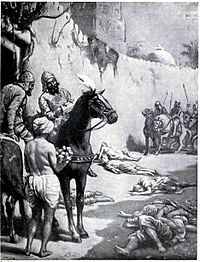
Like other settled, agrarian societies in history, those in the Indian subcontinent have been attacked by nomadic tribes throughout its long history. In evaluating the impact of Islam on the sub-continent, one must note that the northwestern Indian subcontinent was a frequent target of tribes raiding from Central Asia. In that sense, the Muslim intrusions and later Muslim invasions were not dissimilar to those of the earlier invasions during the 1st millennium.[297] What does however, make the Muslim intrusions and later Muslim invasions different is that unlike the preceding invaders who assimilated into the prevalent social system, the successful Muslim conquerors retained their Islamic identity and created new legal and administrative systems that challenged and usually in many cases superseded the existing systems of social conduct and ethics, even influencing the non-Muslim rivals and common masses to a large extent, though the non-Muslim population was left to their own laws and customs.[293][294] At the same time it must be noted that overwhelming majority of Muslims in India are Indian natives converted to Islam. This factor also played an important role in the synthesis of cultures.[298]
The growth of Muslim dominion resulted in the destruction and desecration of temples and monasteries dedicated to Indian religions (especially politically important temples of enemy states),[299] many cases of forced conversions to Islam,[300] payment of jizya tax,[301] and large-scale loss of life for the non-Muslim population.[302] During the Muslim conquests in the Indian subcontinent, Indian-origin religions have been persecuted by Muslim rulers.[303] Muslim rulers massacred Hindus, Jains, and Buddhists, while attacking temples and monasteries, while also forcing them to convert including on the battlefield.[304] There was a widespread practice of raids, seizure, and enslavement of families of Hindus, who were then sold in Sultanate cities or exported to Central Asia.[305][306] Most of the great temples in Northern Indian subcontinent were destroyed during Muslim rule.[307] Will Durant calls the Muslim conquest of India "probably the bloodiest story in history".[308] Although at first disruptive for the Indian elites, the Delhi Sultanate largely left its vast non-Muslim subject population to its own laws and customs.[293][294]
Rajput resistance to Muslim conquests[edit]
Before the Muslim expeditions into the Indian subcontinent, much of North and West India was ruled by Rajput dynasties. The Rajputs and the south Indian Chalukya dynasty were successful in containing Arab Muslim expansion during the Umayyad campaigns in India; but later, Central Asian Muslim Turks were able to break through the Rajput defence into the Northern Indian heartland. However, the Rajputs held out against the Muslim Turkic empires for several centuries. They earned a reputation of fighting battles obeying a code of chivalrous conduct rooted in a strong adherence to tradition and Chi.[309]
The Rajput Chauhan dynasty established its control over Delhi and Ajmer in the 10th century. The most famous ruler of this dynasty was Prithviraj Chauhan. His reign marked one of the most significant moments in Indian history; his battles with Muslim Sultan, Muhammad Ghori. In the First Battle of Tarain, Ghori was defeated with heavy losses. However, the Second Battle of Tarain saw the Rajput army eventually defeated, laying the foundation of Muslim rule in mainland India.[310]
The Mewar dynasty under Maharana Hammir defeated and captured Muhammad Tughlaq with the Bargujars as his main allies. Tughlaq had to pay a huge ransom and relinquish all of Mewar's lands. After this event, the Delhi Sultanate did not attack Chittor for a few hundred years. The Rajputs re-established their independence, and Rajput states were established as far east as Bengal and north into the Punjab. The Tomaras established themselves at Gwalior, and Man Singh Tomar reconstructed the Gwalior Fort which still stands there.[311] During this period, Mewar emerged as the leading Rajput state; and Rana Kumbha expanded his kingdom at the expense of the Sultanates of Malwa and Gujarat.[311][312] The next great Rajput ruler, Rana Sanga of Mewar, became the principal player in Northern India. His objectives grew in scope – he planned to conquer the much sought after prize of the Muslim rulers of the time, Delhi. But, his defeat in the Battle of Khanwa, consolidated the new Mughal dynasty in India.[311] The Mewar dynasty under Maharana Udai Singh II faced further defeat by Mughal emperor Akbar, with their capital Chittor being captured. Due to this event, Udai Singh II founded Udaipur, which became the new capital of the Mewar kingdom. His son, Maharana Pratap of Mewar, firmly resisted the Mughals. Akbar sent many missions against him. He survived to ultimately gain control of all of Mewar, excluding the Chittor Fort.[313]
The Chittor Fort is the largest fort in the Indian subcontinent. The fort became a symbol for Rajput resistance due to it being sacked three times during the 15th and 16th centuries by Muslim armies. In 1303 Alauddin Khalji defeated Rana Ratan Singh; in 1535 Bahadur Shah, the Sultanate of Gujarat defeated Bikramjeet Singh; and in 1567 Akbar defeated Maharana Udai Singh II, who left the fort and founded Udaipur. Each time the men fought bravely rushing out of the fort walls charging the enemy, but lost. Following these defeats, Jauhar was committed thrice by many of the wives and children of the Rajput soldiers who died in battles at Chittorgarh Fort. The first time was led by Rani Padmini, wife of Ratnasimha, who was killed in the battle in 1303, and later, by Rani Karnavati in 1537.[314]
City Palace was constructed by Maharana Udai Singh II after shifting his capital to Udaipur due to Muslim invasion.
Amer Fort and Jaigarh Fort are connected by subterranean passages, and are known for their artistic Hindu Rajput style elements.
Chaturbhuj Temple built by the Bundela Rajputs, is one of the tallest pre-modern structure in the Indian subcontinent.[315]
View of the Private Audience Hall in Anup Mahal at Junagarh Fort, built by the Rathor clan.
Delhi Sultanate[edit]
The historian Dr. R.P. Tripathi noted:
The history of Muslim sovereignty in India begins properly speaking with Iltutmish.[317]
The Delhi Sultanate was a Muslim sultanate based in Delhi, ruled by several dynasties of Turkic, Turko-Indian[318] and Pathan origins.[319] It ruled large parts of the Indian subcontinent from the 13th century to the early 16th century.[320] In the 12th and 13th centuries, Central Asian Turks invaded parts of northern India and established the Delhi Sultanate in the former Hindu holdings.[321] The subsequent Slave dynasty of Delhi managed to conquer large areas of northern India, while the Khalji dynasty conquered most of central India while forcing the principal Hindu kingdoms of South India to become vassal states.[320] However, they were ultimately unsuccessful in conquering and uniting the Indian subcontinent.
The Sultanate ushered in a period of Indian cultural renaissance. The resulting "Indo-Muslim" fusion of cultures left lasting syncretic monuments in architecture, music, literature, religion, and clothing. It is surmised that the language of Urdu was born during the Delhi Sultanate period as a result of the intermingling of the local speakers of Sanskritic Prakrits with immigrants speaking Persian, Turkic, and Arabic under the Muslim rulers. The Delhi Sultanate is the only Indo-Islamic empire to enthrone one of the few female rulers in India, Razia Sultana (1236–1240).
During the Delhi Sultanate, there was a synthesis between Indian civilization and Islamic civilization. The latter was a cosmopolitan civilization, with a multicultural and pluralistic society, and wide-ranging international networks, including social and economic networks, spanning large parts of Afro-Eurasia, leading to escalating circulation of goods, peoples, technologies and ideas. While initially disruptive due to the passing of power from native Indian elites to Turkic Muslim elites, the Delhi Sultanate was responsible for integrating the Indian subcontinent into a growing world system, drawing India into a wider international network, which had a significant impact on Indian culture and society.[322] However, the Delhi Sultanate also caused large-scale destruction and desecration of temples in the Indian subcontinent.[299]
The Mongol invasions of India were successfully repelled by the Delhi Sultanate. A major factor in their success was their Turkic Mamluk slave army, who were highly skilled in the same style of nomadic cavalry warfare as the Mongols, as a result of having similar nomadic Central Asian roots. It is possible that the Mongol Empire may have expanded into India were it not for the Delhi Sultanate's role in repelling them.[323] By repeatedly repulsing the Mongol raiders, the sultanate saved India from the devastation visited on West and Central Asia, setting the scene for centuries of migration of fleeing soldiers, learned men, mystics, traders, artists, and artisans from that region into the subcontinent, thereby creating a syncretic Indo-Islamic culture in the north.[324][323]
A Turco-Mongol conqueror in Central Asia, Timur (Tamerlane), attacked the reigning Sultan Nasir-u Din Mehmud of the Tughlaq Dynasty in the north Indian city of Delhi.[325] The Sultan's army was defeated on 17 December 1398. Timur entered Delhi and the city was sacked, destroyed, and left in ruins after Timur's army had killed and plundered for three days and nights. He ordered the whole city to be sacked except for the sayyids, scholars, and the "other Muslims" (artists); 100,000 war prisoners were put to death in one day.[326] The Sultanate suffered significantly from the sacking of Delhi revived briefly under the Lodi Dynasty, but it was a shadow of the former.
- Iconoclasm under the Delhi Sultanate
Kakatiya Kala Thoranam (Warangal Gate) built by the Kakatiya dynasty in ruins; one of the many temple complexes destroyed by the Delhi Sultanate.[299]
Rani ki vav is a stepwell, built by the Chaulukya dynasty, located in Patan; the city was sacked by Sultan of Delhi Qutb-ud-din Aybak between 1200 and 1210, and it was destroyed by the Allauddin Khilji in 1298.[299]
Artistic rendition of the Kirtistambh at Rudra Mahalaya Temple. The temple was destroyed by Alauddin Khalji.
Exterior wall reliefs at Hoysaleswara Temple. The temple was twice sacked and plundered by the Delhi Sultanate.[327]
Bhakti movement, Sikhism and Himalayan Buddhism[edit]
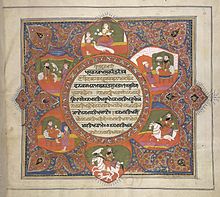
The Bhakti movement refers to the theistic devotional trend that emerged in medieval Hinduism[329] and later revolutionised in Sikhism.[330] It originated in the seventh-century south India (now parts of Tamil Nadu and Kerala), and spread northwards.[329] It swept over east and north India from the 15th century onwards, reaching its zenith between the 15th and 17th century CE.[331]
- The Bhakti movement regionally developed around different gods and goddesses, such as Vaishnavism (Vishnu), Shaivism (Shiva), Shaktism (Shakti goddesses), and Smartism.[332][333][334] The movement was inspired by many poet-saints, who championed a wide range of philosophical positions ranging from theistic dualism of Dvaita to absolute monism of Advaita Vedanta.[335][336]
- Sikhism is based on the spiritual teachings of Guru Nanak, the first Guru,[337] and the ten successive Sikh gurus. After the death of the tenth Guru, Guru Gobind Singh, the Sikh scripture, Guru Granth Sahib, became the literal embodiment of the eternal, impersonal Guru, where the scripture's word serves as the spiritual guide for Sikhs.[338][339][340]
- Buddhism in India flourished in the Himalayan kingdoms of Namgyal Kingdom in Ladakh, Sikkim Kingdom in Sikkim, and Chutiya Kingdom in Arunachal Pradesh of the Late medieval period.
Thikse Monastery is the largest gompa in Ladakh, built in the 1500s.
Tawang Monastery in Arunachal Pradesh, was built in the 1600s, is the largest monastery in India and second largest in the world after the Potala Palace in Lhasa, Tibet.
Rumtek Monastery in Sikkim was built under the direction of Changchub Dorje, 12th Karmapa Lama in the mid-1700s.[341]
Vijayanagar Empire[edit]
Gajashaala or elephant's stable, built by the Vijayanagar rulers for their war elephants.[342]
Vijayanagara marketplace at Hampi, along with the sacred tank located on the side of Krishna temple.
Stone temple car in Vitthala Temple at Hampi.
Ancient market place and plantation at Hampi.
The Vijayanagar Empire was established in 1336 by Harihara I and his brother Bukka Raya I of Sangama Dynasty,[343] which originated as a political heir of the Hoysala Empire, Kakatiya Empire,[344] and the Pandyan Empire.[345] The empire rose to prominence as a culmination of attempts by the south Indian powers to ward off Islamic invasions by the end of the 13th century. It lasted until 1646, although its power declined after a major military defeat in 1565 by the combined armies of the Deccan sultanates. The empire is named after its capital city of Vijayanagara, whose ruins surround present day Hampi, now a World Heritage Site in Karnataka, India.[346]
In the first two decades after the founding of the empire, Harihara I gained control over most of the area south of the Tungabhadra river and earned the title of Purvapaschima Samudradhishavara ("master of the eastern and western seas"). By 1374 Bukka Raya I, successor to Harihara I, had defeated the chiefdom of Arcot, the Reddys of Kondavidu, and the Sultan of Madurai and had gained control over Goa in the west and the Tungabhadra-Krishna River doab in the north.[348][349]
With the Vijayanagara Kingdom now imperial in stature, Harihara II, the second son of Bukka Raya I, further consolidated the kingdom beyond the Krishna River and brought the whole of South India under the Vijayanagara umbrella.[350] The next ruler, Deva Raya I, emerged successful against the Gajapatis of Odisha and undertook important works of fortification and irrigation.[351] Italian traveler Niccolo de Conti wrote of him as the most powerful ruler of India.[352] Deva Raya II (called Gajabetekara)[353] succeeded to the throne in 1424 and was possibly the most capable of the Sangama dynasty rulers.[354] He quelled rebelling feudal lords as well as the Zamorin of Calicut and Quilon in the south. He invaded the island of Sri Lanka and became overlord of the kings of Burma at Pegu and Tanasserim.[355][356][357]
The Vijayanagara Emperors were tolerant of all religions and sects, as writings by foreign visitors show.[358] The kings used titles such as Gobrahamana Pratipalanacharya (literally, "protector of cows and Brahmins") and Hindurayasuratrana (lit, "upholder of Hindu faith") that testified to their intention of protecting Hinduism and yet were at the same time staunchly Islamicate in their court ceremonials and dress.[359] The empire's founders, Harihara I and Bukka Raya I, were devout Shaivas (worshippers of Shiva), but made grants to the Vaishnava order of Sringeri with Vidyaranya as their patron saint, and designated Varaha (the boar, an Avatar of Vishnu) as their emblem.[360] Over one-fourth of the archaeological dig found an "Islamic Quarter" not far from the "Royal Quarter". Nobles from Central Asia's Timurid kingdoms also came to Vijayanagara. The later Saluva and Tuluva kings were Vaishnava by faith, but worshipped at the feet of Lord Virupaksha (Shiva) at Hampi as well as Lord Venkateshwara (Vishnu) at Tirupati. A Sanskrit work, Jambavati Kalyanam by King Krishnadevaraya, called Lord Virupaksha Karnata Rajya Raksha Mani ("protective jewel of Karnata Empire").[361] The kings patronised the saints of the dvaita order (philosophy of dualism) of Madhvacharya at Udupi.[362]
The empire's legacy includes many monuments spread over South India, the best known of which is the group at Hampi. The previous temple building traditions in South India came together in the Vijayanagara Architecture style. The mingling of all faiths and vernaculars inspired architectural innovation of Hindu temple construction, first in the Deccan and later in the Dravidian idioms using the local granite. South Indian mathematics flourished under the protection of the Vijayanagara Empire in Kerala. The south Indian mathematician Madhava of Sangamagrama founded the famous Kerala School of Astronomy and Mathematics in the 14th century which produced a lot of great south Indian mathematicians like Parameshvara, Nilakantha Somayaji and Jyeṣṭhadeva in medieval south India.[363] Efficient administration and vigorous overseas trade brought new technologies such as water management systems for irrigation.[364] The empire's patronage enabled fine arts and literature to reach new heights in Kannada, Telugu, Tamil, and Sanskrit, while Carnatic music evolved into its current form.[365]
Vijayanagara went into decline after the defeat in the Battle of Talikota (1565). After the death of Aliya Rama Raya in the Battle of Talikota, Tirumala Deva Raya started the Aravidu dynasty, moved and founded a new capital of Penukonda to replace the destroyed Hampi, and attempted to reconstitute the remains of Vijayanagara Empire.[366] Tirumala abdicated in 1572, dividing the remains of his kingdom to his three sons, and pursued a religious life until his death in 1578. The Aravidu dynasty successors ruled the region but the empire collapsed in 1614, and the final remains ended in 1646, from continued wars with the Bijapur sultanate and others.[367][368][369] During this period, more kingdoms in South India became independent and separate from Vijayanagara. These include the Mysore Kingdom, Keladi Nayaka, Nayaks of Madurai, Nayaks of Tanjore, Nayakas of Chitradurga and Nayak Kingdom of Gingee – all of which declared independence and went on to have a significant impact on the history of South India in the coming centuries.[370]

Regional powers[edit]
For two and a half centuries from the mid 13th century, politics in Northern India was dominated by the Delhi Sultanate, and in Southern India by the Vijayanagar Empire. However, there were other regional powers present as well. The Reddy dynasty successfully defeated the Delhi Sultanate; and extended their rule from Cuttack in the north to Kanchi in the south, eventually being absorbed into the expanding Vijayanagara Empire.[371] In the north, the Rajput kingdoms remained the dominant force in Western and Central India. Their power reached its zenith under Rana Sanga, who was the Rana of Mewar and head of a powerful Hindu Rajput confederacy in Rajputana; during whose time Rajput armies were constantly victorious against the Sultanate armies.[372]
In the south, the Bahmani Sultanate, which was established either by a Brahman convert or patronised by a Brahman and from that source it was given the name Bahmani,[373] was the chief rival of the Vijayanagara, and frequently created difficulties for the Vijayanagara.[374] In the early 16th century Krishnadevaraya of the Vijayanagar Empire defeated the last remnant of Bahmani Sultanate power. After which, the Bahmani Sultanate collapsed,[375] resulting it being split into five small Deccan sultanates.[376] In 1490, Ahmadnagar declared independence, followed by Bijapur and Berar in the same year; Golkonda became independent in 1518 and Bidar in 1528.[377] Although generally rivals, they did ally against the Vijayanagara Empire in 1565, permanently weakening Vijayanagar in the Battle of Talikota.
In the East, the Gajapati Kingdom remained a strong regional power to reckon with, associated with a high point in the growth of regional culture and architecture. Under Kapilendradeva, Gajapatis became an empire stretching from the lower Ganga in the north to the Kaveri in the south.[378] In Northeast India, the Ahom Kingdom was a major power for six centuries;[379][380] led by Lachit Borphukan, the Ahoms decisively defeated the Mughal army at the Battle of Saraighat during the Ahom-Mughal conflicts.[381] Further east in Northeastern India was the Kingdom of Manipur, which ruled from their seat of power at Kangla Fort and developed a sophisticated Hindu Gaudiya Vaishnavite culture.[382][383][384]
- Regional powers
Rang Ghar, built by Pramatta Singha in Ahom Kingdom's capital Rongpur, is one of the earliest pavilions of outdoor stadia in the Indian subcontinent.
Kareng Ghar is a seven-storied royal palace built by Rajeswar Singha of the Ahom dynasty.
Ranakpur Jain temple was built in the 15th century with the support of the Rajput state of Mewar.
Gol Gumbaz built by the Bijapur Sultanate, has the second largest pre-modern dome in the world after the Byzantine Hagia Sophia.
Early modern period (c. 1526–1858 CE)[edit]
The early modern period of Indian history is dated from 1526–1858 CE, corresponding to the rise and fall of the Mughal dynasty. This period witnessed the cultural synthesis of Hindu and Muslim elements reflected in Indo-Islamic architecture;[385][386] the growth of Maratha and Sikh imperial powers over vast regions of the Indian subcontinent with the decline of the Mughals; and came to an end when the British Raj was founded.[19]
Mughal Empire[edit]
| Mughal Empire |
|---|
|
In 1526, Babur, a Timurid descendant of Timur and Genghis Khan from Fergana Valley (modern day Uzbekistan), swept across the Khyber Pass and established the Mughal Empire, which at its zenith covered much of South Asia.[387] However, his son Humayun was defeated by the Afghan warrior Sher Shah Suri in the year 1540, and Humayun was forced to retreat to Kabul. After Sher Shah's death, his son Islam Shah Suri and his Hindu general Hemu Vikramaditya had established secular rule in North India from Delhi until 1556. After winning Battle of Delhi, Akbar's forces defeated Hemu in the Second Battle of Panipat on 6 November 1556.
The famous emperor Akbar the Great, who was the grandson of Babar, tried to establish a good relationship with the Hindus. Akbar declared "Amari" or non-killing of animals in the holy days of Jainism. He rolled back the jizya tax for non-Muslims. The Mughal emperors married local royalty, allied themselves with local maharajas, and attempted to fuse their Turko-Persian culture with ancient Indian styles, creating a unique Indo-Persian culture and Indo-Saracenic architecture. Akbar married a Rajput princess, Mariam-uz-Zamani, and they had a son, Jahangir, who was part-Mughal and part-Rajput, as were future Mughal emperors.[388] Jahangir more or less followed his father's policy. The Mughal dynasty ruled most of the Indian subcontinent by 1600. The reign of Shah Jahan was the golden age of Mughal architecture. He erected several large monuments, the most famous of which is the Taj Mahal at Agra, as well as the Moti Masjid, Agra, the Red Fort, the Jama Masjid, Delhi, and the Lahore Fort.
It was the second largest empire to have existed in the Indian subcontinent,[390] and surpassed China to be become the world's largest economic power, controlling 24.4% of the world economy,[391] and the world leader in manufacturing,[392] producing 25% of global industrial output.[393] The economic and demographic upsurge was stimulated by Mughal agrarian reforms that intensified agricultural production,[394] a proto-industrializing economy that began moving towards industrial manufacturing,[395] and a relatively high degree of urbanization for its time.[396]
The Mughal Empire reached the zenith of its territorial expanse during the reign of Aurangzeb and also started its terminal decline in his reign due to Maratha military resurgence under Shivaji. Historian Sir. J.N. Sarkar wrote "All seemed to have been gained by Aurangzeb now, but in reality all was lost."[397] He was less tolerant than his predecessors, reintroducing the jizya tax and destroying several historical temples, while at the same time building more Hindu temples than he destroyed,[398] employing significantly more Hindus in his imperial bureaucracy than his predecessors, and opposing Sunni Muslim bigotry against Hindus and Shia Muslims.[399] However, he is often blamed for the erosion of the tolerant syncretic tradition of his predecessors, as well as increasing brutality and centralisation, which may have played a large part in the dynasty's downfall after Aurangzeb, who unlike previous emperors, imposed relatively less pluralistic policies on the general population, which may have inflamed the majority Hindu population.
The empire went into decline thereafter. The Mughals suffered several blows due to invasions from Marathas, Jats and Afghans. In 1737, the Maratha general Bajirao of the Maratha Empire invaded and plundered Delhi. Under the general Amir Khan Umrao Al Udat, the Mughal Emperor sent 8,000 troops to drive away the 5,000 Maratha cavalry soldiers. Baji Rao, however, easily routed the novice Mughal general and the rest of the imperial Mughal army fled. In 1737, in the final defeat of Mughal Empire, the commander-in-chief of the Mughal Army, Nizam-ul-mulk, was routed at Bhopal by the Maratha army. This essentially brought an end to the Mughal Empire. While Bharatpur State under Jat ruler Suraj Mal, overran the Mughal garrison at Agra and plundered the city taking with them the two great silver doors of the entrance of the famous Taj Mahal; which were then melted down by Suraj Mal in 1763.[400] In 1739, Nader Shah, emperor of Iran, defeated the Mughal army at the Battle of Karnal.[401] After this victory, Nader captured and sacked Delhi, carrying away many treasures, including the Peacock Throne.[402] Mughal rule were further weakened by constant native Indian resistance; Banda Singh Bahadur led the Sikh Khalsa against Mughal religious oppression; Hindu Rajas of Bengal, Pratapaditya and Raja Sitaram Ray revolted; and Maharaja Chhatrasal, of Bundela Rajputs, fought the Mughals and established the Panna State.[403] The Mughal dynasty was reduced to puppet rulers by 1757. Sikh holocaust of 1762 took place under the Muslim provincial government based at Lahore to wipe out the Sikhs, with 30,000 Sikhs being killed, an offensive that had begun with the Mughals, with the Sikh holocaust of 1746,[404] and lasted several decades under its Muslim successor states.[405]
The remnants of the Mughal dynasty were finally defeated during the Indian Rebellion of 1857 and formally taken over by the British.
Maratha Empire[edit]
| Maratha Empire |
|---|
|
In the early 18th century the Maratha Empire extended suzerainty over the Indian subcontinent. Under the Peshwas, the Marathas consolidated and ruled over much of South Asia. The Marathas are credited to a large extent for ending Mughal rule in India.[406][407][408]
The Maratha kingdom was founded and consolidated by Chatrapati Shivaji, a Maratha aristocrat of the Bhonsle clan.[409] While, Venkoji, Shivaji's half-brother founded the Thanjavur Maratha kingdom.[410] However, the credit for making the Marathas formidable power nationally goes to Peshwa Bajirao I. Historian K.K. Datta wrote that Bajirao I "may very well be regarded as the second founder of the Maratha Empire".[411]
By the early 18th century, the Maratha Kingdom had transformed itself into the Maratha Empire under the rule of the Peshwas (prime ministers). In 1737, the Marathas defeated a Mughal army in their capital, in the Battle of Delhi. The Marathas continued their military campaigns against the Mughals, Nizam, Nawab of Bengal and the Durrani Empire to further extend their boundaries. By 1760, the domain of the Marathas stretched across most of the Indian subcontinent.[412] The Marathas even discussed abolishing the Mughal throne and placing Vishwasrao Peshwa on the Mughal imperial throne in Delhi.[413]
The empire at its peak stretched from Tamil Nadu[414] in the south, to Peshawar (modern-day Khyber Pakhtunkhwa, Pakistan[415] [note 4]) in the north, and Bengal in the east. The Northwestern expansion of the Marathas was stopped after the Third Battle of Panipat (1761). However, the Maratha authority in the north was re-established within a decade under Peshwa Madhavrao I.[417]

Under Madhavrao I, the strongest knights were granted semi-autonomy, creating a confederacy of Maratha states under the Gaekwads of Baroda, the Holkars of Indore and Malwa, the Scindias of Gwalior and Ujjain, the Bhonsales of Nagpur and the Puars of Dhar and Dewas. In 1775, the East India Company intervened in a Peshwa family succession struggle in Pune, which led to the First Anglo-Maratha War, resulting in a Maratha victory.[418]
Charles Metcalfe, later acting Governor-General of India, wrote in 1806:
India contains no more than two great powers, British and Mahratta, and every other state acknowledges the influence of one or the other. Every inch that we recede will be occupied by them.[419][420]
The Marathas remained the pre-eminent power in India until their defeat in the Second and Third Anglo-Maratha Wars (1805–1818), which resulted in the East India Company controlling most of India.
Sikh Empire[edit]
The Sikh Empire, ruled by members of the Sikh religion, was a political entity that governed the Northwestern regions of the Indian subcontinent. The empire, based around the Punjab region, existed from 1799 to 1849. It was forged, on the foundations of the Khalsa, under the leadership of Maharaja Ranjit Singh (1780–1839) from an array of autonomous Punjabi Misls of the Sikh Confederacy.[424]
Maharaja Ranjit Singh consolidated many parts of northern India into an empire. He primarily used his Sikh Khalsa Army that he trained in European military techniques and equipped with modern military technologies. Ranjit Singh proved himself to be a master strategist and selected well-qualified generals for his army. He continuously defeated the Afghan armies and successfully ended the Afghan-Sikh Wars. In stages, he added central Punjab, the provinces of Multan and Kashmir, and the Peshawar Valley to his empire.[425][426]
At its peak, in the 19th century, the empire extended from the Khyber Pass in the west, to Kashmir in the north, to Sindh in the south, running along Sutlej river to Himachal in the east. After the death of Ranjit Singh, the empire weakened, leading to conflict with the British East India Company. The hard-fought first Anglo-Sikh war and second Anglo-Sikh war marked the downfall of the Sikh Empire, making it among the last areas of the Indian subcontinent to be conquered by the British.

Other kingdoms[edit]
There were several other kingdoms that ruled over parts of India in the later medieval period prior to the British occupation. However, most of them were bound to pay regular tribute to the Marathas.[412]
The rule of the Wodeyar dynasty, which established the Kingdom of Mysore in southern India in around 1400 CE, was interrupted by Hyder Ali and his son Tipu Sultan in the later half of the 18th century. Under their rule, Mysore fought series of wars against the Marathas and British or their combined forces. The Maratha–Mysore War ended in April 1787, following the finalizing of treaty of Gajendragad, in which, Tipu Sultan was obligated to pay tribute to the Marathas. Concurrently, the Anglo-Mysore Wars took place, where the Mysoreans used the Mysorean rockets. The Fourth Anglo-Mysore War (1798–1799) saw the death of Tipu Sultan and further reductions in Mysorean territory. Mysore's alliance with the French was seen as a threat to the British East India Company, and Mysore was attacked from all four sides. The Nizam of Hyderabad and the Marathas launched an invasion from the north. The British won a decisive victory at the Siege of Seringapatam (1799). Tipu was killed during the defence of the city. Much of the remaining Mysorean territory was annexed by the British, the Nizam and the Marathas. The remaining core, around Mysore and Seringapatam, was restored to the Indian prince belonging to the Wodeyar dynasty, whose forefathers had been the actual rulers before Hyder Ali became the de facto ruler. The Kingdom of Mysore became a princely state of British India in 1799.
Hyderabad was founded by the Qutb Shahi dynasty of Golconda in 1591. Following a brief Mughal rule, Asif Jah, a Mughal official, seized control of Hyderabad and declared himself Nizam-al-Mulk of Hyderabad in 1724. The Nizams lost considerable territory and paid tribute to the Maratha Empire after being routed in multiple battles, such as the Battle of Palkhed.[428] However, the Nizams maintained their sovereignty from 1724 until 1948 through paying tributes to the Marathas, and later, being vessels of the British. Hyderabad State became princely state in British India 1798.
The Nawabs of Bengal had become the de facto rulers of Bengal following the decline of Mughal Empire. However, their rule was interrupted by Marathas who carried out six expeditions in Bengal from 1741 to 1748, as a result of which Bengal became a tributary state of Marathas. On 23 June 1757, Siraj ud-Daulah, the last independent Nawab of Bengal was betrayed in the Battle of Plassey by Mir Jafar. He lost to the British, who took over the charge of Bengal in 1757, installed Mir Jafar on the Masnad (throne) and established itself to a political power in Bengal.[429] In 1765 the system of Dual Government was established, in which the Nawabs ruled on behalf of the British and were mere puppets to the British. In 1772 the system was abolished and Bengal was brought under direct control of the British. In 1793, when the Nizamat (governorship) of the Nawab was also taken away from them, they remained as the mere pensioners of the British East India Company.[430][431]
In the 18th century the whole of Rajputana was virtually subdued by the Marathas. The Second Anglo-Maratha War distracted the Marathas from 1807 to 1809, but afterwards Maratha domination of Rajputana resumed. In 1817, the British went to war with the Pindaris, raiders who were based in Maratha territory, which quickly became the Third Anglo-Maratha War, and the British government offered its protection to the Rajput rulers from the Pindaris and the Marathas. By the end of 1818 similar treaties had been executed between the other Rajput states and Britain. The Maratha Sindhia ruler of Gwalior gave up the district of Ajmer-Merwara to the British, and Maratha influence in Rajasthan came to an end.[432] Most of the Rajput princes remained loyal to Britain in the Revolt of 1857, and few political changes were made in Rajputana until Indian independence in 1947. The Rajputana Agency contained more than 20 princely states, most notable being Udaipur State, Jaipur State, Bikaner State and Jodhpur State.
After the fall of the Maratha Empire, many Maratha dynasties and states became vassals in a subsidiary alliance with the British, to form the largest bloc of princely states in the British Raj, in terms of territory and population.[433] With the decline of the Sikh Empire, after the First Anglo-Sikh War in 1846, under the terms of the Treaty of Amritsar, the British government sold Kashmir to Maharaja Gulab Singh and the princely state of Jammu and Kashmir, the second largest princely state in British India, was created by the Dogra dynasty.[434][435] While in Eastern and Northeastern India, the Hindu and Buddhist states of Cooch Behar Kingdom, Twipra Kingdom and Kingdom of Sikkim were annexed by the British and made vassal princely state.
After the fall of the Vijayanagara Empire, Polygar states emerged in Southern India; and managed to weather invasions and flourished until the Polygar Wars, where they were defeated by the British East India Company forces.[436] Around the 18th century, the Kingdom of Nepal was formed by Rajput rulers.[437]
Lake Palace in Udaipur, was commissioned by the Maharana of Udaipur State.
City Palace in Jaipur, was commissioned by the Maharana of Jaipur State.
Laxmi Niwas Palace in Bikaner, was commissioned by the Maharana of Bikaner State.
Umaid Bhawan Palace in Jodhpur, was commissioned by Maharana of Jodhpur State.
Mysore Palace in Mysore, was commissioned by the Maharaja of Mysore State.
Laxmi Vilas Palace in Vadodara, was commissioned by the Maharaja of Baroda State.
Ujjayanta Palace in Agartala, was commissioned by the Maharaja of Tripura State.
Cooch Behar Palace in Cooch Behar, was commissioned by the Maharaja of Cooch Behar State.
Early modern Indian traders[edit]
Early modern Indian traders to West Asia and Eastern Europe were active between the 14th and 18th centuries.[438][439][440] During this period, Indian traders settled in Surakhani, a suburb of greater Baku, Azerbaijan. These traders built a Hindu temple, which suggests commerce was active and prosperous for Indians by the 17th century.[441][442][443][444]
Further north, the Saurashtra and Bengal coasts played an important role in maritime trade, and the Gangetic plains and the Indus valley housed several centres of river-borne commerce. Most overland trade was carried out via the Khyber Pass connecting the Punjab region with Afghanistan and onward to the Middle East and Central Asia.[445] Although many kingdoms and rulers issued coins, barter was prevalent. Villages paid a portion of their agricultural produce as revenue to the rulers, while their craftsmen received a part of the crops at harvest time for their services.[446]
European exploration and colonialism[edit]
Western explorers and traders[edit]
In 1498, a Portuguese fleet under Vasco da Gama successfully discovered a new sea route from Europe to India, which paved the way for direct Indo-European commerce. The Portuguese soon set up trading posts in Goa, Daman, Diu and Bombay. After their conquest in Goa, the Portuguese instituted the Goa Inquisition, where new Indian converts and non-Christians were punished for suspected heresy against Christianity, and were condemned to be burnt.[447] Goa became the main Portuguese base until it was annexed by India in 1961.[448]
The next to arrive were the Dutch, with their main base in Ceylon. They established ports in Malabar. However, their expansion into India was halted, after their defeat in the Battle of Colachel by the Kingdom of Travancore, during the Travancore-Dutch War. The Dutch never recovered from the defeat and no longer posed a large colonial threat to India.[449][450]
In the words of the noted historian, Professor A. Sreedhara Menon:
A disaster of the first magnitude for the Dutch, the battle of Colachel shattered for all time their dream of the conquest of Kerala.[451]
The internal conflicts among Indian kingdoms gave opportunities to the European traders to gradually establish political influence and appropriate lands. Following the Dutch, the British—who set up in the west coast port of Surat in 1619—and the French both established trading outposts in India. Although these continental European powers controlled various coastal regions of southern and eastern India during the ensuing century, they eventually lost all their territories in India to the British, with the exception of the French outposts of Pondichéry and Chandernagore,[452][453] and the Portuguese colonies of Goa, Daman and Diu.[454]
Expansion of the British East India Company rule in India[edit]
| British East India Company |
|---|
|
In 1617 the British East India Company was given permission by Mughal Emperor Jahangir to trade in India.[457] Gradually their increasing influence led the de jure Mughal emperor Farrukh Siyar to grant them dastaks or permits for duty-free trade in Bengal in 1717.[458]
The Nawab of Bengal Siraj Ud Daulah, the de facto ruler of the Bengal province, opposed British attempts to use these permits. This led to the Battle of Plassey on 23 June 1757, in which the Bengal Army of the British East India Company, led by Robert Clive, defeated the French-supported Nawab's forces. This was the first real political foothold with territorial implications that the British acquired in India. Clive was appointed by the company as its first 'Governor of Bengal' in 1757.[459] This was combined with British victories over the French at Madras, Wandiwash and Pondichéry that, along with wider British successes during the Seven Years' War, reduced French influence in India. The British East India Company extended its control over the whole of Bengal. After the Battle of Buxar in 1764, the company acquired the rights of administration in Bengal from de jure Mughal Emperor Shah Alam II; this marked the beginning of its formal rule, which within the next century engulfed most of India.[460] The British East India Company monopolised the trade of Bengal. They introduced a land taxation system called the Permanent Settlement which introduced a feudal-like structure in Bengal, often with taluqdars and zamindars set in place.
As a result of the three Carnatic Wars, the British East India Company gained exclusive control over the entire Carnatic region of India.[461] The Company soon expanded its territories around its bases in Bombay and Madras; the Anglo-Mysore Wars (1766–1799) and later the Anglo-Maratha Wars (1772–1818) led to control of vast regions of India. Ahom Kingdom of North-east India first fell to Burmese invasion and then to the British after the Treaty of Yandabo in 1826; concurrently, the Burmese invasions also lead the Kingdom of Manipur to seek British protectorate in 1824, however, it was after the Anglo-Manipur War of 1891 did it become part of the British Empire.[456] Punjab, the North-West Frontier Province, and Kashmir were annexed after the Second Anglo-Sikh War in 1849; however, Kashmir was immediately sold under the Treaty of Amritsar to the Dogra Dynasty of Jammu and thereby became a princely state. The border dispute between Nepal and British India, which sharpened after 1801, had caused the Anglo-Nepalese War of 1814–16 and brought the defeated Gurkhas under British influence. In 1854, Berar was annexed, and the state of Oudh was added two years later.
At the turn of the 19th century, Governor-General Richard Wellesley began what became two decades of accelerated expansion of Company territories.[462] This was achieved either by subsidiary alliances between the Company and local rulers or by direct military annexation. The subsidiary alliances created the princely states or native states of the Hindu maharajas and the Muslim nawabs.
By the 1850s, the British East India Company controlled most of the Indian subcontinent. Their policy was sometimes summed up as Divide and Rule, taking advantage of the enmity festering between various princely states and social and religious groups.[463]
Indian indenture system[edit]
The Indian indenture system was an ongoing system of indenture, a form of debt bondage, by which 3.5 million Indians were transported to various colonies of European powers to provide labour for the (mainly sugar) plantations. It started from the end of slavery in 1833 and continued until 1920. This resulted in the development of large Indian diaspora, which spread from the Indian Ocean (i.e. Réunion and Mauritius) to Pacific Ocean (i.e. Fiji), as well as the growth of Indo-Caribbean and Indo-African population.
Modern period and independence (after c. 1850 CE)[edit]
The rebellion of 1857 and its consequences[edit]
- Indian rebellion of 1857
Lakshmibai, the Rani of Maratha-ruled Jhansi, one of the principal leaders of the rebellion who earlier had lost her kingdom as a result of the Doctrine of Lapse.
Suppression of the Indian Revolt by the English, which depicts the execution of mutineers by blowing from a gun by the British.
The hanging of two participants in the Indian Rebellion, Sepoys of the 31st Native Infantry. Albumen silver print by Felice Beato, 1857.
The Indian rebellion of 1857 was a large-scale rebellion by soldiers employed by the British East India Company in northern and central India against the Company's rule. The spark that led to the mutiny was the issue of new gunpowder cartridges for the Enfield rifle, which was insensitive to local religious prohibition; key mutineer being Mangal Pandey.[464] In addition, the underlying grievances over British taxation, the ethnic gulf between the British officers and their Indian troops, and land annexations played a significant role in the rebellion. Within weeks after Pandey's mutiny, dozens of units of the Indian army joined peasant armies in widespread rebellion. The rebel soldiers were later joined by Indian nobility, many of whom had lost titles and domains under the Doctrine of Lapse, and felt that the Company had interfered with a traditional system of inheritance. Rebel leaders such as Nana Sahib and the Rani of Jhansi belonged to this group.[465]
After the outbreak of the mutiny in Meerut, the rebels very quickly reached Delhi. The rebels had also captured large tracts of the North-Western Provinces and Awadh (Oudh). Most notably in Awadh, the rebellion took on the attributes of a patriotic revolt against British presence.[466] However, the British East India Company mobilised rapidly, with the assistance of friendly Princely states. But, it took the British remainder of 1857 and the better part of 1858 to suppress the rebellion. Due to the rebels being poorly equipped and no outside support or funding, they were brutally subdued by the British.[467]
In the aftermath, all power was transferred from the British East India Company to the British Crown, which began to administer most of India as a number of provinces. The Crown controlled the Company's lands directly and had considerable indirect influence over the rest of India, which consisted of the Princely states ruled by local royal families. There were officially 565 princely states in 1947, but only 21 had actual state governments, and only three were large (Mysore, Hyderabad, and Kashmir). They were absorbed into the independent nation in 1947–48.[468]
British Raj (c. 1858–1947)[edit]
| British Raj |
|---|
|
After 1857, the colonial government strengthened and expanded its infrastructure via the court system, legal procedures, and statutes. The Indian Penal Code came into being.[469] In education, Thomas Babington Macaulay had made schooling a priority for the Raj in his famous minute of February 1835 and succeeded in implementing the use of English as the medium of instruction. By 1890 some 60,000 Indians had matriculated.[470] The Indian economy grew at about 1% per year from 1880 to 1920, and the population also grew at 1%. However, from 1910s Indian private industry began to grow significantly. India built a modern railway system in the late 19th century which was the fourth largest in the world.[471] The British Raj invested heavily in infrastructure, including canals and irrigation systems in addition to railways, telegraphy, roads and ports.[472] However, historians have been bitterly divided on issues of economic history, with the Nationalist school arguing that India was poorer at the end of British rule than at the beginning and that impoverishment occurred because of the British.[473]
In 1905, Lord Curzon split the large province of Bengal into a largely Hindu western half and "Eastern Bengal and Assam", a largely Muslim eastern half. The British goal was said to be for efficient administration but the people of Bengal were outraged at the apparent "divide and rule" strategy. It also marked the beginning of the organised anti-colonial movement. When the Liberal party in Britain came to power in 1906, he was removed. Bengal was reunified in 1911. The new Viceroy Gilbert Minto and the new Secretary of State for India John Morley consulted with Congress leaders on political reforms. The Morley-Minto reforms of 1909 provided for Indian membership of the provincial executive councils as well as the Viceroy's executive council. The Imperial Legislative Council was enlarged from 25 to 60 members and separate communal representation for Muslims was established in a dramatic step towards representative and responsible government.[474] Several socio-religious organisations came into being at that time. Muslims set up the All India Muslim League in 1906. It was not a mass party but was designed to protect the interests of the aristocratic Muslims. It was internally divided by conflicting loyalties to Islam, the British, and India, and by distrust of Hindus.[475] The Akhil Bharatiya Hindu Mahasabha and Rashtriya Swayamsevak Sangh (RSS) sought to represent Hindu interests though the latter always claimed it to be a "cultural" organisation.[476] Sikhs founded the Shiromani Akali Dal in 1920.[477] However, the largest and oldest political party Indian National Congress, founded in 1885, attempted to keep a distance from the socio-religious movements and identity politics.[478]
Hindu Renaissance[edit]
Raja Ram Mohan Roy is regarded as the "Father of the Hindu renaissance".
Rabindranath Tagore is Asia's first Nobel laureate, composer of India's national anthem and Bangladesh's national anthem, while inspired Sri Lankan national anthem.
Swami Vivekananda was a key figure in introducing Vedanta and Yoga in the Western world,[479] raising interfaith awareness and making Hinduism a world religion.[480]
Jagadish Chandra Bose was a physicist, biologist, botanist, archaeologist, and writer of science fiction.[481] He pioneered the investigation of radio and microwave optics, made very significant contributions to plant science, and laid the foundations of experimental science in the Indian subcontinent.[482] He is considered one of the fathers of radio science,[483] and is also considered the father of Bengali science fiction.
Satyendra Nath Bose was a physicist, specialising in mathematical physics. He is best known for his work on quantum mechanics in the early 1920s, providing the foundation for Bose–Einstein statistics and the theory of the Bose–Einstein condensate. He is honoured as the namesake of the boson.
The Hindu Renaissance[484][485][486] refers to a social reform movement during the nineteenth and early twentieth centuries in the Bengal region of the Indian subcontinent during the period of British rule dominated by Bengali Hindus. The Hindu Renaissance can be said to have started with Raja Ram Mohan Roy (1772–1833) and ended with Rabindranath Tagore (1861–1941), although many stalwarts thereafter continued to embody particular aspects of the unique intellectual and creative output of the region.[484] Nineteenth-century Bengal was a unique blend of religious and social reformers, scholars, literary giants, journalists, patriotic orators, and scientists, all merging to form the image of a renaissance, and marked the transition from the 'medieval' to the 'modern'.[485][487][488]
During this period, Bengal witnessed an intellectual awakening that is in some way similar to the Renaissance. This movement questioned existing orthodoxies, particularly with respect to women, marriage, the dowry system, the caste system, and religion. One of the earliest social movements that emerged during this time was the Young Bengal movement, which espoused rationalism and atheism as the common denominators of civil conduct among upper caste educated Hindus.[489] It played an important role in reawakening Indian minds and intellect across the Indian subcontinent.
Famines[edit]
- Famines under British rule
During Company rule in India and the British Raj, famines in India, due to the failed policies of British colonial government, were some of the worst ever recorded, including the Great Famine of 1876–78 in which 6.1 million to 10.3 million people died,[490] the Great Bengal famine of 1770 where up to 10 million people died,[491] the Indian famine of 1899–1900 in which 1.25 to 10 million people died,[492] and the Bengal famine of 1943 where up to 3.8 million people died.[493] The Third Plague Pandemic in the mid-19th century killed 10 million people in India.[494] Despite persistent diseases and famines, the population of the Indian subcontinent, which stood at up to 200 million in 1750,[495] had reached 389 million by 1941.[496]
The Indian independence movement[edit]
Lala Lajpat Rai of Punjab, Bal Gangadhar Tilak of Maharashtra, and Bipin Chandra Pal of Bengal, the triumvirate were popularly known as Lal Bal Pal, changed the political discourse of the Indian independence movement.
Khudiram Bose at the time of his hanging was 18 years old, making him one of the youngest revolutionaries in India.[497]
Front page of the Tribune (25 March 1931), reporting the execution of Bhagat Singh, Rajguru and Sukhdev by the British. They are considered among the most influential revolutionaries of the Indian independence movement.
Jawaharlal Nehru (left) became India's first prime minister and Mahatma Gandhi (right) led the Indian independence movement.
The numbers of British in India were small,[498] yet they were able to rule 52% of the Indian subcontinent directly and exercise considerable leverage over the princely states that accounted for 48% of the area.[499]
One of the most important events of the 19th century was the rise of Indian nationalism,[500] leading Indians to seek first "self-rule" and later "complete independence". However, historians are divided over the causes of its rise. Probable reasons include a "clash of interests of the Indian people with British interests",[500] "racial discriminations",[501] and "the revelation of India's past".[502]
The first step toward Indian self-rule was the appointment of councillors to advise the British viceroy in 1861 and the first Indian was appointed in 1909. Provincial Councils with Indian members were also set up. The councillors' participation was subsequently widened into legislative councils. The British built a large British Indian Army, with the senior officers all British and many of the troops from small minority groups such as Gurkhas from Nepal and Sikhs.[503] The civil service was increasingly filled with natives at the lower levels, with the British holding the more senior positions.[504]
Bal Gangadhar Tilak, an Indian nationalist leader, declared Swaraj as the destiny of the nation. His popular sentence "Swaraj is my birthright, and I shall have it"[505] became the source of inspiration for Indians. Tilak was backed by rising public leaders like Bipin Chandra Pal and Lala Lajpat Rai, who held the same point of view, notably they advocated the Swadeshi movement involving the boycott of all imported items and the use of Indian-made goods; the triumvirate were popularly known as Lal Bal Pal. Under them, India's three big provinces – Maharashtra, Bengal and Punjab shaped the demand of the people and India's nationalism. In 1907, the Congress was split into two factions: The radicals, led by Tilak, advocated civil agitation and direct revolution to overthrow the British Empire and the abandonment of all things British. The moderates, led by leaders like Dadabhai Naoroji and Gopal Krishna Gokhale, on the other hand, wanted reform within the framework of British rule.[506]
The partition of Bengal in 1905 further increased the revolutionary movement for Indian independence. The disenfranchisement lead some to take violent action. One such revolutionary, Khudiram Bose, planted bombs near British government officials, but was arrested and executed at the age of 18.[497]

The British themselves adopted a "carrot and stick" approach in recognition of India's support during the First World War and in response to renewed nationalist demands. The means of achieving the proposed measure were later enshrined in the Government of India Act 1919, which introduced the principle of a dual mode of administration, or diarchy, in which elected Indian legislators and appointed British officials shared power.[507] In 1919, Colonel Reginald Dyer ordered his troops to fire their weapons on peaceful protestors, including unarmed women and children, resulting in the Jallianwala Bagh massacre; which lead to the Non-cooperation Movement of 1920–22. The massacre was a decisive episode towards the end of British rule in India.[508]
From 1920 leaders such as Mahatma Gandhi began highly popular mass movements to campaign against the British Raj using largely peaceful methods. The Gandhi-led independence movement opposed the British rule using non-violent methods like non-co-operation, civil disobedience and economic resistance. However, revolutionary activities against the British rule took place throughout the Indian subcontinent and some others adopted a militant approach like the Hindustan Republican Association, founded by Chandrasekhar Azad, Bhagat Singh, Sukhdev Thapar and others, that sought to overthrow British rule by armed struggle. The Government of India Act 1935 was a major success in this regard.[506]
World War I[edit]
Indian cavalry from the Deccan Horse during the Battle of Bazentin Ridge in 1916.
Indian Army gunners (probably 39th Battery) with 3.7 inch Mountain Howitzers, Jerusalem 1917.
India Gate is a memorial to 70,000 soldiers of the British Indian Army who died in the period 1914–21 in the First World War.
During World War I, over 800,000 volunteered for the army, and more than 400,000 volunteered for non-combat roles, compared with the pre-war annual recruitment of about 15,000 men.[509] The Army saw action on the Western Front within a month of the start of the war at the First Battle of Ypres. After a year of front-line duty, sickness and casualties had reduced the Indian Corps to the point where it had to be withdrawn. Nearly 700,000 Indians fought the Turks in the Mesopotamian campaign. Indian formations were also sent to East Africa, Egypt, and Gallipoli.[510]
Indian Army and Imperial Service Troops fought during the Sinai and Palestine Campaign's defence of the Suez Canal in 1915, at Romani in 1916 and to Jerusalem in 1917. India units occupied the Jordan Valley and after the Spring Offensive they became the major force in the Egyptian Expeditionary Force during the Battle of Megiddo and in the Desert Mounted Corps' advance to Damascus and on to Aleppo. Other divisions remained in India guarding the North-West Frontier and fulfilling internal security obligations.
One million Indian troops served abroad during the war. In total, 74,187 died,[511] and another 67,000 were wounded.[512] The roughly 90,000 soldiers who lost their lives fighting in World War I and the Afghan Wars are commemorated by the India Gate.
World War II[edit]
Indian infantrymen of the 7th Rajput Regiment about to go on patrol on the Arakan front in Burma, 1944.
A Sikh soldier (of the 4th Division (the Red Eagles) of the Indian Army, attached to the British Fifth Army in Italy) holding a captured swastika flag after the surrender of Nazi German forces in Italy. Photo c. May 1945.
Sikh soldiers of the Indian Legion guarding the Atlantic Wall in France in March 1944. Subhas Chandra Bose initiated the legion's formation, intended to serve as a liberation force from the British occupation of India.
Subhas Chandra Bose revamped the Indian National Army, presided over the Provisional Government of Free India in Andaman and Nicobar Islands in India, and created popular Indian slogans, such as "Jai Hind."
British India officially declared war on Nazi Germany in September 1939.[513] The British Raj, as part of the Allied Nations, sent over two and a half million volunteer soldiers to fight under British command against the Axis powers. Additionally, several Indian Princely States provided large donations to support the Allied campaign during the War. India also provided the base for American operations in support of China in the China Burma India Theatre.
Indians fought with distinction throughout the world, including in the European theatre against Germany, in North Africa against Germany and Italy, against the Italians in East Africa, in the Middle East against the Vichy French, in the South Asian region defending India against the Japanese and fighting the Japanese in Burma. Indians also aided in liberating British colonies such as Singapore and Hong Kong after the Japanese surrender in August 1945. Over 87,000 soldiers from the subcontinent died in World War II.
The Indian National Congress, denounced Nazi Germany but would not fight it or anyone else until India was independent. Congress launched the Quit India Movement in August 1942, refusing to co-operate in any way with the government until independence was granted. The government was ready for this move. It immediately arrested over 60,000 national and local Congress leaders. The Muslim League rejected the Quit India movement and worked closely with the Raj authorities.
Subhas Chandra Bose (also called Netaji) broke with Congress and tried to form a military alliance with Germany or Japan to gain independence. The Germans assisted Bose in the formation of the Indian Legion;[514] however, it was Japan that helped him revamp the Indian National Army (INA), after the First Indian National Army under Mohan Singh was dissolved. The INA fought under Japanese direction, mostly in Burma.[515] Bose also headed the Provisional Government of Free India (or Azad Hind), a government-in-exile based in Singapore. The government of Azad Hind had its own currency, court, and civil code; and in the eyes of some Indians its existence gave a greater legitimacy to the independence struggle against the British.[516][517]
By 1942, neighbouring Burma was invaded by Japan, which by then had already captured the Indian territory of Andaman and Nicobar Islands. Japan gave nominal control of the islands to the Provisional Government of Free India on 21 October 1943, and in the following March, the Indian National Army with the help of Japan crossed into India and advanced as far as Kohima in Nagaland. This advance on the mainland of the Indian subcontinent reached its farthest point on Indian territory, retreating from the Battle of Kohima in June and from that of Imphal on 3 July 1944.
The region of Bengal in British India suffered a devastating famine during 1940–43. An estimated 2.1–3 million died from the famine, frequently characterised as "man-made",[518] asserting that wartime colonial policies and Winston Churchill's animosity and racism toward Indians exacerbated the crisis.[519][520]
After World War II (c. 1946 – 1947)[edit]
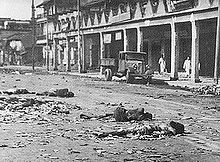
In January 1946, a number of mutinies broke out in the armed services, starting with that of RAF servicemen frustrated with their slow repatriation to Britain. The mutinies came to a head with mutiny of the Royal Indian Navy in Bombay in February 1946, followed by others in Calcutta, Madras, and Karachi. The mutinies were rapidly suppressed. Also in early 1946, new elections were called and Congress candidates won in eight of the eleven provinces.
Late in 1946, the Labour government decided to end British rule of India, and in early 1947 Britain announced its intention of transferring power no later than June 1948 and participating in the formation of an interim government.
Along with the desire for independence, tensions between Hindus and Muslims had also been developing over the years. The Muslims had always been a minority within the Indian subcontinent, and the prospect of an exclusively Hindu government made them wary of independence; they were as inclined to mistrust Hindu rule as they were to resist the foreign Raj, although Gandhi called for unity between the two groups in an astonishing display of leadership.
Muslim League leader Muhammad Ali Jinnah proclaimed 16 August 1946 as Direct Action Day, with the stated goal of highlighting, peacefully, the demand for a Muslim homeland in British India, which resulted in the outbreak of the cycle of violence that would be later called the "Great Calcutta Killing of August 1946". The communal violence spread to Bihar (where Muslims were attacked by Hindus), to Noakhali in Bengal (where Hindus were targeted by Muslims), in Garhmukteshwar in the United Provinces (where Muslims were attacked by Hindus), and on to Rawalpindi in March 1947 in which Hindus were attacked or driven out by Muslims.
Independence and partition (c. 1947–present)[edit]
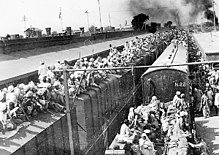
The British Indian territories gained independence in 1947, after being partitioned into the Union of India and Dominion of Pakistan. Following the controversial division of pre-partition Punjab and Bengal, rioting broke out between Sikhs, Hindus and Muslims in these provinces and spread to several other parts of India, leaving some 500,000 dead.[521] Also, this period saw one of the largest mass migrations ever recorded in modern history, with a total of 12 million Hindus, Sikhs and Muslims moving between the newly created nations of India and Pakistan (which gained independence on 15 and 14 August 1947 respectively).[521] In 1971, Bangladesh, formerly East Pakistan and East Bengal, seceded from Pakistan.[522]
Historiography[edit]
In recent decades there have been four main schools of historiography in how historians study India: Cambridge, Nationalist, Marxist, and subaltern. The once common "Orientalist" approach, with its image of a sensuous, inscrutable, and wholly spiritual India, has died out in serious scholarship.[523]
The "Cambridge School", led by Anil Seal,[524] Gordon Johnson,[525] Richard Gordon, and David A. Washbrook,[526] downplays ideology.[527] However, this school of historiography is criticised for western bias or Eurocentrism.[528]
The Nationalist school has focused on Congress, Gandhi, Nehru and high level politics. It highlighted the Mutiny of 1857 as a war of liberation, and Gandhi's 'Quit India' begun in 1942, as defining historical events. This school of historiography has received criticism for Elitism.[529]
The Marxists have focused on studies of economic development, landownership, and class conflict in precolonial India and of deindustrialisation during the colonial period. The Marxists portrayed Gandhi's movement as a device of the bourgeois elite to harness popular, potentially revolutionary forces for its own ends. Again, the Marxists are accused of being "too much" ideologically influenced.[530]
The "subaltern school", was begun in the 1980s by Ranajit Guha and Gyan Prakash.[531] It focuses attention away from the elites and politicians to "history from below", looking at the peasants using folklore, poetry, riddles, proverbs, songs, oral history and methods inspired by anthropology. It focuses on the colonial era before 1947 and typically emphasises caste and downplays class, to the annoyance of the Marxist school.[532]
More recently, Hindu nationalists have created a version of history to support their demands for "Hindutva" ("Hinduness") in Indian society. This school of thought is still in the process of development.[533] In March 2012, Diana L. Eck, professor of Comparative Religion and Indian Studies at Harvard University, authored in her book "India: A Sacred Geography", that idea of India dates to a much earlier time than the British or the Mughals and it wasn't just a cluster of regional identities and it wasn't ethnic or racial.[534][535][536][537]
See also[edit]
References[edit]
Notes[edit]
- ^ Demkina et al. (2017): "In the second millennium BC, humidization of the climate led to the divergence of the soil cover with secondary formation of the complexes of chestnut soils and solonetzes. This paleoecological crisis had a significant effect on the economy of the tribes in the Late Catacomb and Post-Catacomb time stipulating their higher mobility and transition to the nomadic cattle breeding."[54]
- ^ See also Eurogenes Blogspot, The crisis.
- ^ The "First urbanization" was the Indus Valley Civilisation.[100]
- ^ Many historians consider Attock to be the final frontier of the Maratha Empire[416]
Citations[edit]
- ^ Michael D. Petraglia, Bridget Allchin (2007-05-22). The Evolution and History of Human Populations in South Asia: Inter-disciplinary Studies in Archaeology, Biological Anthropology, Linguistics and Genetics. Springer Science & Business Media. p. 6. ISBN 978-1-4020-5562-1.
- ^ a b Wright, Rita P. (2009), The Ancient Indus: Urbanism, Economy, and Society, Cambridge University Press, pp. 44, 51, ISBN 978-0-521-57652-9
- ^ Wright, Rita P. (2009), The Ancient Indus: Urbanism, Economy, and Society, Cambridge University Press, pp. 115–125, ISBN 978-0-521-57652-9
- ^ a b c Flood, Gavin D. (1996), An Introduction to Hinduism, Cambridge University Press, p. 82, ISBN 978-0-521-43878-0
- ^ Flood, Gavin. Olivelle, Patrick. 2003. The Blackwell Companion to Hinduism. Malden: Blackwell. pp. 273–274
- ^ Researches Into the History and Civilization of the Kirātas by G. P. Singh p. 33
- ^ a b A Social History of Early India by Brajadulal Chattopadhyaya p. 259
- ^ a b Technology and Society by Menon, R.V.G. p. 15
- ^ The Political Economy of Craft Production: Crafting Empire in South India, by Carla M. Sinopoli, p. 201
- ^ Science in India by B.V. Subbarayappa
- ^ The Cambridge History of Southeast Asia: From Early Times to c. 1800, Band 1 by Nicholas Tarling, p. 281
- ^ Flood, Gavin. Olivelle, Patrick. 2003. The Blackwell Companion to Hinduism. Malden: Blackwell. pp. 273–274.
- ^ Ancient Indian History and Civilization by Sailendra Nath Sen p. 281
- ^ Societies, Networks, and Transitions, Volume B: From 600 to 1750 by Craig Lockard p. 333
- ^ Power and Plenty: Trade, War, and the World Economy in the Second Millennium by Ronald Findlay, Kevin H. O'Rourke p. 67
- ^ Essays on Ancient India by Raj Kumar p. 199
- ^ Al Baldiah wal nahaiyah vol: 7 p. 141 "Conquest of Makran"
- ^ The Princeton Encyclopedia of Islamic Political Thought: p. 340
- ^ a b "India before the British: The Mughal Empire and its Rivals, 1526–1857". University of Exeter.
- ^ Ian Copland; Ian Mabbett; Asim Roy; et al. (2012). A History of State and Religion in India. Routledge. p. 161.
- ^ History of Mysore Under Hyder Ali and Tippoo Sultan by Joseph Michaud p. 143
- ^ Robb 2001, pp. 151–152.
- ^ Metcalf, B.; Metcalf, T.R. (2006), A Concise History of Modern India (2nd ed.), pp. 94–99.
- ^ Minahan, James (2012). Ethnic Groups of South Asia and the Pacific: An Encyclopedia: An Encyclopedia. ABC-CLIO. p. 139. ISBN 978-1-59884-660-7.
- ^ "Indian Economy During British Rule". yourarticlelibrary.com. 2014-05-08. Retrieved 6 January 2017.
- ^ "Economic Impact of the British Rule in India | Indian History". historydiscussion.net. 2016-08-24. Retrieved 6 January 2017.
- ^ Chauhan 2010, p. 147.
- ^ a b c Petraglia & Allchin 2007, pp. 5-6.
- ^ a b c Petraglia 2010, pp. 167-170.
- ^ Murray, Tim (1999). Time and Archaeology. London: Routledge. p. 84. ISBN 978-0-415-11762-3.
- ^ a b c d Chauhan 2010, pp. 147-160.
- ^ Claudio Tuniz; Richard Gillespie; Cheryl Jones (16 June 2016). The Bone Readers: Science and Politics in Human Origins Research. Routledge. pp. 163–. ISBN 978-1-315-41888-9.
- ^ Petraglia, Michael D.; Haslam, Michael; Fuller, Dorian Q.; Boivin, Nicole; Clarkson, Chris (25 March 2010). "Out of Africa: new hypotheses and evidence for the dispersal of Homo sapiens along the Indian Ocean rim" (PDF). Annals of Human Biology. 37 (3): 288–311. doi:10.3109/03014461003639249. PMID 20334598.
- ^ Mellars, Paul; Gori, Kevin C.; Carr, Martin; Soares, Pedro A.; Richards, Martin B. (25 June 2013). "Genetic and archaeological perspectives on the initial modern human colonization of southern Asia". Proceedings of the National Academy of Sciences. 110 (26): 10699–10704. Bibcode:2013PNAS..11010699M. doi:10.1073/pnas.1306043110. PMC 3696785. PMID 23754394.
- ^ "Edakkal Caves|Places Around in Wayanad". globalvisiontours.com. Retrieved 6 January 2017.
- ^ Protecting megaliths to keep history alive The Hindu daily
- ^ "Archaeologists rock solid behind Edakkal Cave". The Hindu. Chennai, India. 28 October 2007.
- ^ Peter Bellwood; Immanuel Ness (2014). The Global Prehistory of Human Migration. John Wiley & Sons. p. 250. ISBN 978-1-118-97059-1.
- ^ Jarrige, C.; Jarrige, J.-F.; Meadow, R.H.; Quivron, G. (1995). Mehrgarh Field Reports 1975 to 1985 – from the Neolithic to the Indus Civilisation. Dept. of Culture and Tourism, Govt. of Sindh, and the Ministry of Foreign Affairs, France.
- ^ Khandekar, Nivedita (4 November 2012). "Indus Valley 2,000 years older than thought". Hindustan Times. Archived from the original on 24 October 2014. Retrieved 12 July 2013.
- ^ Kenoyer 1998.
- ^ Takezawa, Suichi. "Stepwells -Cosmology of Subterranean Architecture as seen in Adalaj" (PDF). The Diverse Architectural World of the Indian Sub-Continent. III. Retrieved 2009-11-18.
- ^ a b Wright 2010.
- ^ McIntosh, Jane (2008), The Ancient Indus Valley: New Perspectives, ABC-CLIO, p. 387, ISBN 978-1-57607-907-2
- ^ a b c d e Singh, Upinder (2008). A History of Ancient and Early medieval India : from the Stone Age to the 12th century. New Delhi: Pearson Education. p. 137. ISBN 978-81-317-1120-0.
- ^ Francfort: Fouilles de Shortughai, pl. 75, no. 7
- ^ Early India: A Concise History, D.N. Jha, 2004, p. 31
- ^ Mahadevan, Iravatham (6 May 2006). "Stone celts in Harappa". Harappa. Archived from the original on 4 September 2006.
- ^ Rahman, Tariq. "Peoples and languages in pre-islamic Indus valley". Archived from the original on 9 May 2008. Retrieved 20 November 2008.
most scholars have taken the 'Dravidian hypothesis' seriously
- ^ Cole, Jennifer. "The Sindhi language" (PDF). Archived from the original (PDF) on 6 January 2007. Retrieved 20 November 2008.
Harappan language...prevailing theory indicates Dravidian origins
- ^ Edwin Bryant (2003). The Quest for the Origins of Vedic Culture: The Indo-Aryan Migration Debate. Oxford. p. 183. ISBN 978-0-19-516947-8.
- ^ Mallory, J.P. (1989). In Search of the Indo-Europeans: Language, Archaeology and Myth. London: Thames and Hudson. p. 44. ISBN 978-0-500-05052-1.
There are still remnant northern Dravidian languages including Brahui ... The most obvious explanation of this situation is that the Dravidian languages once occupied nearly all of the Indian subcontinent and it is the intrusion of Indo-Aryans that engulfed them in northern India leaving but a few isolated enclaves. This is further supported by the fact that Dravidian loan words begin to appear in Sanskrit literature from its very beginning.
- ^ a b Rajesh Kochhar (2017), The Aryan chromosome, The Indian ERxpress
- ^ a b c Demkina 2017.
- ^ "Indus Collapse: The End or the Beginning of an Asian Culture?". Science Magazine. 320: 1282–3. 6 June 2008.
- ^ a b c Giosan, L.; et al. (2012). "Fluvial landscapes of the Harappan Civilization". Proceedings of the National Academy of Sciences USA. 109 (26): E1688–E1694. Bibcode:2012PNAS..109E1688G. doi:10.1073/pnas.1112743109. PMC 3387054. PMID 22645375.
- ^ Clift et al., 2011, U-Pb zircon dating evidence for a Pleistocene Sarasvati River and capture of the Yamuna River, Geology, 40, 211–214 (2011). [1]
- ^ Tripathi, Jayant K.; Tripathi, K.; Bock, Barbara; Rajamani, V. & Eisenhauer, A. (25 October 2004). "Is River Ghaggar, Saraswati? Geochemical Constraints" (PDF). Current Science. 87 (8).
- ^ Rachel Nuwer (28 May 2012). "An Ancient Civilization, Upended by Climate Change". LiveScience. Retrieved 29 May 2012.
- ^ Charles Choi (29 May 2012). "Huge Ancient Civilization's Collapse Explained". New York Times. Retrieved 18 May 2016.
- ^ Staubwasser, M.; et al. (2003). "Climate change at the 4.2 ka BP termination of the Indus valley civilization and Holocene south Asian monsoon variability". Geophysical Research Letters. 30 (8): 1425. Bibcode:2003GeoRL..30.1425S. doi:10.1029/2002GL016822.
- ^ Madella, Marco; Fuller, Dorian (2006). "Palaeoecology and the Harappan Civilisation of South Asia: a reconsideration". Quaternary Science Reviews. 25 (11–12): 1283–1301. Bibcode:2006QSRv...25.1283M. doi:10.1016/j.quascirev.2005.10.012.
- ^ MacDonald, Glen (2011). "Potential influence of the Pacific Ocean on the Indian summer monsoon and Harappan decline". Quaternary International. 229 (1–2): 140–148. Bibcode:2011QuInt.229..140M. doi:10.1016/j.quaint.2009.11.012.
- ^ Brooke, John L. (2014), Climate Change and the Course of Global History: A Rough Journey, Cambridge University Press, p. 296, ISBN 978-0-521-87164-8
- ^ Anthony 2007.
- ^ Parpola 2015.
- ^ Upinder Singh (2008). A History of Ancient and Early Medieval India: From the Stone Age to the 12th Century. Pearson Education India. p. 211. ISBN 978-81-317-1120-0.
- ^ Bongard-Levin 1979, p. 51.
- ^ MacKenzie, Lynn (1995). Non-Western Art: A Brief Guide. Prentice Hall. p. 151.
- ^ Romila Thapar, A History of India: Part 1, pp. 29–30.
- ^ a b Singh, U. (2009), A History of Ancient and Mediaeval India: From the Stone Age to the 12th Century, Delhi: Longman, p. 255, ISBN 978-81-317-1677-9
- ^ Staal, Frits (1986), The Fidelity of Oral Tradition and the Origins of Science, Mededelingen der Koninklijke Nederlandse Akademie von Wetenschappen, Afd. Letterkunde, NS 49, 8. Amsterdam: North Holland Publishing Company, 40 pages
- ^ Antennae Sword, The Metropolitan Museum of Art, retrieved 4 February 2019,
These anthropomorphic figures, harpoons, ax blades (celts), and antennae swords were cast and hammered from unalloyed copper. They may be dated to 1500 to 1000 B.C. Given that pure copper is a relatively soft metal and most of the objects show little or no signs of wear, it seems likely that their function was largely dedicatory. Hoards of such objects have been found across north India, the greatest concentration being in Uttar Pradesh. The findspots suggest they were ritually deposited in rivers or marshes, though several related antennae swords were recorded in late Indus Valley civilization (ca. 1500 B.C.) burials at Sanauli.
- ^ Stein, B. (27 April 2010), Arnold, D., ed., A History of India (2nd ed.), Oxford: Wiley-Blackwell, p. 47, ISBN 978-1-4051-9509-6
- ^ Kulke, H.; Rothermund, D. (1 August 2004), A History of India, 4th, Routledge, p. 31, ISBN 978-0-415-32920-0
- ^ Singhal, K.C; Gupta, Roshan. The Ancient History of India, Vedic Period: A New Interpretation. Atlantic Publishers and Distributors. ISBN 81-269-0286-8. pp. 150–151.
- ^ Day, Terence P. (1982). The Conception of Punishment in Early Indian Literature. Ontario: Wilfrid Laurier University Press. pp. 42–45. ISBN 978-0-919812-15-4.
- ^ Duiker, William; Spielvogel, Jackson (2012). World History. Cengage learning. p. 90.
- ^ Nelson, James M. Psychology, Religion, and Spirituality. Springer. p. 77.
- ^ Flood, Gavin D. (1996), An Introduction to Hinduism, Cambridge University Press, p. 37, ISBN 978-0-521-43878-0
- ^ "India: The Late 2nd Millennium and the Reemergence of Urbanism". Encyclopædia Britannica. Retrieved 12 May 2007.
- ^ a b Reddy 2003, p. A11.
- ^ a b Michael Witzel (1989), Tracing the Vedic dialects in Dialectes dans les litteratures Indo-Aryennes ed. Caillat, Paris, 97–265.
- ^ Samuel 2010, p. 48–51, 61–93.
- ^ Kulke & Rothermund 2004, pp. 41–43.
- ^ Singh 2009, p. 200.
- ^ Witzel, Michael (2000). "The Languages of Harappa". In Kenoyer, J.. Proceedings of the conference on the Indus civilization.
- ^ Schmidt, H.P. Notes on Rgveda 7.18.5–10. Indica. Organ of the Heras Institute, Bombay. Vol. 17, 1980, 41–47.
- ^ Śrīrāma Goyala (1994). The Coinage of Ancient India. Kusumanjali Prakashan.
- ^ Charles Rockwell Lanman (1912), A Sanskrit reader: with vocabulary and notes, Boston: Ginn & Co.,
... jána, m. creature; man; person; in plural, and collectively in singular, folks; a people or race or tribe ... cf. γένος, Lat. genus, Eng. kin, 'race' ...
- ^ Stephen Potter, Laurens Christopher Sargent (1974), Pedigree: the origins of words from nature, Taplinger,
... *gen-, found in Skt. jana, 'a man', and Gk. genos and L. genus, 'a race' ...
- ^ Abhijit Basu (2013). Marvels and Mysteries of the Mahabharata. Leadstart Publishing Pvt Ltd. p. 153.
- ^ a b c d e Witzel, Michael (1995). "Early Sanskritization. Origins and Development of the Kuru State". Electronic Journal of Vedic Studies. 1 (4): 1–26. doi:10.11588/ejvs.1995.4.823.
- ^ Samuel 2010, pp. 45–51.
- ^ H.C. Raychaudhuri (1950), Political History of Ancient India and Nepal, Calcutta: University of Calcutta, p. 58
- ^ Valmiki (March 1990). Goldman, Robert P, ed. The Ramayana of Valmiki: An Epic of Ancient India, Volume 1: Balakanda. Ramayana of Valmiki. Princeton, New Jersey: Princeton University Press. p. 23. ISBN 978-0-691-01485-2.
- ^ Romila Thapar, A History of India Part 1, p. 31.
- ^ a b Singh 2009, p. 18–21.
- ^ Brockington, J.L. (1998). The Sanskrit epics, Part 2. Volume 12. Brill. p. 21. ISBN 978-90-04-10260-6.
- ^ a b c Samuel 2010.
- ^ James Heitzman (2008). The City in South Asia. Routledge. pp. 12–13. ISBN 978-1-134-28963-9.
- ^ a b Samuel 2010, p. 48–51.
- ^ Samuel 2010, p. 42–48.
- ^ Samuel 2010, p. 61.
- ^ Samuel 2010, p. 49.
- ^ Juan Mascaró (1965). The Upanishads. Penguin Books. pp. 7–. ISBN 978-0-14-044163-5.
- ^ Olivelle, Patrick (2008), Upaniṣads, Oxford University Press, p. xxiv–xxix, ISBN 978-0-19-954025-9
- ^ Melton, J. Gordon; Baumann, Martin (2010), Religions of the World, Second Edition: A Comprehensive Encyclopedia of Beliefs and Practices, ABC-CLIO, p. 1324, ISBN 978-1-59884-204-3
- ^ Flood, Gavin. Olivelle, Patrick. 2003. The Blackwell Companion to Hinduism. Malden: Blackwell. pp. 273–274. "The second half of the first millennium BC was the period that created many of the ideological and institutional elements that characterize later Indian religions. The renouncer tradition played a central role during this formative period of Indian religious history. ... Some of the fundamental values and beliefs that we generally associate with Indian religions in general and Hinduism, in particular, were in part the creation of the renouncer tradition. These include the two pillars of Indian theologies: samsara—the belief that life in this world is one of suffering and subject to repeated deaths and births (rebirth); moksa/nirvana—the goal of human existence....."
- ^ Laumakis, Stephen. An Introduction to Buddhist philosophy. 2008. p. 4
- ^ Mary Pat Fisher (1997) In: Living Religions: An Encyclopedia of the World's Faiths I.B. Tauris : London ISBN 1-86064-148-2 – Jainism's major teacher is the Mahavira, a contemporary of the Buddha, and who died approximately 526 BC. p. 114
- ^ Mary Pat Fisher (1997) In: Living Religions: An Encyclopedia of the World's Faiths I.B.Tauris : London ISBN 1-86064-148-2 "The extreme antiquity of Jainism as a non-Vedic, indigenous Indian religion is well documented. Ancient Hindu and Buddhist scriptures refer to Jainism as an existing tradition which began long before Mahavira." p. 115
- ^ Singh, Upinder (2008). A History of Ancient and Early Medieval India: From the Stone Age to the 12th Century. Delhi: Pearson Education. pp. 260–4. ISBN 978-81-317-1120-0.
- ^ Anguttara Nikaya I. p. 213; IV. pp. 252, 256, 261.
- ^ a b Reddy 2003, p. A107.
- ^ a b c Thapar, Romila (2002). Early India: From the Origins to AD 1300. University of California. pp. 146–150. ISBN 9780520242258. Retrieved 28 October 2013.
- ^ Raychaudhuri Hemchandra (1972), Political History of Ancient India, Calcutta: University of Calcutta, p. 107
- ^ Republics in ancient India. Brill Archive. pp. 93–. GGKEY:HYY6LT5CFT0.
- ^ J.M. Kenoyer (2006), "Cultures and Societies of the Indus Tradition. In Historical Roots" in the Making of 'the Aryan, R. Thapar (ed.), pp. 21–49. New Delhi, National Book Trust.
- ^ Shaffer, Jim. 1993, "Reurbanization: The eastern Punjab and beyond". In Urban Form and Meaning in South Asia: The Shaping of Cities from Prehistoric to Precolonial Times, ed. H. Spodek and D.M. Srinivasan.
- ^ Asiatic Mythology by J. Hackin pp. 83ff
- ^ Ramesh Chandra Majumdar (1977). Ancient India. Motilal Banarsidass Publishers. ISBN 978-81-208-0436-4.
- ^ "Magadha Empire".
- ^ "Lumbini Development Trust: Restoring the Lumbini Garden". lumbinitrust.org. Archived from the original on 6 March 2014. Retrieved 6 January 2017.
- ^ Mookerji 1988, p. 28–33.
- ^ Upinder Singh 2016, p. 273.
- ^ Mookerji 1988, p. 34.
- ^ a b c Sastri 1988, p. 16.
- ^ Gabriel, Richard A. (30 November 2002), The great armies of antiquity (1.udg. ed.), Westport, Conn. [u.a.]: Praeger, p. 218, ISBN 978-0-275-97809-9, archived from the original on 5 January 2014
- ^ Raychaudhuri & Mukherjee 1996, pp. 204-210.
- ^ a b Romila Thapar. A History of India: Part 1. p. 58.
- ^ Department of Ancient Near Eastern Art (October 2004). "The Achaemenid Persian Empire (550–330 B.C.)". Timeline of Art History. New York: The Metropolitan Museum of Art. Retrieved 19 May 2007.
- ^ Romila Thapar, A History of India, p. 59.
- ^ Carl Roebuck, The World of Ancient Times (Charles Scribner's Sons Publishing: New York, 1966) p. 357.
- ^ Fuller, J.F.C. (3 February 2004). "Alexander's Great Battles". The Generalship of Alexander the Great (Reprint ed.). New York: Da Capo Press. pp. 188–199. ISBN 978-0-306-81330-6.
- ^ Fuller, pg 198
"While the battle raged, Craterus forced his way over the Haranpur ford. When he saw that Alexander was winning a brilliant victory he pressed on and, as his men were fresh, took over the pursuit."
- ^ The Anabasis of Alexander Book V/Chapter XVIII
- ^ The Anabasis of Alexander Book V/Chapter XIX
- ^ Peter Connolly. Greece and Rome At War. Macdonald Phoebus Ltd, 1981, p. 66
- ^ Bongard-Levin, G. (1979). A History of India. Moscow: Progress Publishers. p. 264.
- ^ National Museum of Iran [[:File:Darius I statue list of subject c]ountries.jpg|notice]]
- ^ A.B. Bosworth 1996, p. 189.
- ^ Turchin, Peter; Adams, Jonathan M.; Hall, Thomas D. (December 2006). "East–West Orientation of Historical Empires". Journal of World-systems Research. 12 (2): 223. ISSN 1076-156X. Retrieved 12 September 2016.
- ^ Romila Thapar. A History of India: Volume 1. p. 70.
- ^ a b Thapar 2003, pp. 178–180.
- ^ a b Thapar 2003, pp. 204–206.
- ^ Bhandari, Shirin (2016-01-05). "Dinner on the Grand Trunk Road". Roads & Kingdoms. Retrieved 2016-07-19.
- ^ Kulke & Rothermund 2004, p. 67.
- ^ Romila Thapar. A History of India: Volume 1. p. 78.
- ^ Bongard-Levin 1979, p. 91.
- ^ Rosen, Elizabeth S. (1975). "Prince ILango Adigal, Shilappadikaram (The anklet Bracelet), translated by Alain Damelou. Review". Artibus Asiae. 37 (1/2): 148–150. doi:10.2307/3250226. JSTOR 3250226.
- ^ Sen 1999, pp. 204–205.
- ^ Essays on Indian Renaissance by Raj Kumar p. 260
- ^ a b The First Spring: The Golden Age of India by Abraham Eraly p. 655
- ^ * Zvelebil, Kamil. 1973. The smile of Murugan on Tamil literature of South India. Leiden: Brill. Zvelebil dates the Ur-Tholkappiyam to the 1st or 2nd century BCE
- ^ "Silappathikaram Tamil Literature". Tamilnadu.com. 22 January 2013. Archived from the original on 11 April 2013.
- ^ Mukherjee 1999, p. 277
- ^ Manimekalai – English transliteration of Tamil original
- ^ Hardy, Adam (1995). Indian Temple Architecture: Form and Transformation : the Karṇāṭa Drāviḍa Tradition, 7th to 13th Centuries. Abhinav Publications. p. 39. ISBN 978-81-7017-312-0.
- ^ Le, Huu Phuoc (2010). Buddhist Architecture. Grafikol. p. 238. ISBN 978-0-9844043-0-8.
- ^ a b Stein, B. (27 April 2010), Arnold, D., ed., A History of India (2nd ed.), Oxford: Wiley-Blackwell, p. 105, ISBN 978-1-4051-9509-6
- ^ "The World Economy (GDP) : Historical Statistics by Professor Angus Maddison" (PDF). World Economy. Retrieved 21 May 2013.
- ^ Maddison, Angus (2006). The World Economy – Volume 1: A Millennial Perspective and Volume 2: Historical Statistics. OECD Publishing by Organisation for Economic Co-operation and Development. p. 656. ISBN 978-92-64-02262-1.
- ^ Stadtner, Donald (1975). "A Śuṅga Capital from Vidiśā". Artibus Asiae. 37 (1/2): 101–104. doi:10.2307/3250214. ISSN 0004-3648. JSTOR 3250214.
- ^ K.A. Nilkantha Shastri (1970), A Comprehensive History of India: Volume 2, p. 108: "Soon after Agnimitra there was no 'Sunga empire'".
- ^ Bhandare, Shailendra. "Numismatics and History: The Maurya-Gupta Interlude in the Gangetic Plain" in Between the Empires: Society in India, 300 to 400 ed. Patrick Olivelle (2006), p. 96
- ^ Osmund Bopearachchi, 2016, Emergence of Viṣṇu and Śiva Images in India: Numismatic and Sculptural Evidence
- ^ Hinüber (2000), pp. 83–86, para. 173–179.
- ^ World history from early times to AD 2000 by B.V. Rao: p. 97
- ^ Daniélou 2003, p. 136.
- ^ Ancient India by Ramesh Chandra Majumdar p. 234
- ^ "Parthian Pair of Earrings". Marymount School, New York. Archived from the original on 16 October 2007. Retrieved 22 November 2007.
- ^ Schreiber, Mordecai (2003). The Shengold Jewish Encyclopedia. Rockville, MD: Schreiber Publishing. p. 125. ISBN 978-1-887563-77-2.
- ^ The Medical Times and Gazette, Volume 1. London: John Churchill. 1867. p. 506.(Original from the University of Michigan)
- ^ Donkin 2003: 63
- ^ Collingham245: 2006
- ^ Fage 1975: 164
- ^ Greatest emporium in the world, CSI, UNESCO.
- ^ Loewe, Michael; Shaughnessy, Edward L. (1999). The Cambridge History of Ancient China: From the Origins of Civilization to 221 BC. Cambridge University Press. pp. 87–88. ISBN 978-0-521-47030-8. Retrieved 2013-11-01.
- ^ Runion, Meredith L. (2007). The history of Afghanistan. Westport: Greenwood Press. p. 46. ISBN 978-0-313-33798-7.
The Yuezhi people conquered Bactria in the second century BCE. and divided the country into five chiefdoms, one of which would become the Kushan Empire. Recognizing the importance of unification, these five tribes combined under the one dominate Kushan tribe, and the primary rulers descended from the Yuezhi.
- ^ Liu, Xinrui (2001). Adas, Michael, ed. Agricultural and pastoral societies in ancient and classical history. Philadelphia: Temple University Press. p. 156. ISBN 978-1-56639-832-9.
- ^ Buddhist Records of the Western World Si-Yu-Ki, (Tr. Samuel Beal: Travels of Fa-Hian, The Mission of Sung-Yun and Hwei-Sing, Books 1–5), Kegan Paul, Trench, Trubner & Co. Ltd. London. 1906 and Hill (2009), pp. 29, 318–350
- ^ which began about 127 CE. "Falk 2001, pp. 121–136", Falk (2001), pp. 121–136, Falk, Harry (2004), pp. 167–176 and Hill (2009), pp. 29, 33, 368–371.
- ^ Grégoire Frumkin (1970). Archaeology in Soviet Central Asia. Brill Archive. pp. 51–. GGKEY:4NPLATFACBB.
- ^ Rafi U. Samad (2011). The Grandeur of Gandhara: The Ancient Buddhist Civilization of the Swat, Peshawar, Kabul and Indus Valleys. Algora Publishing. pp. 93–. ISBN 978-0-87586-859-2.
- ^ Oxford History of India – Vincent Smith
- ^ Los Angeles County Museum of Art; Pratapaditya Pal (1986). Indian Sculpture: Circa 500 B.C.-A.D. 700. University of California Press. pp. 151–. ISBN 978-0-520-05991-7.
- ^ Ancient and Medieval History of India – H.G. Rowlinson
- ^ "The History of Pakistan: The Kushans". kushan.org. Retrieved 6 January 2017.
- ^ Si-Yu-Ki, Buddhist Records of the Western World, (Tr. Samuel Beal: Travels of Fa-Hian, The Mission of Sung-Yun and Hwei-Sing, Books 1–5), Kegan Paul, Trench, Trubner & Co. Ltd. London. 1906
- ^ Gupta Dynasty – MSN Encarta. Archived from the original on 1 November 2009.
- ^ "India – Historical Setting – The Classical Age – Gupta and Harsha". Historymedren.about.com. 2 November 2009. Retrieved 16 May 2010.
- ^ "Gupta Dynasty, Golden Age Of India". Nupam.com. Archived from the original on 2 August 2009. Retrieved 16 May 2010.
- ^ "The Age of the Guptas and After". Washington State University. 6 June 1999. Archived from the original on 6 December 1998. Retrieved 16 May 2010.
- ^ Ore, Oystein (1988). Number Theory and Its History. Courier Dover Publications. p. 19. ISBN 978-0-486-65620-5.
- ^ "Gupta dynasty (Indian dynasty)". Encyclopædia Britannica. Retrieved 16 May 2010.
- ^ "Gupta dynasty: empire in 4th century". Encyclopædia Britannica. Archived from the original on 30 March 2010. Retrieved 16 May 2010.
- ^ "The Story of India – Photo Gallery". PBS. Retrieved 16 May 2010.
- ^ Iaroslav Lebedynsky, Les Nomades, p. 172.
- ^ Early History of India, p. 339, Dr V.A. Smith; See also Early Empire of Central Asia (1939), W.M. McGovern.
- ^ Ancient India, 2003, p. 650, Dr V.D. Mahajan; History and Culture of Indian People, The Age of Imperial Kanauj, p. 50, Dr R.C. Majumdar, Dr A.D. Pusalkar.
- ^ Gopal, Madan (1990). K.S. Gautam, ed. India through the ages. Publication Division, Ministry of Information and Broadcasting, Government of India. p. 173.
- ^ The precise number varies according to whether or not some barely started excavations, such as cave 15A, are counted. The ASI say "In all, total 30 excavations were hewn out of rock which also include an unfinished one", UNESCO and Spink "about 30". The controversies over the end date of excavation is covered below.
- ^ Tej Ram Sharma, 1978, "Personal and geographical names in the Gupta inscriptions. (1.publ.)", p. 254, Kamarupa consisted of the Western districts of the Brahmaputra valley which being the most powerful state.
- ^ Suresh Kant Sharma, Usha Sharma – 2005, "Discovery of North-East India: Geography, History, Culture, ... – Volume 3", p. 248, Davaka (Nowgong) and Kamarupa as separate and submissive friendly kingdoms.
- ^ The eastern border of Kamarupa is given by the temple of the goddess Tamreshvari (Pūrvāte Kāmarūpasya devī Dikkaravasini in Kalika Purana) near present-day Sadiya. "...the temple of the goddess Tameshwari (Dikkaravasini) is now located at modern Sadiya about 100 miles to the northeast of Sibsagar" (Sircar 1990, pp. 63–68).
- ^ Swami, Parmeshwaranand (2001). Encyclopaedic Dictionary of the Puranas. New Delhi: Sarup and Sons. p. 941. ISBN 978-81-7625-226-3.
- ^ Barpujari, H.K., ed. (1990). The Comprehensive History of Assam (1st ed.). Guwahati, India: Assam Publication Board. OCLC 499315420.
- ^ Sarkar, J.N. (1992), "Chapter II The Turko-Afghan Invasions", in Barpujari, H.K., The Comprehensive History of Assam, 2, Guwahati: Assam Publication Board, pp. 35–48
- ^ "Pallava script". SkyKnowledge.com. 30 December 2010.
- ^ Nilakanta Sastri, pp. 412–413
- ^ Hall, John Whitney, ed. (2005) [1988]. "India". History of the World: Earliest Times to the Present Day. John Grayson Kirk. 455 Somerset Avenue, North Dighton, MA 02764, USA: World Publications Group. p. 246. ISBN 978-1-57215-421-6.
- ^ Hiuen Tsiang, Si-Yu-Ki, Buddhist Records of the Western World, (Tr. Samuel Beal), Kegan Paul, Trench, Trubner & Co. Ltd. London. 1906, pp. 167–168.
- ^ History of India by N. Jayapalan p. 134
- ^ Hans Bakker 50 years that changed India (Timeline)
- ^ Fleet, John F. Corpus Inscriptionum Indicarum: Inscriptions of the Early Guptas. Vol. III. Calcutta: Government of India, Central Publications Branch, 1888, 150sq.
- ^ Corpus Inscriptionum Indicarum Vol 3 p. 145
- ^ "CNG: eAuction 329. INDIA, Post-Gupta (Ganges Valley). Vardhanas of Thanesar and Kanauj. Harshavardhana. Circa AD 606-647. AR Drachm (13mm, 2.28 g, 1h)". www.cngcoins.com.
- ^ RN Kundra & SS Bawa, History of Ancient and Medieval India
- ^ a b c International Dictionary of Historic Places: Asia and Oceania by Trudy Ring, Robert M. Salkin, Sharon La Boda p .507
- ^ "Harsha". Encyclopædia Britannica. 2015.
- ^ "Sthanvishvara (historical region, India)". Encyclopædia Britannica. Retrieved 2014-08-09.
- ^ "Harsha (Indian emperor)". Encyclopædia Britannica. Retrieved 2014-08-09.
- ^ a b c Michaels 2004, p. 41.
- ^ Michaels 2004, p. 43.
- ^ Sanderson, Alexis (2009). "The Śaiva Age: The Rise and Dominance of Śaivism during the Early Medieval Period". In Einoo, Shingo. Genesis and Development of Tantrism. Institute of Oriental Culture Special Series no. 23. Tokyo: Institute of Oriental Culture, University of Tokyo. pp. 41–43.
- ^ Sheridan, Daniel P. "Kumarila Bhatta", in Great Thinkers of the Eastern World, ed. Ian McGready, New York: Harper Collins, 1995, pp. 198–201. ISBN 0-06-270085-5.
- ^ Johannes de Kruijf and Ajaya Sahoo (2014), Indian Transnationalism Online: New Perspectives on Diaspora, ISBN 978-1-4724-1913-2, p. 105, Quote: "In other words, according to Adi Shankara's argument, the philosophy of Advaita Vedanta stood over and above all other forms of Hinduism and encapsulated them. This then united Hinduism; [...] Another of Adi Shankara's important undertakings which contributed to the unification of Hinduism was his founding of a number of monastic centers."
- ^ "Shankara", Student's Encyclopædia Britannica – India (2000), Volume 4, Encyclopædia Britannica (UK) Publishing, ISBN 978-0-85229-760-5, p. 379, Quote: "Shankaracharya, philosopher and theologian, most renowned exponent of the Advaita Vedanta school of philosophy, from whose doctrines the main currents of modern Indian thought are derived.";
David Crystal (2004), The Penguin Encyclopedia, Penguin Books, p. 1353, Quote: "[Shankara] is the most famous exponent of Advaita Vedanta school of Hindu philosophy and the source of the main currents of modern Hindu thought." - ^ Christophe Jaffrelot (1998), The Hindu Nationalist Movement in India, Columbia University Press, ISBN 978-0-231-10335-0, p. 2, Quote: "The main current of Hinduism – if not the only one – which became formalized in a way that approximates to an ecclesiastical structure was that of Shankara".
- ^ Shyama Kumar Chattopadhyaya (2000) The Philosophy of Sankar's Advaita Vedanta, Sarup & Sons, New Delhi ISBN 81-7625-222-0, 978-81-7625-222-5
- ^ Edward Roer (Translator), Shankara's Introduction, p. 3, at Google Books to Brihad Aranyaka Upanishad at pp. 3–4; Quote – "[...] Lokayatikas and Bauddhas who assert that the soul does not exist. There are four sects among the followers of Buddha: 1. Madhyamicas who maintain all is void; 2. Yogacharas, who assert except sensation and intelligence all else is void; 3. Sautranticas, who affirm actual existence of external objects no less than of internal sensations; 4. Vaibhashikas, who agree with later (Sautranticas) except that they contend for immediate apprehension of exterior objects through images or forms represented to the intellect."
- ^ Edward Roer (Translator), Shankara's Introduction, p. 3, at Google Books to Brihad Aranyaka Upanishad at p. 3, OCLC 19373677
- ^ KN Jayatilleke (2010), Early Buddhist Theory of Knowledge, ISBN 978-81-208-0619-1, pp. 246–249, from note 385 onwards;
Steven Collins (1994), Religion and Practical Reason (Editors: Frank Reynolds, David Tracy), State Univ of New York Press, ISBN 978-0-7914-2217-5, p. 64; Quote: "Central to Buddhist soteriology is the doctrine of not-self (Pali: anattā, Sanskrit: anātman, the opposed doctrine of ātman is central to Brahmanical thought). Put very briefly, this is the [Buddhist] doctrine that human beings have no soul, no self, no unchanging essence.";
Edward Roer (Translator), Shankara's Introduction, p. 2–4, at Google Books
Katie Javanaud (2013), Is The Buddhist 'No-Self' Doctrine Compatible With Pursuing Nirvana?, Philosophy Now;
John C. Plott et al. (2000), Global History of Philosophy: The Axial Age, Volume 1, Motilal Banarsidass, ISBN 978-81-208-0158-5, p. 63, Quote: "The Buddhist schools reject any Ātman concept. As we have already observed, this is the basic and ineradicable distinction between Hinduism and Buddhism". - ^ The Seven Spiritual Laws Of Yoga, Deepak Chopra, John Wiley & Sons, 2006, ISBN 81-265-0696-2, ISBN 978-81-265-0696-5
- ^ Schimmel, Annemarie Schimmel, Religionen – Islam in the Indian Subcontinent, Brill Academic Publishers, 1980, ISBN 978-90-04-06117-0, p. 4
- ^ Avari, Burjor (2007). India: The Ancient Past. A History of the Indian-Subcontinent from 7000 BC to AD 1200. New York: Routledge. pp. 204–205. ISBN 978-0-203-08850-0.
Madhyadesha became the ambition of two particular clans among a tribal people in Rajasthan, known as Gurjara and Pratihara. They were both parts of a larger federation of tribes, some of which later came to be known as the Rajputs
- ^ Kamath (2001), pp100–103
- ^ Vinod Chandra Srivastava 2008, p. 857.
- ^ a b The Dancing Girl: A History of Early India by Balaji Sadasivan p. 129
- ^ Pollock, Sheldon (2006). The Language of the Gods in the World of Men: Sanskrit, Culture, and Power in Premodern India. University of California Press. pp. 241–242. ISBN 978-0-520-93202-9.
- ^ Sunil Fotedar (June 1984). The Kashmir Series: Glimpses of Kashmiri Culture – Vivekananda Kendra, Kanyakumari (p. 57).
- ^ R.C. Mazumdar, Ancient India, p. 383
- ^ Johannes de Kruijf and Ajaya Sahoo (2014), Indian Transnationalism Online: New Perspectives on Diaspora, ISBN 978-1-4724-1913-2, p. 105, Quote: "In other words, according to Adi Shankara's argument, the philosophy of Advaita Vedanta stood over and above all other forms of Hinduism and encapsulated them. This then united Hinduism; (...) Another of Adi Shankara's important undertakings which contributed to the unification of Hinduism was his founding of a number of monastic centers."
- ^ Philip Wilkinson (2008), India: People, Place, Culture and History, ISBN 978-1-4053-2904-0, pp. 352–353
- ^ Thapar 2003, p. 334.
- ^ a b c Chandra, Satish (2009). History of Medieval India. New Delhi: Orient Blackswan Private Limited. pp. 19–20. ISBN 978-81-250-3226-7.
- ^ Kamath (2001), p. 89
- ^ "Mathematical Achievements of Pre-modern Indian Mathematicians", Putta Swamy T.K., 2012, chapter=Mahavira, p. 231, Elsevier Publications, London, ISBN 978-0-12-397913-1
- ^ Sen 1999, p. 380.
- ^ Sen 1999, pp. 380–381.
- ^ Daniélou 2003, p. 170.
- ^ The Britannica Guide to Algebra and Trigonometry by William L. Hosch p. 105
- ^ Wink, André (2002). Al-Hind: Early Medieval India and the Expansion of Islam, 7th–11th Centuries. Leiden: BRILL. p. 284. ISBN 978-0-391-04173-8.
- ^ Avari 2007, p. 303.
- ^ Sircar 1971, p. 146.
- ^ K.D. Bajpai (2006). History of Gopāchala. Bharatiya Jnanpith. p. 31. ISBN 978-81-263-1155-2.
- ^ Epigraphia Indica, XXIV, p. 43, Dr N.G. Majumdar
- ^ Nitish K. Sengupta (1 January 2011). Land of Two Rivers: A History of Bengal from the Mahabharata to Mujib. Penguin Books India. pp. 43–45. ISBN 978-0-14-341678-4.
- ^ Biplab Dasgupta (1 January 2005). European Trade and Colonial Conquest. Anthem Press. pp. 341–. ISBN 978-1-84331-029-7.
- ^ Hermann Kulke, Dietmar Rothermund (1998), A History of India, ISBN 978-0-203-44345-3
- ^ History of Buddhism in India, Translation by A Shiefner
- ^ a b c d Chandra, Satish (2009). History of Medieval India. New Delhi: Orient Blackswan Private Limited. pp. 13–15. ISBN 978-81-250-3226-7.
- ^ a b Sen 1999, p. 278.
- ^ PN Chopra; BN Puri; MN Das; AC Pradhan, eds. (2003). A Comprehensive History Of Ancient India (3 Vol. Set). Sterling. pp. 200–202. ISBN 978-81-207-2503-4.
- ^ History of Ancient India: Earliest Times to 1000 A.D. by Radhey Shyam Chaurasia p. 237
- ^ Kulke and Rothermund, p.. 115
- ^ Keay 2000, p. 215: The Cholas were in fact the most successful dynasty since the Guptas ... The classic expansion of Chola power began anew with the accession of Rajaraja I in 985.
- ^ "The Last Years of Cholas: The decline and fall of a dynasty". En.articlesgratuits.com. 22 August 2007. Archived from the original on 20 January 2010. Retrieved 23 September 2009.
- ^ K.A. Nilakanta Sastri, A History of South India, p. 158
- ^ Buddhism, Diplomacy, and Trade: The Realignment of Sino-Indian Relations by Tansen Sen p. 229
- ^ History of Asia by B.V. Rao p. 297
- ^ Indian Civilization and Culture by Suhas Chatterjee p. 417
- ^ a b A Comprehensive History of Medieval India: by Farooqui Salma Ahmed, Salma Ahmed Farooqui p. 24
- ^ Ancient Indian History and Civilization by Sailendra Nath Sen pp. 403–405
- ^ World Heritage Monuments and Related Edifices in India, Band 1 by ʻAlī Jāvīd pp. 132–134
- ^ History of Kannada Literature by E.P. Rice p. 32
- ^ Bilhana by Prabhakar Narayan Kawthekar, p. 29
- ^ Wink, André (2002) [first published 1996]. Al-Hind: The Making of the Indo-Islamic World. Brill. p. 192. ISBN 978-0-391-04173-8.
- ^ Pochhammer, Wilhelm von (1981), India's road to nationhood: a political history of the subcontinent, Allied Publishers, p. 198, ISBN 978-81-7764-715-0
- ^ Richard M. Eaton, "Temple Desecration and Indo-Muslim States", Part I, Frontline, 22 December 2000, p. 63.[2]
- ^ Narayan, Badri (2009). Fascinating Hindutva: Saffron Politics and Dalit Mobilisation. SAGE Publications. p. 86. ISBN 978-81-321-0105-5.
- ^ Benett, W.C. (1877). Gazetteer of the province of Oudh. 2. North-Western Provinces and Oudh Government Press. pp. 111–112.
- ^ André Wink (June 1991). Al- Hind: The slave kings and the Islamic conquest. 2. BRILL. pp. 127–. ISBN 978-90-04-09509-0.
- ^ "Shahi Family". Encyclopædia Britannica. 2006. Encyclopædia Britannica. Retrieved 2 January 2016.
- ^ Sehrai, Fidaullah (1979). Hund: The Forgotten City of Gandhara, p. 2. Peshawar Museum Publications New Series, Peshawar.
- ^ The Shahi Afghanistan and Punjab, 1973, pp. 1, 45–46, 48, 80, Dr D.B. Pandey; The Úakas in India and Their Impact on Indian Life and Culture, 1976, p. 80, Vishwa Mitra Mohan – Indo-Scythians; Country, Culture and Political life in early and medieval India, 2004, p. 34, Daud Ali.
- ^ Journal of the Royal Asiatic Society, 1954, pp. 112 ff; "The Shahis of Afghanistan and Punjab", 1973, p. 46, Dr D.B. Pandey; The Úakas in India and Their Impact on Indian Life and Culture, 1976, p. 80, Vishwa Mitra Mohan – Indo-Scythians.
- ^ Keay 2000, p. 203: The Hindu Shahis, and in the late ninth century great was [their fame] ... in 870 Kabul itself was captured [lost] ... But in the Panjab they consolidated their kingdom and established a new capital first at Hund.
- ^ a b c d e P. M. Holt; Ann K. S. Lambton; Bernard Lewis, eds. (1977), The Cambridge history of Islam, Cambridge University Press, p. 3, ISBN 978-0-521-29137-8,
... Jaypala of Waihind saw danger in the consolidation of the kingdom of Ghazna and decided to destroy it. He, therefore, invaded Ghazna, but was defeated ...
- ^ a b c d e "Ameer Nasir-ood-deen Subooktugeen". Ferishta, History of the Rise of Mohammedan Power in India, Volume 1: Section 15. Packard Humanities Institute. Retrieved 30 December 2012.
- ^ Gazetteer of the Attock District, 1930, Part 1. Sang-e-Meel Publications. 1932. Retrieved 21 September 2017.
- ^ a b c Asher & Talbot 2008, p. 47.
- ^ a b c Metcalf & Metcalf 2006, p. 6.
- ^ Asher & Talbot 2008, p. 53.
- ^ Sanyal, Sanjeev (15 November 2012). Land of seven rivers: History of India's Geography. Penguin Books Limited. pp. 130–1. ISBN 978-81-8475-671-5.
- ^ Richard M. Frye, "Pre-Islamic and Early Islamic Cultures in Central Asia", in Turko-Persia in Historical Perspective, ed. Robert L. Canfield (Cambridge U. Press, 1991), 35–53.
- ^ Eaton, Richard M. The Rise of Islam and the Bengal Frontier, 1204–1760. Berkeley: University of California Press, 1993, accessed on 1 May 2007
- ^ a b c d Richard Eaton (2000), Temple Desecration and Indo-Muslim States, Journal of Islamic Studies, 11(3), pp. 283–319
- ^ der Veer, p. 27–29
- ^ Malik, J. (2008). Islam in South Asia: A Short History. Brill. p. 190. ISBN 978-90-04-16859-6. Retrieved 6 January 2017.
- ^ Timur in the Political Tradition and Historiography of Mughal India, Irfan Habib, pp. 295–312
- ^ Eli Franco, Karin Preisendanz (2007). Beyond Orientalism: The Work of Wilhelm Halbfass and Its Impact on Indian and Cross-cultural Studies. Motlilal Banarsidass. p. 248. ISBN 978-81-208-3110-0.
- ^ Eamon Murphy (2013). The Making of Terrorism in Pakistan: Historical and Social Roots of Extremism. Routledge. p. 16. ISBN 978-0-415-56526-4.
- ^ Richard M. Eaton (2006), Slavery and South Asian History (Editors: Indrani Chatterjee, Richard M. Eaton), Indiana University Press, ISBN 0-253-34810-2, p. 11, Quote: "In 1562 Akbar abolished the practice of enslaving the families of war captives; his son Jahangir banned sending of slaves from Bengal as tribute in lieu of cash, which had been the custom since the 14th century. These measures notwithstanding, the Mughals actively participated in slave trade with Central Asia, deporting [Hindu] rebels and subjects who had defaulted on revenue payments, following precedents inherited from Delhi Sultanate".
- ^ Andre Wink (1991), Al-Hind: the Making of the Indo-Islamic World, Volume 1, Brill Academic, ISBN 978-90-04-09509-0, pp. 14–16, 172–174, etc
- ^ Allen, Margaret Prosser (1991). Ornament in Indian Architecture. University of Delaware Press. p. 362. ISBN 978-0-87413-399-8.
- ^ Will Durant (1976), The Story of Civilization: Our Oriental Heritage, Simon & Schuster, ISBN 978-0-671-54800-1, pp. 458–472, Quote: "The Mohammedan Conquest of India is probably the bloodiest story in history. It is a discouraging tale, for its evident moral is that civilization is a precarious thing, whose delicate complex of order and liberty, culture and peace may at any time be overthrown by barbarians invading from without or multiplying within. The Hindus had allowed their strength to be wasted in internal division and war; they had adopted religions like Buddhism and Jainism, which unnerved them for the tasks of life; they had failed to organize their forces for the protection of their frontiers and their capitals."
- ^ Panchānana Rāya (1939). A historical review of Hindu India: 300 B.C. to 1200 A.D. I.M.H. Press. p. 125.
- ^ A Global Chronology of Conflict: From the Ancient World to the Modern Middle East, Vol. I, ed. Spencer C. Tucker, (ABC-CLIO, 2010), 263.
- ^ a b c Sen, Sailendra (2013). A Textbook of Medieval Indian History. Primus Books. pp. 116–117. ISBN 978-93-80607-34-4.
- ^ Lectures on Rajput history and culture by Dr. Dasharatha Sharma. Publisher: Motilal Banarsidass, Jawahar Nagar, Delhi 1970. ISBN 0-8426-0262-3.
- ^ John Merci, Kim Smith; James Leuck (1922). "Muslim conquest and the Rajputs". The Medieval History of India pg 67–115
- ^ "Indian States and Union Territories". Places of Interest in Rajasthan: Chtiiorgarh. Retrieved 24 June 2009.
- ^ Asher 2003, p. 57.
- ^ Jamal Malik (2008). Islam in South Asia: A Short History. Brill Publishers. p. 104. ISBN 978-9004168596.
- ^ Some Aspects of Muslim Administration, Dr. R.P. Tripathi, 1956, p. 24
- ^ William Hunter (1903), A Brief History of the Indian Peoples, p. 124, at Google Books, 23rd Edition, pp. 124–127
- ^ Ramananda Chatterjee (1961). The Modern Review. 109. Indiana University. p. 84.
- ^ a b Delhi Sultanate, Encyclopædia Britannica
- ^ Bartel, Nick (1999). "Battuta's Travels: Delhi, capital of Muslim India". The Travels of Ibn Battuta – A Virtual Tour with the 14th Century Traveler. Archived from the original on 12 June 2010.
- ^ Asher & Talbot 2008, pp. 50–52.
- ^ a b Asher & Talbot 2008, pp. 50–51.
- ^ Ludden 2002, p. 67.
- ^ "Timur – conquest of India". Gardenvisit. Archived from the original on 12 October 2007.
- ^ Elliot & Dawson. The History of India As told By Its Own Historians Vol III. pp. 445–446.
- ^ Robert Bradnock; Roma Bradnock (2000). India Handbook. McGraw-Hill. p. 959. ISBN 978-0-658-01151-1.
- ^ J Deol (2000), Sikh Religion, Culture and Ethnicity (Editors: AS Mandair, C Shackle, G Singh), Routledge, ISBN 978-0-7007-1389-9, pp. 31–33
- ^ a b Schomer & McLeod (1987), p. 1.
- ^ Johar, Surinder (1999). Guru Gobind Singh: A Multi-faceted Personality. MD Publications. p. 89. ISBN 978-81-7533-093-1.
- ^ Schomer & McLeod (1987), pp. 1–2.
- ^ Lance Nelson (2007), An Introductory Dictionary of Theology and Religious Studies (Editors: Orlando O. Espín, James B. Nickoloff), Liturgical Press, ISBN 978-0-8146-5856-7, pp. 562–563
- ^ SS Kumar (2010), Bhakti – the Yoga of Love, LIT Verlag Münster, ISBN 978-3-643-50130-1, pp. 35–36
- ^ Wendy Doniger (2009), Bhakti, Encyclopædia Britannica; The Four Denomination of Hinduism Himalayan Academy (2013)
- ^ Schomer & McLeod (1987), p. 2.
- ^ Novetzke, Christian (2007). "Bhakti and Its Public". International Journal of Hindu Studies. 11 (3): 255–272. doi:10.1007/s11407-008-9049-9. JSTOR 25691067.
- ^ Singh, Patwant; (2000). The Sikhs. Alfred A Knopf Publishing. p. 17. ISBN 0-375-40728-6.
- ^ Louis Fenech and WH McLeod (2014), Historical Dictionary of Sikhism, 3rd Edition, Rowman & Littlefield, ISBN 978-1-4422-3600-4, p. 17
- ^ William James (2011), God's Plenty: Religious Diversity in Kingston, McGill Queens University Press, ISBN 978-0-7735-3889-4, pp. 241–242
- ^ Mann, Gurinder Singh (2001). The Making of Sikh Scripture. United States: Oxford University Press. p. 21. ISBN 978-0-19-513024-9.
- ^ Achary Tsultsem Gyatso; Mullard, Saul & Tsewang Paljor (Transl.): "A Short Biography of Four Tibetan Lamas and Their Activities in Sikkim", in: Bulletin of Tibetology Nr. 49, 2/2005, p. 57.
- ^ "Vijayanagara Research Project::Elephant Stables". Vijayanagara.org. 2014-02-09. Retrieved 2018-05-21.
- ^ History of Classical Sanskrit Literature: by M. Srinivasachariar p. 211
- ^ Eaton (2005), pp. 28–29.
- ^ Nilakanta Sastri, K.A. (2002) [1955]. A history of South India from prehistoric times to the fall of Vijayanagar. New Delhi: Indian Branch, Oxford University Press. p. 239. ISBN 978-0-19-560686-7.
- ^ South India by Amy Karafin, Anirban Mahapatra p. 32
- ^ M.H. Krishna 1965, pp. 18–19.
- ^ Kamath (2001), p162
- ^ Nilakanta Sastri 1955, p. 317
- ^ The success was probably also due to the peaceful nature of Muhammad II Bahmani, according to Nilakanta Sastri 1955, p. 242
- ^ From the notes of Portuguese Nuniz. Robert Sewell notes that a big dam across was built the Tungabhadra and an aqueduct 15 miles (24 km) long was cut out of rock (Nilakanta Sastri 1955, p. 243).
- ^ Columbia Chronologies of Asian History and Culture, John Stewart Bowman p. 271, (2013), Columbia University Press, New York, ISBN 0-231-11004-9
- ^ Also deciphered as Gajaventekara, a metaphor for "great hunter of his enemies", or "hunter of elephants" (Kamath 2001, p163).
- ^ Nilakanta Sastri 1955, p. 244
- ^ From the notes of Persian Abdur Razzak. Writings of Nuniz confirms that the kings of Burma paid tributes to Vijayanagara empire Nilakanta Sastri 1955, p. 245
- ^ Kamath (2001), p. 164
- ^ From the notes of Abdur Razzak about Vijayanagara: a city like this had not been seen by the pupil of the eye nor had an ear heard of anything equal to it in the world (Hampi, A Travel Guide 2003, p. 11)
- ^ From the notes of Duarte Barbosa (Kamath 2001, p. 178)
- ^ Wagoner, Phillip B. (November 1996). "Sultan among Hindu Kings: Dress, Titles, and the Islamicization of Hindu Culture at Vijayanagara". The Journal of Asian Studies. 55 (4): 851–880. doi:10.2307/2646526. JSTOR 2646526.
- ^ Kamath (2001), p. 177
- ^ Fritz & Michell, p. 14
- ^ Kamath (2001), pp. 177–178
- ^ History of Science and Philosophy of Science by Pradip Kumar Sengupta p. 91
- ^ Medieval India: From Sultanat to the Mughals-Delhi Sultanat (1206–1526) by Satish Chandra p. 188–189
- ^ Art History, Volume II: 1400–present by Boundless p. 243
- ^ Eaton 2006, pp. 100–101.
- ^ Kamath (2001), p174
- ^ Vijaya Ramaswamy (2007). Historical Dictionary of the Tamils. Scarecrow Press. pp. Li–Lii. ISBN 978-0-8108-6445-0.
- ^ Eaton 2006, pp. 101–115.
- ^ Kamath (2001), p220, p226, p234
- ^ Gordon Mackenzie (1990). A manual of the Kistna district in the presidency of Madras. Asian Educational Services. pp. 9, 10, 224–. ISBN 978-81-206-0544-2.
- ^ I. Austin, Mewar The World's Longest Serving Dynasty
- ^ The Discovery of India, J.L. Nehru
- ^ Farooqui Salma Ahmed, A Comprehensive History of Medieval India: From Twelfth to the Mid-Eighteenth Century, (Dorling Kindersley Pvt. Ltd., 2011)
- ^ A Social History of the Deccan, 1300–1761: Eight Indian Lives, by Richard M. Eaton p. 88
- ^ The Five Kingdoms of the Bahmani Sultanate
- ^ Majumdar, R.C. (ed.) (2007). The Mughul Empire, Mumbai: Bharatiya Vidya Bhavan, ISBN 81-7276-407-1, p. 412
- ^ Majumdar, Ramesh Chandra; Pusalker, A.D.; Majumdar, A.K., eds. (1960). The History and Culture of the Indian People. VI: The Delhi Sultanate. Bombay: Bharatiya Vidya Bhavan. p. 367.
[Describing the Gajapati kings of Orissa] Kapilendra was the most powerful Hindu king of his time, and under him Orissa became an empire stretching from the lower Ganga in the north to the Kaveri in the south.
- ^ Sailendra Nath Sen (1 January 1999). Ancient Indian History and Civilization. New Age International. p. 305. ISBN 978-81-224-1198-0.
- ^ Yasmin Saikia (19 October 2004). Fragmented Memories: Struggling to be Tai-Ahom in India. Duke University Press. p. 8. ISBN 978-0-8223-8616-2.
- ^ Sarkar, J.N. (1992), "Chapter VIII Assam-Mughal Relations", in Barpujari, H.K., The Comprehensive History of Assam, 2, Guwahati: Assam Publication Board, p. 213
- ^ Williams 2004, pp. 83–84, the other major classical Indian dances are: Bharatanatyam, Kathak, Odissi, Kathakali, Kuchipudi, Cchau, Satriya, Yaksagana and Bhagavata Mela.
- ^ Reginald Massey 2004, p. 177.
- ^ Ragini Devi 1990, pp. 175–180.
- ^ Asher & Talbot 2008, p. 115.
- ^ Robb 2001, pp. 90–91.
- ^ "The Islamic World to 1600: Rise of the Great Islamic Empires (The Mughal Empire)". University of Calgary. Archived from the original on 27 September 2013.
- ^ Jeroen Duindam (2015), Dynasties: A Global History of Power, 1300–1800, p. 105, Cambridge University Press
- ^ Mukherjee, Anisha (3 June 2018). "Whose fort is it anyway". The Indian Express.
- ^ Rein Taagepera (September 1997). "Expansion and Contraction Patterns of Large Polities: Context for Russia". International Studies Quarterly. 41 (3): 475–504. doi:10.1111/0020-8833.00053. JSTOR 2600793.
- ^ Maddison, Angus (2003): Development Centre Studies The World Economy Historical Statistics: Historical Statistics, OECD Publishing, ISBN 92-64-10414-3, p. 261
- ^ Parthasarathi, Prasannan (2011), Why Europe Grew Rich and Asia Did Not: Global Economic Divergence, 1600–1850, Cambridge University Press, p. 2, ISBN 978-1-139-49889-0
- ^ Jeffrey G. Williamson, David Clingingsmith (August 2005). "India's Deindustrialization in the 18th and 19th Centuries" (PDF). Harvard University. Retrieved 2017-05-18.
- ^ John F. Richards (1995), The Mughal Empire, p. 190, Cambridge University Press
- ^ Lex Heerma van Voss; Els Hiemstra-Kuperus; Elise van Nederveen Meerkerk (2010). "The Long Globalization and Textile Producers in India". The Ashgate Companion to the History of Textile Workers, 1650–2000. Ashgate Publishing. p. 255. ISBN 978-0-7546-6428-4.
- ^ Abraham Eraly (2007). The Mughal World: Life in India's Last Golden Age. Penguin Books. p. 5. ISBN 978-0-14-310262-5.
- ^ A History of Aurangzib (in 5 volumes) – J.N. Sarkar
- ^ Ian Copland; Ian Mabbett; Asim Roy; et al. (2012). A History of State and Religion in India. Routledge. p. 119. ISBN 978-1-136-45950-4.
- ^ Audrey Truschke (2017). Aurangzeb: The Life and Legacy of India's Most Controversial King. Stanford University Press. pp. 50–51. ISBN 978-1-5036-0259-5.
- ^ Royina Grewal (2007). In the Shadow of the Taj: A Portrait of Agra. Penguin Books India. pp. 220–. ISBN 978-0-14-310265-6.
- ^ Dupuy, R. Ernest and Trevor N. Dupuy, The Harper Encyclopedia of Military History, 4th Ed., (HarperCollinsPublishers, 1993), 711.
- ^ "Iran in the Age of the Raj". avalanchepress.com. Retrieved 6 January 2017.
- ^ Catherine Ella Blanshard Asher; Cynthia Talbot (2006). India before Europe. Cambridge University Press. p. 265. ISBN 978-0-521-80904-7.
- ^ A Popular Dictionary of Sikhism: Sikh Religion and Philosophy, p. 86, Routledge, W. Owen Cole, Piara Singh Sambhi, 2005
- ^ Khushwant Singh, A History of the Sikhs, Volume I: 1469–1839, Delhi, Oxford University Press, 1978, pp. 127–129
- ^ Pearson, M.N. (February 1976). "Shivaji and the Decline of the Mughal Empire". The Journal of Asian Studies. 35 (2): 221–235. doi:10.2307/2053980. JSTOR 2053980.
- ^ Capper, J. (1918). Delhi, the Capital of India. Asian Educational Services. p. 28. ISBN 978-81-206-1282-2. Retrieved 6 January 2017.
- ^ Sen, S.N. (2010). An Advanced History of Modern India. Macmillan India. p. 1941. ISBN 978-0-230-32885-3. Retrieved 6 January 2017.
- ^ Shivaji and his Times (1919) – J.N. Sarkar
- ^ Library, Tanjore Maharaja Serfoji's Sarasvati Mahal (24 July 1979). "Journal of the Tanjore Maharaja Serfoji's Sarasvati Mahal Library" – via Google Books.
- ^ An Advanced History of India, Dr. K.K. Datta, p. 546
- ^ a b The Rediscovery of India: A New Subcontinent Cite: "Swarming up from the Himalayas, the Marathas now ruled from the Indus and Himalayas in the north to the south tip of the peninsula. They were either masters directly or they took tribute."
- ^ M.A.Ghazi (24 July 2018). Islamic Renaissance In South Asia (1707-1867) : The Role Of Shah Waliallah & His Successors. Adam Publishers & Distributors. ISBN 9788174354006 – via Google Books.
- ^ Mehta (2005), p. 204.
- ^ Sailendra Nath Sen (2010). An Advanced History of Modern India. Macmillan India. p. 16. ISBN 978-0-230-32885-3.
- ^ Bharatiya Vidya Bhavan, Bharatiya Itihasa Samiti, Ramesh Chandra Majumdar – The History and Culture of the Indian People: The Maratha supremacy
- ^ N.G. Rathod (1994). The Great Maratha Mahadaji Scindia. Sarup & Sons. p. 8. ISBN 978-81-85431-52-9.
- ^ Naravane, M.S. (2014). Battles of the Honorourable East India Company. A.P.H. Publishing Corporation. p. 63. ISBN 978-81-313-0034-3.
- ^ "Full text of "Selections from the papers of Lord Metcalfe; late governor-general of India, governor of Jamaica, and governor-general of Canada"". archive.org.
- ^ The Discovery Of India.
- ^ Trudy Ring, Noelle Watson & Paul Schellinger 2012, pp. 28–29.
- ^ Matthew Atmore Sherring (1868). The Sacred City of the Hindus: An Account of Benares in Ancient and Modern Times. Trübner & co. p. 51.
- ^ Madhuri Desai (2007). Resurrecting Banaras: Urban Space, Architecture and Religious Boundaries. ProQuest. ISBN 978-0-549-52839-5.
- ^ Sardar Harjeet Singh (2009). Faith & Philosophy of Sikhism. Gyan Publishing House. pp. 187–. ISBN 978-81-7835-721-8.
- ^ Singh, Gulcharan (July 1981). "Maharaja Ranjit Singh and the Principles of War". USI Journal. 111 (465): 184–192.
- ^ Grewal, J.S. (1990). The Sikhs of the Punjab. The New Cambridge History of India. II.3. Cambridge University Press. pp. 101, 103–104. ISBN 978-0-521-26884-4.
Aggrandisement which made him the master of an empire ... the British recognized Ranjit Singh as the sole sovereign ruler of the Punjab and left him free to ... oust the Afghans from Multan and Kashmir ... Peshawar was taken over ... The real strength of Ranjit Singh's army lay in its infantry and artillery ... these new wings played an increasingly decisive role ... possessed 200 guns. Horse artillery was added in the 1820s ... nearly half of his army in terms of numbers consisted of men and officers trained on European lines ... In the expansion of Ranjit Singh's dominions ... vassalage proved to be nearly as important as the westernized wings of his army.
- ^ "Missiles mainstay of Pak's N-arsenal". The Times of India. 21 April 2008. Retrieved 2011-08-30.
- ^ History Modern India By S.N. Sen
- ^ Chaudhury, Sushil; Mohsin, KM (2012). "Sirajuddaula". In Islam, Sirajul; Jamal, Ahmed A. Banglapedia: National Encyclopedia of Bangladesh (Second ed.). Asiatic Society of Bangladesh. Archived from the original on 14 June 2015.
- ^ Singh, Vipul (2009). Longman History & Civics (Dual Government in Bengal). Pearson Education India. pp. 29–. ISBN 9788131728888.
- ^ Madhya Pradesh National Means-Cum-Merit Scholarship Exam (Warren Hasting's system of Dual Government). Upkar Prakashan. 2009. pp. 11–. ISBN 978-81-7482-744-9.
- ^ Black, Jeremy (2006), A Military History of Britain: from 1775 to the Present, Westport, Conn.: Greenwood Publishing Group, p. 78, ISBN 978-0-275-99039-8
- ^ L.K. Singh (February 2008). Indian Cultural Heritage Perspective For Tourism. Gyan Publishing House. pp. 58–. ISBN 978-81-8205-475-2.
- ^ http://www.kashmir-issue.com/images3/treatyOfamritsar.pdf
- ^ Rai, Mridu (2004). Hindu Rulers, Muslim Subjects: Islam, Rights, and the History of Kashmir. Princeton University Press. pp. 27, 133. ISBN 978-0-691-11688-4.
- ^ Indian History. Allied Publishers. 1988. pp. 3–. ISBN 978-81-8424-568-4.
- ^ Karl J. Schmidt (20 May 2015). An Atlas and Survey of South Asian History. Routledge. pp. 138–. ISBN 978-1-317-47681-8.
- ^ Hanway, Jonas (1753), An Historical Account of the British Trade Over the Caspian Sea, Sold by Mr. Dodsley,
... The Persians have very little maritime strength ... their ship carpenters on the Caspian were mostly Indians ... there is a little temple, in which the Indians now worship
- ^ Stephen Frederic Dale (2002), Indian Merchants and Eurasian Trade, 1600–1750, Cambridge University Press, ISBN 978-0-521-52597-8,
... The Russian merchant, F.A. Kotov ... saw in Isfahan in 1623, both Hindus and Muslims, as Multanis.
- ^ Scott Cameron Levi (2002), The Indian diaspora in Central Asia and its trade, 1550–1900, Brill, ISBN 978-90-04-12320-5,
... George Forster ... On the 31st of March, I visited the Atashghah, or place of fire; and on making myself known to the Hindoo mendicants, who resided there, I was received among these sons of Brihma as a brother
- ^ Abraham Valentine Williams Jackson (1911), From Constantinople to the home of Omar Khayyam: travels in Transcaucasia and northern Persia for historic and literary research, The Macmillan company
- ^ George Forster (1798), A journey from Bengal to England: through the northern part of India, Kashmire, Afghanistan, and Persia, and into Russia, by the Caspian-Sea, R. Faulder,
... A society of Moultan Hindoos, which has long been established in Baku, contributes largely to the circulation of its commerce; and with the Armenians they may be accounted the principal merchants of Shirwan ...
- ^ James Justinian Morier (1818), A Second Journey through Persia, Armenia, and Asia Minor, to Constantinople, between the Years 1810 and 1816, A. Strahan
- ^ United States Bureau of Foreign Commerce (1887), Reports from the consuls of the United States, 1887, United States Government,
... Six or 7 miles southeast is Surakhani, the location of a very ancient monastery of the fire-worshippers of India ...
- ^ Raychaudhuri & Habib 1982, pp. 10–13
- ^ Datt & Sundharam 2009, p. 14
- ^ Glenn Ames (2012). Ivana Elbl, ed. Portugal and its Empire, 1250–1800 (Collected Essays in Memory of Glenn J. Ames).: Portuguese Studies Review, Vol. 17, No. 1. Trent University Press. pp. 12–15 with footnotes, context: 11–32.
- ^ Sanjay Subrahmanyam, The Portuguese empire in Asia, 1500–1700: a political and economic history (2012)
- ^ Koshy, M.O. (1989). The Dutch Power in Kerala, 1729–1758. Mittal Publications. p. 61. ISBN 978-81-7099-136-6.
- ^ http://mod.nic.in Archived 12 March 2016 at the Wayback Machine 9th Madras Regiment
- ^ deepak s (25 October 2016). Indian civilization. deepak shinde. pp. 348–. GGKEY:XTN7C23WHTT.
- ^ Holden Furber, Rival Empires of Trade in the Orient, 1600–1800, University of Minnesota Press, 1976, p. 201.
- ^ Philippe Haudrère, Les Compagnies des Indes Orientales, Paris, 2006, p. 70.
- ^ Dossier Goa – A Recusa do Sacrifício Inútil. Shvoong.com.
- ^ Washbrook 2001, p. 403
- ^ a b Caroline Keen (2015). An Imperial Crisis in British India: The Manipur Uprising of 1891. British Academic Press. ISBN 978-1-78453-103-4.
- ^ Ashok Pant (August 2012). The Truth of Babri Mosque. iUniverse. pp. 83–. ISBN 978-1-4759-4289-7.
- ^ "Kolkata (Calcutta) : History". Calcuttaweb.com. Archived from the original on 10 May 2007. Retrieved 10 March 2016.
- ^ Rickard, J. (1 November 2000). "Robert Clive, Baron Clive, 'Clive of India', 1725–1774". Military History Encyclopedia on the Web. historyofwar.org. Retrieved 7 May 2007.
- ^ Prakash, Om. "The Transformation from a Pre-Colonial to a Colonial Order: The Case of India" (PDF). Global Economic History Network. Economic History Department, London School of Economics. pp. 3–40. Retrieved 7 May 2007.
- ^ Lawrence James, Raj: The Making and Unmaking of British India (1997) pp. 30–44
- ^ Ludden 2002, p. 133
- ^ H.V. Bowen, The Business of Empire: The East India Company and Imperial Britain, 1756–1833 (2008)
- ^ Saul David, p. 70, The Indian Mutiny, Penguin Books 2003
- ^ Bandyopadhyay 2004, p. 172, Bose & Jalal 2003, p. 91, Brown 1994, p. 92
- ^ Bandyopadhyay 2004, p. 177, Bayly 2000, p. 357
- ^ Christopher Hibbert, The Great Mutiny: India 1857 (1980)
- ^ Pochhammer, Wilhelm von (1981), India's road to nationhood: a political history of the subcontinent, Allied Publishers, ISBN 978-81-7764-715-0
- ^ "Law Commission of India – Early Beginnings"
- ^ Bentinck, Macaulay and the introduction of English education in India, Suresh Chandra Ghosh (1995)
- ^ Economic Change and the Railways in North India, 1860–1914, I.D. Derbyshire(1987)
- ^ Neil Charlesworth, British Rule and the Indian Economy, 1800–1914 (1981) pp. 23–37
- ^ Robb, Peter (November 1981). "British Rule and Indian 'Improvement'". Economic History Review. 34 (4): 507–523. doi:10.2307/2595587. JSTOR 2595587.
- ^ S.A. Wolpert, Morley and India, 1906–1910, (1967)
- ^ Mishra, Satya Narayan (January 2007). "Muslim Backwardness and Birth of the Muslim League". Journal of the Pakistan Historical Society. 55 (1/2): 71–83.
- ^ Democracy and Hindu nationalism, Chetan Bhatt (2013)
- ^ Harjinder Singh Dilgeer. Shiromani Akali Dal (1920–2000). Sikh University Press, Belgium, 2001.
- ^ The History of the Indian National Congress, B. Pattabhi Sitaramayya (1935)
- ^ Georg, Feuerstein (2002), The Yoga Tradition, Delhi: Motilal Banarsidass, p. 600
- ^ Clarke, Peter Bernard (2006), New Religions in Global Perspective, Routledge, p. 209
- ^ A versatile genius Archived 3 February 2009 at the Wayback Machine, Frontline 21 (24), 2004.
- ^ Chatterjee, Santimay and Chatterjee, Enakshi, Satyendranath Bose, 2002 reprint, p. 5, National Book Trust, ISBN 81-237-0492-5
- ^ Sen, A.K. (1997). "Sir J.C. Bose and radio science". Microwave Symposium Digest. IEEE MTT-S International Microwave Symposium. Denver, CO: IEEE. pp. 557–560. doi:10.1109/MWSYM.1997.602854. ISBN 0-7803-3814-6.
- ^ a b History of the Bengali-speaking People by Nitish Sengupta, p. 211, UBS Publishers' Distributors Pvt. Ltd. ISBN 81-7476-355-4.
- ^ a b Sumit Sarkar, "Calcutta and the Bengal Renaissance", in Calcutta, the Living City ed. Sukanta Chaudhuri, Vol I, p. 95.
- ^ History of Bengali-speaking People by Nitish Sengupta, p. 253.
- ^ O'Connell, Kathleen M. (2003). "Rabindranath Tagore on Education". infed.org. Archived from the original on 2012-10-24.
- ^ Deb, Chitra, pp. 64–65.
- ^ Sharma, Mayank. "Essay on 'Derozio and the Young Bengal Movement'".
- ^ Davis, Mike. Late Victorian Holocausts. 1. Verso, 2000. ISBN 1-85984-739-0 p. 7
- ^ Amartya Sen (1981). Poverty and Famines: An Essay on Entitlement and Deprivation. Oxford University Press. p. 39. ISBN 978-0-19-828463-5.
- ^ Davis, Mike. Late Victorian Holocausts. 1. Verso, 2000. ISBN 1-85984-739-0 p. 173
- ^ Greenough, Paul Robert (1982). Prosperity and Misery in Modern Bengal: The Famine of 1943–1944. Oxford University Press. ISBN 978-0-19-503082-2.
- ^ "Plague". Archived from the original on 17 February 2009. Retrieved 5 July 2014.. World Health Organisation.
- ^ Colin Clark (1977). Population Growth and Land Use. Springer Science+Business Media. p. 64. ISBN 9781349157754.
- ^ "Reintegrating India with the World Economy". Peterson Institute for International Economics.
- ^ a b Guha 1971
- ^ "Census Of India 1931". archive.org.
- ^ Markovits, Claude (2004). A history of modern India, 1480–1950. Anthem Press. pp. 386–409. ISBN 9781843310044.
- ^ a b Modern India, Bipin Chandra, p. 76
- ^ India Awakening and Bengal, N.S. Bose, 1976, p. 237
- ^ British Paramountcy and Indian Renaissance, Part–II, Dr. R.C. Majumdar, p. 466
- ^ "'India's well-timed diversification of army helped democracy' | Business Standard News". business-standard.com. Retrieved 6 January 2017.
- ^ Anil Chandra Banerjee, A Constitutional History of India 1600–1935 (1978) pp. 171–173
- ^ R, B.S.; Bakshi, S.R. (1990). Bal Gangadhar Tilak: Struggle for Swaraj. Anmol Publications Pvt. Ltd. ISBN 978-81-7041-262-5. Retrieved 6 January 2017.
- ^ a b India's Struggle for Independence – Chandra, Bipan; Mridula Mukherjee, Aditya Mukherjee, Sucheta Mahajan, K.N. Panikkar (1989), New Delhi: Penguin Books. ISBN 978-0-14-010781-4.
- ^ Albert, Sir Courtenay Peregrine. The Government of India. Clarendon Press, 1922. p. 125
- ^ Bond, Brian (October 1963). "Amritsar 1919". History Today. Vol. 13 no. 10. pp. 666–676.
- ^ Pati, p. 31
- ^ "Participants from the Indian subcontinent in the First World War". Memorial Gates Trust. Retrieved 2009-09-12.
- ^ "Commonwealth War Graves Commission Annual Report 2007–2008 Online". Archived from the original on 2007-09-26.
- ^ Sumner, p. 7
- ^ Kux, Dennis (1992). India and the United States: estranged democracies, 1941–1991. Diane Publishing, 1992. ISBN 978-1-4289-8189-8.
- ^ Müller 2009, p. 55.
- ^ Fay 1993, p. viii
- ^ Sarkar 1983, p. 412
- ^ Bandyopadhyaya 2004, p. 426
- ^ Arnold 1991, pp. 97–98
- ^ Devereux (2000, p. 6)
- ^ Mukerjee (2010, pp. 112–14)
- ^ a b Symonds, Richard (1950). The Making of Pakistan. London: Faber and Faber. p. 74. OCLC 1462689.
At the lowest estimate, half a million people perished and twelve millions became homeless.
- ^ Srinath Raghavan (12 November 2013). 1971. Harvard University Press. ISBN 978-0-674-73129-5.
- ^ Prakash, Gyan (April 1990). "Writing Post-Orientalist Histories of the Third World: Perspectives from Indian Historiography". Comparative Studies in Society and History. 32 (2): 383–408. doi:10.1017/s0010417500016534. JSTOR 178920.
- ^ Anil Seal, The Emergence of Indian Nationalism: Competition and Collaboration in the Later Nineteenth Century (1971)
- ^ Gordon Johnson, Provincial Politics and Indian Nationalism: Bombay and the Indian National Congress 1880–1915 (2005)
- ^ Rosalind O'Hanlon and David Washbrook, eds. Religious Cultures in Early Modern India: New Perspectives (2011)
- ^ Aravind Ganachari, "Studies in Indian Historiography: 'The Cambridge School'", Indica, March 2010, 47#1, pp. 70–93
- ^ Hostettler, N. (2013). Eurocentrism: a marxian critical realist critique. Taylor & Francis. p. 33. ISBN 978-1-135-18131-4. Retrieved 6 January 2017.
- ^ "Ranjit Guha, "On Some Aspects of Historiography of Colonial India"" (PDF).
- ^ Bagchi, Amiya Kumar (January 1993). "Writing Indian History in the Marxist Mode in a Post-Soviet World". Indian Historical Review. 20 (1/2): 229–244.
- ^ Prakash, Gyan (December 1994). "Subaltern studies as postcolonial criticism". American Historical Review. 99 (5): 1475–1500. doi:10.2307/2168385. JSTOR 2168385.
- ^ Roosa, John (2006). "When the Subaltern Took the Postcolonial Turn". Journal of the Canadian Historical Association. 17 (2): 130–147. doi:10.7202/016593ar.
- ^ Menon, Latha (August 2004). "Coming to Terms with the Past: India". History Today. Vol. 54 no. 8. pp. 28–30.
- ^ "Harvard scholar says the idea of India dates to a much earlier time than the British or the Mughals".
- ^ "In The Footsteps of Pilgrims".
- ^ "India's spiritual landscape: The heavens and the earth". The Economist. 24 March 2012.
- ^ Dalrymple, William (27 July 2012). "India: A Sacred Geography by Diana L Eck – review". The Guardian.
Sources[edit]
Printed sources[edit]
- Bandyopadhyay, Sekhar (2004), From Plassey to Partition: A History of Modern India, Orient Longman, ISBN 978-81-250-2596-2
- Bayly, Christopher Alan (2000) [First published 1996], Empire and Information: Intelligence Gathering and Social Communication in India, 1780–1870, Cambridge University Press, ISBN 978-0-521-57085-5
- Bose; Jalal (2003), Missing or empty
|title=(help)[full citation needed] - Brown, Judith M. (1994), Modern India: The Origins of an Asian Democracy (2nd ed.)
- Bentley, Jerry H. (June 1996), "Cross-Cultural Interaction and Periodization in World History", The American Historical Review, 101 (3): 749–770, doi:10.2307/2169422, JSTOR 2169422
- Bongard-Levin, G. (1979). A History of India. 1. Moscow: Progress Publishers.
- Chauhan, Partha R. (2010). "The Indian Subcontinent and 'Out of Africa 1'". In Fleagle, John G.; Shea, John J.; Grine, Frederick E.; Baden, Andrea L.; Leakey, Richard E. Out of Africa I: The First Hominin Colonization of Eurasia. Springer Science & Business Media. pp. 145–164. ISBN 978-90-481-9036-2.
- Datt, Ruddar; Sundharam, K.P.M. (2009), Indian Economy, New Delhi: S. Chand Group, ISBN 978-81-219-0298-4
- Fay, Peter Ward (1993), The forgotten army : India's armed struggle for independence, 1942-1945, University of Michigan Press, ISBN 978-0-472-10126-9
- Guha (1971), Missing or empty
|title=(help)[full citation needed] - Gupta, S.P.; Ramachandran, K.S., eds. (1976), Mahabharata, Myth and Reality – Differing Views, Delhi: Agam prakashan
- Daniélou, Alain (2003). A Brief History of India. Rochester, VT: Inner Traditions. ISBN 978-0-89281-923-2.
- Doniger, Wendy, ed. (1999), Encyclopedia of World Religions, Merriam-Webster, ISBN 978-0-87779-044-0
- Gupta, S.P.; Ramachandra, K.S. (2007). "Mahabharata, Myth and Reality". In Singh, Upinder. Delhi – Ancient History. Social Science Press. pp. 77–116. ISBN 978-81-87358-29-9.
- Keay, John (2000), India: A History, Atlantic Monthly Press, ISBN 978-0-87113-800-2
- Kenoyer, J. Mark (1998). The Ancient Cities of the Indus Valley Civilisation. Oxford University Press. ISBN 978-0-19-577940-0.
- Ludden, D. (2002), India and South Asia: A Short History, One World, ISBN 978-1-85168-237-9
- Michaels, Axel (2004), Hinduism. Past and present, Princeton, New Jersey: Princeton University Press
- Petraglia, Michael D.; Allchin, Bridget (2007). The Evolution and History of Human Populations in South Asia: Inter-disciplinary Studies in Archaeology, Biological Anthropology, Linguistics and Genetics. Springer Science & Business Media. ISBN 978-1-4020-5562-1.
- Petraglia, Michael D. (2010). "The Early Paleolithic of the Indian Subcontinent: Hominin Colonization, Dispersals and Occupation History". In Fleagle, John G.; Shea, John J.; Grine, Frederick E.; Baden, Andrea L.; Leakey, Richard E. Out of Africa I: The First Hominin Colonization of Eurasia. Springer Science & Business Media. pp. 165–179. ISBN 978-90-481-9036-2.
- Pochhammer, Wilhelm von (1981), India's road to nationhood: a political history of the subcontinent, Allied Publishers, ISBN 978-81-7764-715-0
- Raychaudhuri, Tapan; Habib, Irfan, eds. (1982), The Cambridge Economic History of India, Volume 1: c. 1200 – c. 1750, Cambridge University Press, ISBN 978-0-521-22692-9
- Reddy, Krishna (2003). Indian History. New Delhi: Tata McGraw Hill. ISBN 978-0-07-048369-9.
- Robb, P (2001). A History of India. London: Palgrave.
- Samuel, Geoffrey (2010), The Origins of Yoga and Tantra, Cambridge University Press
- Sarkar (1983), Missing or empty
|title=(help)[full citation needed] - Schomer, Karine; McLeod, W.H., eds. (1987), The Sants: Studies in a Devotional Tradition of India, Motilal Banarsidass, ISBN 978-81-208-0277-3
- Sen, Sailendra Nath (1 January 1999). Ancient Indian History and Civilization. New Age International. ISBN 978-81-224-1198-0.
- Sircar, D C (1990), "Pragjyotisha-Kamarupa", in Barpujari, H K, The Comprehensive History of Assam, I, Guwahati: Publication Board, Assam, pp. 59–78
- Thapar, Romila (1977), A History of India. Volume One, Penguin Books
- Thapar, Romila (1978), Ancient Indian Social History: Some Interpretations (PDF), Orient Blackswan, archived from the original (PDF) on 14 February 2015
- Thapar, Romila (2003). The Penguin History of Early India (First ed.). Penguin Books India. ISBN 978-0-14-302989-2.
- Asher, C.B.; Talbot, C (1 January 2008), India Before Europe (1st ed.), Cambridge University Press, ISBN 978-0-521-51750-8
- Metcalf, B.; Metcalf, T.R. (9 October 2006), A Concise History of Modern India (2nd ed.), Cambridge University Press, ISBN 978-0-521-68225-1
- Washbrook (2001), Missing or empty
|title=(help)[full citation needed]
Web-sources[edit]
- ^ "The beginning of the historical period, c. 500–150 BCE". Encyclopædia Britannica. 2015.
Further reading[edit]
General[edit]
- Basham, A.L., ed. The Illustrated Cultural History of India (Oxford University Press, 2007)
- Buckland, C.E. Dictionary of Indian Biography (1906) 495pp full text
- Chakrabarti D.K. 2009. India, an archaeological history : palaeolithic beginnings to early historic foundations
- Dharma Kumar and Meghnad Desai, eds. The Cambridge Economic History of India: Volume 2, c. 1751 – c. 1970 (2nd ed. 2010), 1114pp of scholarly articles
- Guha, Ramachandra. India After Gandhi: The History of the World's Largest Democracy (2007), 890pp; since 1947
- James, Lawrence. Raj: The Making and Unmaking of British India (2000)
- Khan, Yasmin. The Raj At War: A People's History Of India's Second World War (2015)
- Kulke, Hermann; Rothermund, Dietmar (2004). A History of India (4th ed.). New York: Routledge. Archived from the original on 23 March 2008.
- Majumdar, R.C. : An Advanced History of India. London, 1960. ISBN 0-333-90298-X
- Majumdar, R.C. (ed.) : The History and Culture of the Indian People, Bombay, 1977 (in eleven volumes).
- Mcleod, John. The History of India (2002) excerpt and text search
- Mansingh, Surjit The A to Z of India (2010), a concise historical encyclopedia
- Metcalf, Barbara D. and Thomas R. Metcalf. A Concise History of Modern India (2006)
- Peers, Douglas M. India under Colonial Rule: 1700–1885 (2006), 192pp
- Richards, John F. The Mughal Empire (The New Cambridge History of India) (1996)
- Riddick, John F. The History of British India: A Chronology (2006) excerpt
- Riddick, John F. Who Was Who in British India (1998); 5000 entries excerpt
- Rothermund, Dietmar. An Economic History of India: From Pre-Colonial Times to 1991 (1993)
- Sharma, R.S., India's Ancient Past, (Oxford University Press, 2005)
- Sarkar, Sumit. Modern India, 1885–1947 (2002)
- Senior, R.C. (2006). Indo-Scythian coins and history. Volume IV. Classical Numismatic Group, Inc. ISBN 978-0-9709268-6-9.
- Singh, Upinder. A history of ancient and early medieval India : from the Stone Age to the 12th century (2008)
- Singhal, D.P. A History of the Indian People (1983)
- Smith, Vincent. The Oxford History of India (3rd ed. 1958), old-fashioned
- Spear, Percival. A History of India. Volume 2. Penguin Books. (1990) [First published 1965]
- Stein, Burton. A History of India (1998)
- Thapar, Romila. Early India: From the Origins to AD 1300 (2004) excerpt and text search
- Thompson, Edward, and G.T. Garratt. Rise and Fulfilment of British Rule in India (1934) 690 pages; scholarly survey, 1599–1933 excerpt and text search
- Tomlinson, B.R. The Economy of Modern India, 1860–1970 (The New Cambridge History of India) (1996)
- Wolpert, Stanley. A New History of India (6th ed. 1999)
Historiography[edit]
- Bannerjee, Gauranganath (1921). India as known to the ancient world. London: Humphrey Milford, Oxford University Press.
- Bayly, C.A. (November 1985). "State and Economy in India over Seven Hundred Years". The Economic History Review. 38 (4): 583–596. doi:10.1111/j.1468-0289.1985.tb00391.x. JSTOR 2597191.
- Bose, Mihir. "India's Missing Historians: Mihir Bose Discusses the Paradox That India, a Land of History, Has a Surprisingly Weak Tradition of Historiography", History Today 57#9 (2007) pp. 34–. online
- Elliot, Henry Miers; John Dowson (1867–77). The History of India, as told by its own historians. The Muhammadan Period. London: Trübner and Co.
- Kahn, Yasmin. "Remembering and Forgetting: South Asia and the Second World War' in Martin Gegner and Bart Ziino, eds., The Heritage of War (Routledge, 2011) pp. 177–193.
- Jain, M. The India They Saw : Foreign Accounts (4 Volumes) Delhi: Ocean Books, 2011.
- Lal, Vinay, The History of History: Politics and Scholarship in Modern India (2003).
- Palit, Chittabrata, Indian Historiography (2008).
- Arvind Sharma, Hinduism and Its Sense of History (Oxford University Press, 2003) ISBN 978-0-19-566531-4
- E. Sreedharan, A Textbook of Historiography, 500 B.C. to A.D. 2000 (2004)
- Warder, A.K., An introduction to Indian historiography (1972).
Primary[edit]
- The Imperial Gazetteer of India (26 vol, 1908–31), highly detailed description of all of India in 1901. online edition
External links[edit]
| Wikiquote has quotations related to: History of India |




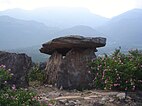


.jpg/225px-DHOLAVIRA_SITE_(24).jpg)



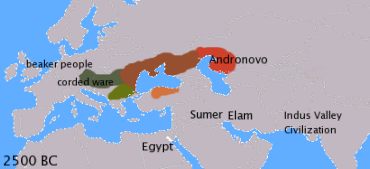
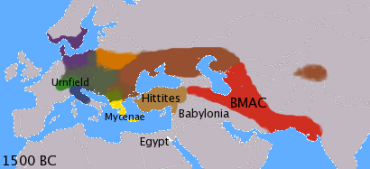
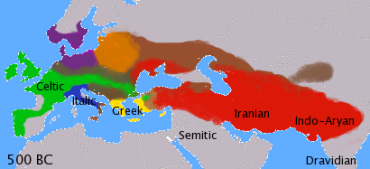
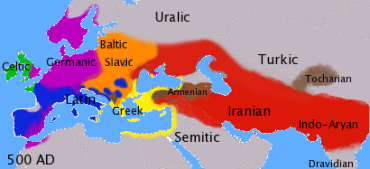
.png/400px-Early_Vedic_Culture_(1700-1100_BCE).png)
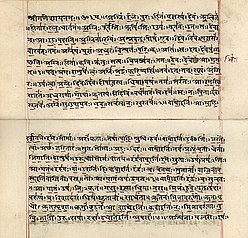



.png/338px-Late_Vedic_Culture_(1100-500_BCE).png)






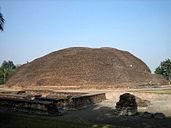
.png/288px-Mahajanapadas_(c._500_BCE).png)

.jpg/165px-I13_12karshapana_Avanti_1ar_(8481304617).jpg)
.png/288px-Magadha_Expansion_(6th-4th_centuries_BCE).png)
_at_Rajagriha%2C_the_visit_of_Bimbisara.jpg/288px-Bamboo_garden_(Venuvana)_at_Rajagriha%2C_the_visit_of_Bimbisara.jpg)

_circa_480_BCE_in_the_Naqsh-e_Roastam_reliefs_of_Xerxes_I.jpg/200px-Indian_warriors_(Sattagydian%2C_Gandharan%2C_Hindush)_circa_480_BCE_in_the_Naqsh-e_Roastam_reliefs_of_Xerxes_I.jpg)







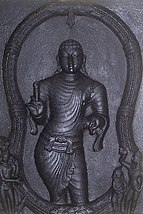










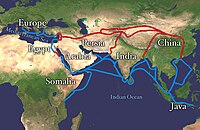




.jpg/179px-Syrian_copper_plates_-_Kollam_(c._883_AD).jpg)




.jpg/405px-AJANTA_CAVES_-_C.SHELARE_(2).jpg)

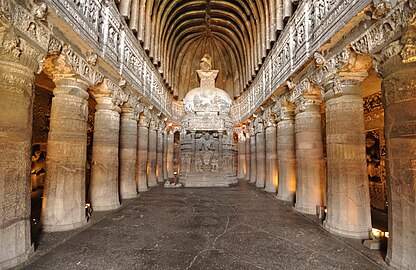
.jpg/328px-Ajanta_Cave_17%2C_antechamber_to_the_shrine%2C_Adoration_of_the_Buddha_(color_illustration).jpg)





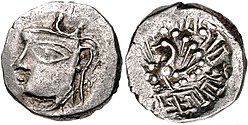
.jpg/288px-Martand_Sun_Temple_Central_shrine_(6133772365).jpg)










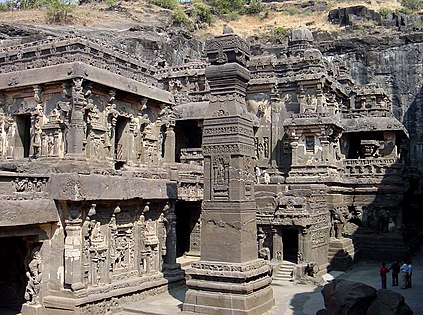
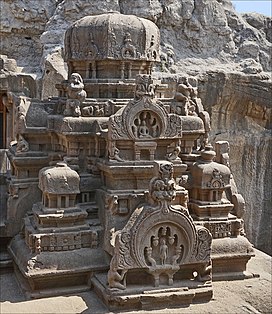


.jpg/259px-Teli_ka_Mandir_(15702266503).jpg)

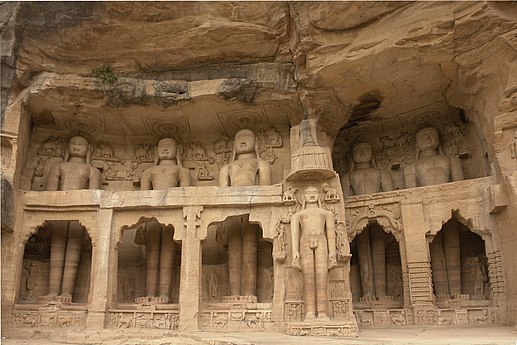

%2C_Maitreya_and_Scenes_from_the_Buddha%27s_Life_(b)%2C_Two_Folios_from_a_Prajnaparamita_(The_Perfection_of_Wisdom)_LACMA_M.72.1.19a-b_(1_of_4).jpg/800px-thumbnail.jpg)




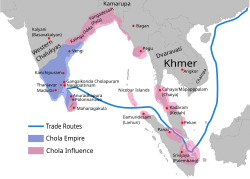


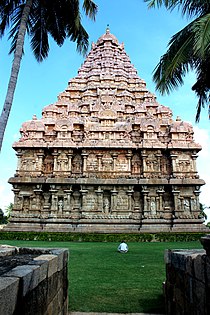
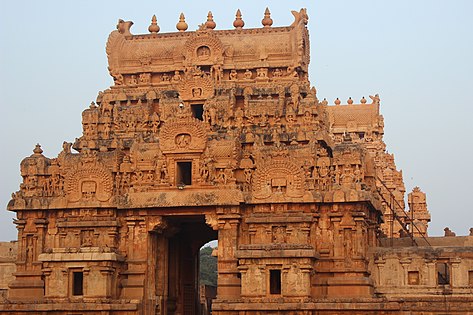
_of_the_Siddhesvara_temple_at_Haveri_2.JPG/210px-Profile_of_the_vimana_(sanctum_outerwall_and_tower)_of_the_Siddhesvara_temple_at_Haveri_2.JPG)



.jpg/150px-Somnath_temple_ruins_(1869).jpg)






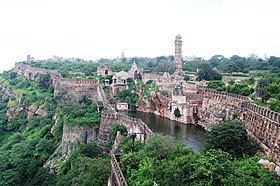


.jpg/473px-Amber_Fort_(आमेर_का_किला_).jpg)






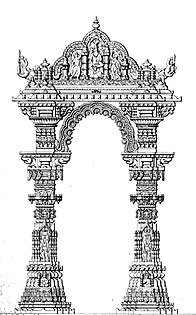


.jpg/200px-Tawang_Monastery_(Tibetan_Buddhist).jpg)






_(14465165685).jpg/200px-Le_temple_de_Chennakesava_(Somanathapura%2C_Inde)_(14465165685).jpg)





.jpeg/120px-Taj_Mahal_(Edited).jpeg)






.jpg/148px-Benares-_The_Golden_Temple%2C_India%2C_ca._1915_(IMP-CSCNWW33-OS14-66).jpg)



